| Racing the Length of the South Island |
In February this year, both Hana and I participated in the inaugural Tour Te Waipounamu (TTW) bikepacking ultra race. The 1350km course for the race was the brainchild of mountaineer, bike adventurer and Tour Divide top five finisher, Brian Alder. Brian wanted to create a route that dove deep into the South Island high country of New Zealand’s South Island ‘Te Waipounamu’. Expanding on the route taken by a previous South Island traverse and combining his own ideas with some other logical linkages, an uncompromising, and sometimes remote, course was created that promised some beautiful mountain bike travel in the South Island mountains.
Brian’s biking DNA is that of a mountain biker, so he was looking not just for 4WD tracks and gravel roads, but also at technical sections of singletrack and rugged mountain riding where capable cyclists can use the bike as a means to traverse the countryside faster than on foot. Although the nature of the course meant that sometimes ‘on foot’, and with the bike on your back, was the most efficient way to move. The route entails around 20,000m of elevation gain, and around 3000m of that vertical is gained on mandatory hike-a-bike climbs, where the field is levelled, because even the most technically skilled of riders will still have to push or carry to move quickly. The long hike-a-bikes are all rewarded with excellent, sometimes technical, descents. Overall the TTW combines a diverse medley of gravel road, double track, 4WD, farm tracks, technical on/off riding on tramping tracks, riverbeds, and sometimes untracked travel above the bushline.
The rugged, sometimes technical, riding on TTW sets it apart from the other official brevet and race events in New Zealand, and creates a course that is not only very hard, but also provides a corridor through some remarkably beautiful South Island back country, much of which is either DOC managed or locked up in remote high country stations, which the organiser spent months gaining permission for. We were lucky to be able to ride in some of these rarely visited locations.
Hana and I contributed some feedback for the race course back in August 2020, and then applied to enter (riding separately) and were accepted with a total of 50 participants. We saw it as a possibly once-in-lifetime opportunity to ride in some special high country, while also being a chance to apply some of our all round outdoor skills and Alaska-Patagonia experience in one event. Hana has a lot of experience riding ‘brevets’ which is what New Zealand calls their generally non-competitive ultras, which usually have a minimum ‘rest’ period of four hours for every 24. TTW had no such rule and was always intended to be a race, in keeping with international events such as Tour Divide. For me, the event was to be a new experience, as the only other ultras I’d done were the 36 hour Banks Peninsula Petit Brevet (2015) and the Kahurangi 500 (Nov 2020).
While we have a lot of recent experience bikepacking in the mountains of North and South America, the pace would be quicker with TTW and the length of the riding day substantially different. A typical touring day for us overseas would be 5–8 hours moving time with a full sleep every night, while in TTW we were expecting to ride up to 16 hours moving time per day and operating on much shorter sleeps (2–6 hours).
We committed to spending the 20/21 summer training and preparing for TTW. We had a pretty good endurance base from riding Tauranga–Christchurch in September and October, so continued to build on that with more specific strength training, hike-a-bike, and later sub threshold and shorter interval exercises. Most of the ideas for our training, prep and mindset came from Touring with a Sense of Urgency (Jesse Carlsson and Sarah Hammond), and Kurt Refsnider’s 4-Month Bikepacking Race Training Program. We did our short, intense training rides locally during the week and used the weekends for long 2-3 day lower intensity rides, riding and hike-a-biking on terrain that was similar to what we’d encounter in the race. A few times we went and rode specific sections of the race course (access permitting) too. Our approach was realistic, considering our lack of experience at racing: we weren’t training for race winning performances, but instead trying to ensure we had the strength, specificity and intel to ride well, survive the race and have fun while doing it.
Hana has covered how her ride went with a series of social media posts. Following is a day-by-day write up of my own experience, which was tarnished somewhat by a painful and unexpected achilles tendon flare up. This brought me close to scratching from the race, but ultimately I did my best to continue and finished in 9 days, 15 minutes.
Day 1: Cape Farewell to Lake Rotoroa
240km / 14:26 moving time / 3,123m elevation gain
The excitement and tension at the start area for Tour Te Waipounamu was electric. For many, months of preparation had led to this point. As we made our way to Cape Farewell the previous day, meeting cyclists from all corners of the country, many people reported poor sleep in previous days and an urgency to just get on and ride, finally.
37 riders and a few film crew, photographers and onlookers stood, chatting excitedly on the grass covered bluff edge above the spectacular Cape Farewell beach. It was just before 7am. Below us, the race course led down a double track and dirt road for a 900m neutralised zone, before turning left onto a gravel road and the official start of racing.
I was in a good position as the race kicked off and once the dust settled as we hit pavement after 5.5km I sat in on a fast group on the road. Favourites, Ollie Whalley, Steve Halligan and Martin Strelka had already broken away at a high pace with a handful of others.
Drafting was permitted as far as Collingwood, where we turned onto a beach and my peloton splintered finally. On the beach I settled into my own pace, letting my HR drop a bit, while most of the pack I’d been riding with sped away. It was a faster start than I’d expected and I was surprised at the lack of spark in my legs. Despite a two week taper I wasn’t feeling like gunpowder ready to explode on day one.
As I steadily ticked off the 55 KMs to Takaka I contemplated that like most people we’d been super busy pretty much up to the final hour for this race, and perhaps that had taken its toll on my recovery. Was I overtrained, or just not warmed up? Phil Castle was out with his camera on the main street in Takaka and it was good to see him for a moment as I filled up my water and had a quick stretch before continuing towards the Rameka.
I wanted to take advantage of my 2.6 inch tyres on the Rameka Track, which is rooty and rough in places so I stopped for a moment to lower the pressure and then settled into a steady pace, spinning up the climb in easy gears. Caleb Helkenn too had settled down and we rode together for a while before he let me pass. My tyres could have been softer but I didn’t want to let too much pressure out for the long pavement and gravel bash up to Tapawera; consequently my ass took a bit of a beating on the rougher parts of the track – something I’d pay for later. I pushed a bit harder on the upper part of the track, knowing the terrain suited me, and to have momentum for the technical bits and stream crossings. I didn’t see anyone else until I passed Pete Maindonald midway along beech forested section.
At the Canaan Downs road end I refilled my water and took care of admin (sunblock and chamois cream) before riding steadily to the road works on Takaka Hill. Waiting for the shuttle there, Pete caught up to me and afterwards we rode together briefly up the Motueka Valley west bank. There my legs began to feel really bad. Overall I seemed to have a lot of tension in my body: my back and legs ached badly and I didn’t feel natural on the bike. I had a nagging headache too. Pete took off down the road while I stayed at my own pace.
It was good to get the short gravel climb after the Baton ford out of the way and I knew from there it was easy to Tapawera, which I was looking forward to. Pete was resting in the shade when I arrived. After a 20 min break (my first longer than a minute or two in 161km) and a really good stretch everything changed. I ate a pie and drank a cold coffee milk but bought nothing else because I was carrying food to get me to Murchison in case I’d had a mechanical and missed the Four Square. I’d also underestimated my average speed, and so had arrived earlier than expected. Caleb, Matt Quirk and Olly Manson arrived just before I left.
Back on the road I began to feel much better, with less tension and more flow. My legs had stopped aching and I felt stronger. Caleb, Pete and I ended up close together at the start of the pylon road and it was good to get into a proper climb after so much flat road. Pete uttered that he felt quite tired as we began climbing and slowed right down. Caleb went over the top before me, but I caught him on the descent and then he passed me again while I was taking a pee just before the main road. That was the last I saw of him until Slope Point backpackers eight days later.
It was getting dark as I began the big Porika climb but I felt good and walked just 15 metres or so of the steepest bit. I took the feisty descent a bit more carefully than usual and in the dark it seemed to be over fast as I splashed across the ford into Lake Rotoroa. I’d planned out my arrival in my head and made straight for the water supply there to fill my water, added cold water to my instant mash dinner at the shelter, washed in the lake, ate my dinner, then pitched the tent back at the camping area. Already this was the longest day I’d done on a bike in hours and distance and to lie down and finally relax after a long effort was blissfully good.
Day 2: Lake Rotoroa to Hope Kiwi Lodge
179km / 12:42 moving time / 2,268m elevation gain
After 5 hours my alarm went. I scoffed down a small bag of premixed muesli and protein power, packed up and hit the road. Early morning mist hung low as I started the short climb up the Braeburn, drinking my cold 3-in-1 coffee from my bottle as I warmed into it. I was in Murchison shortly after 0700 and talked to Pete briefly as he filled his bottles at the public loos. I grabbed a pie and a chocolate milk in the Four Square and was just about to leave when Dulkara turned up. She said she’d seen my ‘dot’ in town and came to find me. She’d ridden right to Murchison through most of the night and had only slept an hour and a half. After a few more minutes we left town together and chatted much of the way to the start of the Maruia Saddle climb. Shortly before that she’d said she felt sleepy and on the climb she soon dropped out of sight. The previous day I had been alone most of the 14.5 hours I had been riding, so it had been a nice mental refresh to have some company. Even though strangely I didn’t feel much like talking. I seemed to be concentrating quite hard on moderating my effort and staying efficient, and that didn’t leave much space to converse. Looking back I hadn’t relaxed into the race yet.
The previous day my right achilles tendon had ached a bit but then settled down. My patella tendons had ached too but then eased off and I put these pains down to transitional adjustment to long hours on the bike and a slightly different stress. It’s not unusual for connectives and joints to ache or inflame for a while and then subside in these events. But that morning my left achilles began to get sore too, which is more unusual for me.
Maruia Saddle was a really pleasant climb and descent though mossy beech forest – one of the best dirt roads in the country I reckon – but the rest of the ride to Springs Junction via Dredgeville dragged a bit and I was happy to get there and take my first sit down break, nearly six hours into the day. Pete was just leaving as I arrived. I plugged in my phone and ate a filled roll and chips with a coffee milk. My achilles had begun to hurt persistently, so I dropped my saddle slightly and moved my cleats a bit further back.
After a steady climb over Lewis Pass I arrived at Boyle Lodge with no other riders in sight. I still had a bit of food left on my bike, so I left that there and filled my pack and bike with the 2.5 days of food parcel supplies I’d need to get to Methven. I’d estimated it would take me about 30 hours moving time for that section and allowed 7500 calories + 40% in case of accident/bad weather/outright hunger. At the same time I redistributed my total load to offload a bit of weight from the front of the bike and to put heavier items such as tools and electronics in my pack for the hike-a-bike and technical riding. The section from Boyle to Methven is 243km with 4500m elevation gain and includes three tough hike-a-bike sections with a lot of technical singletrack or vague (to none) ground trail above the bushline or in riverbed, between bits of dirt road.
I’d ridden/hike-a-biked the Windy Point to Lake Sumner section (Hope Valley/Kiwi Saddle) before and walked it on Te Araroa, so I was looking forward to it as I knocked off the final section of highway leading to Windy Point. After a short stretch at the shelter I was away, grovelling over the swingbridge and into the first section of track before the gate in the deer fence, then I rolled my front tyre on a small rock on the track and went down hard on my left side. I cut my little finger quite deeply and had to give it direct pressure for a while until the bleeding stopped enough for a plaster. I gave myself a little lecture at that point to calm down and be more careful. That wasn’t the last time I’d talk to myself!
The rest of the track went really well. I was pushing pretty hard and trying to be efficient with my movement over the constant on/off nature of the track. Roots, gullies, rock, drops and fallen trees all require constant dismounts and problem solving bike maneuvers to negotiate, but I hit a nice flow and made Halfway Hut in good time, and had fun on the way. I caught Pete as he was just about to leave the hut and we set off in gathering darkness for Hope Kiwi Lodge. Crossing the grassy flats Pete had a small crash and cut his knee but neither of us stopped to assess it.
We made Hope Kiwi Lodge at 11pm to find Jeff Lyall there, just settling in for the night. He’d had quite a hard time on the HAB and slowed down a lot from his very fast previous two days. In the light I saw Pete’s knee and exclaimed what a mess it was, with a big patch of skin missing and blood running down to his ankle, but he looked at me with surprise and said he couldn’t even feel it. Amazing what a bit of adrenaline and legs dulled by two hard days of riding and walking can do to the pain response.
Day 3: Hope Kiwi Lodge to Poulter River
98km / 12:39 moving time / 2,297m elevation gain
The three of us left the hut close together around 6am (a late start in retrospect), but Pete took a wrong turn at some point and Jeff and I lost sight of him as we neared the bush and climb to Kiwi Saddle after the horse trail. Jeff also dropped back and by the time I got to the saddle I was alone again. I moved steadily through to Lake Sumner, with the only thing holding me up being a skinny vine tangled around my cassette on the spoke side, which stopped my bike from freewheeling. I had to use a Leatherman and my spork to dig it out and get moving again.
It was really windy and raining lightly when I forded the Hurunui River and riding up the true right towards the Lake Mason climb it began to get colder. Even with the effort of climbing up the steep farm track I had to stop and put on my ¾ overpants and gloves and then I stopped again nearer the lake to put on another layer. My achilles pain had been worsening all morning, and I think the previous evening’s HAB on top of a bit of inflammation had set it on a downward spiral. The ‘this too shall pass’ mantra did not seem to be cutting it with this one.
I sometimes pedalled on my heel to offload the tendon but was really enjoying being in new territory and the rain had stopped as I approached Deep Creek. At the bridge over the North Esk I stopped for lunch and to collect myself before the difficult 900m 12km HAB over the Dampier Range. Once started I seemed to make good time and had plenty of energy; pushing on the low angle grassy sections and carrying when I could not push easily. The ridge starts out very steeply before kicking back for a while, and then undulates its way up to 1465m sometimes through thick tussock and spaniards. It was quite windy and drizzling as I neared the top of the main climb. Even with the intensity of pushing and carrying a loaded bike I got cold in the southerly wind and that was with most of my storm gear on.
The steep gully descent and rolling sidle to the tarn, and beyond to gain the ridge was a hard grovel in deep, wet tussock without much track. But I pushed on as fast as I could until I got on the descent to Andersons Hut, most of which I rode. It was nice to be on the bike again after a long walk and carry.
The drizzle had abated but it was cold and my fingers were numb when I arrived at Andersons Hut, nearly 5 hours after leaving Deep Creek. Andersons is a delapidated hut dating back to 1955, with graffiti on the walls recording a history of tramping and hunting parties back to the 70s. I ate some food and took the time to set my cleats even further back, as the static position descending was starting to hurt the tendon more than the riding and I wanted to offload it more. By that time a steady shiver had set in and I didn’t seem to be able to warm up, so I drank a cold 3-in-1 coffee, set my alarm for 30 minutes and lay down in my sleeping bag.
I woke up to the alarm and immediately felt warmer and more motivated. It was after 1930 but I decided to knock off the 40km no camping section between Andersons and the Poulter River, figuring I’d stop at the Poulter Valley DOC car park to camp. The evening was calm and cloud hung low as I set off down valley. The upper Esk is a very beautiful Canterbury high country landscape and despite the pain in my tendon I really enjoyed the ride as darkness slowly set in. On the steep climbs I continued to pedal on my heel, but the longer I rode the less the tendon seemed to hurt, especially if I raised my heel.
It was after midnight by the time I stopped and the temperature was dropping with the clearing skies. With camp set up, it was another feed of cold mashed potato and tuna before I wriggled deeper into my sleeping bag and slept. I must have been quite tired because I set the alarm for 7.30 (6.5 hours sleep) knowing the sun would encourage me to get going in what I knew would be a cold morning.
Day 4: Poulter River to Methven
124km / 10:56 moving time / 1,850m elevation gain
I woke often in my summer-weight sleeping bag, despite having most of my clothes on. In the morning there was a crust of ice on top of the water in my bottles and my wet socks had frozen.
The sun soon thawed everything as I got moving on the gravel road. My tendon had seized overnight, I struggled to walk, and I was starting to get more concerned about whether I would be able to continue. I decided to try to get over Cass Saddle because from there it was an easy ride to Methven and I could make a call there. It was good to see Sue and John O’Malley set up as Trail Angels on the side of the road before the Mount White Bridge and I stopped briefly to drink coffee and eat a bit of ginger slice. Further on at the Cass Valley carpark, Nina Stupples was also set up, with drinks, boiled eggs and chocolate brownie. A real treat!
With my tyre pressures low I rode most of the way to the start of the actual HAB, where the track leaves the riverbed climbing to Cass Saddle Hut, but once on the steep tramping track I had to move really slowly to care for the tendon. If I stood with my foot turned out or did not stand on my toes I could manage forward movement ok. I pushed on without stopping until I got to the creek just before the hut, took some panadeine, and immersed my ankle in the icy cold water for 15 minutes while I ate some pita bread and nutella for lunch. It was a chance to calm the tendon down before tackling the carry from the bushline up to the pass. I’d done this section before and knew what to expect.
My spirits lifted with the climb out of the way, and I quickly walked down the first part of the steep spur, before ripping the rest of the way down the stunning beech forest trail to Hamilton Hut. This singletrack ride is one of the best on the route and once again I was stoked to have a bike set up that allowed me to fully enjoy it. I didn’t stop at Hamilton Hut, and knew what was coming with the long double track, multiple crossings and riverbed ride down the rest of the valley. Even two months after our training ride there and with dry weather I was amazed how much water was still covering the track in places, and the river was not a lot lower.
From the Harper River bridge I had a block headwind all the way down valley until after sunset on Coleridge Road. Then the temperature dropped and I was pretty cold by the time I got into Methven at 2300. I had a small food and supply parcel at the campground, as well as a cabin booked so I headed there. By the time I arrived, the pain in my tendon was making walking difficult and I realised I was on the brink of having to quit the race. I ate mash and tuna again and decided to have a long sleep with my foot elevated to try to reduce the now significant swelling. The area of the tendon just above the attachment to the ankle bone had taken on a bruised appearance. It was clear to me that losing time was a better evil than having to pull out of the race completely, so I decided that if I had to take a day to recover the tendon and get possible treatment it was better to do that and continue slowly than quit. I’d take two days off if I had to.
Day 5: Methven Zero Day
Walking was still very painful when I woke, but the swelling had settled down a bit after sleeping with it elevated, so I ate, packed up slowly and made my way to the cafe where I could see a cluster of dots, most of whom had gotten up early and ridden down from the Trust Power Camp. More were on their way from Hamilton Hut. Despite my bad situation it was good to see other racers after two full days on my own and I enjoyed the buzz and urgency as people wolfed down breakfasts, resupplied and waited for bike shop repairs. I saw a few people leave and a few arrive, including Brendan, Olly, Matt, Andrew, Pete, Jeff and Dulkara.
Jeff had developed tendinitis in the fronts of his ankles from the hike-a-bikes and decided, like me, to take a day off in the hope of some recovery. Loaded up with treats and a big bag of ice from the Four Square we rode to the motel and checked in. I’d already tried every physio or massage therapist in town for some treatment but was unable to get an appointment, so a hot bath, lots of ice and another sleep it was. I also talked to my friend Katie, a physio, to get some advice on how to best tape it to offload the tendon.
Hana arrived at 6pm and it was great to catch up with her and share race stories. We ate dinner that night at the pub with Geof, Scotty, Jeff and Rachel. Hana, Jeff and I agreed to leave at 4am if my tendon felt ok, but when the time came I still could not walk without a lot of pain and restriction, so I went back to bed while Hana and Jeff left to ride together.
Day 6: Methven to Royal Hut
142km / 10:02 moving time / 2,318m elevation gain
I woke four hours later and seemed to have partly turned the corner in getting some ROM back in the ankle – walking was slightly less painful, but the thought of pushing my bike up Bullock Bow and Stag Saddles was daunting to say the least. I’d made it over Cass Saddle, with care, so it wasn’t impossible, but I was concerned about the risk of rupture or long term damage. I lay in bed flicking through the race reports on social media, reading medical papers and seemed destined to another day in town. Then I looked at Maprogress and saw that I was the last in a long line of dots now strung out all along the South Island, and soon to be significantly distanced. The FOMO came on strongly at that moment and even though my primary goal all along had been to simply finish, I didn’t like the idea of no longer being ‘part’ of the race and spending days playing catch up. The other factor was the weather: the forecast indicated NW winds the following day, which would mean a long, slow, uphill battle into headwinds to get to Mespotamia Station.
My options were to (A) scratch; (B) stay another day; (C) do a very easy day to Peel Forest (65 flat Ks); or (D) just ride and see where I got to.
I couldn’t handle the thought of A yet, and I wondered if I’d gain much more from B, overall. C was a strong option and D seemed really unlikely, but possibly worth trying unless I wanted to contend with a possible headwind. I was concerned about getting in as far as Royal Hut but then being unable to continue, due to the tendon packing up completely, making rescue necessary..
So I snapped into action and left – to ride at least as far as Peel – via the cafe and Four Square. It was 1030 by the time I got riding, but I felt motivated. If I kept my heel slightly up and turned in pedalling was pretty manageable on the flat road at high cadence, and the pain seemed to improve with movement after an hour or two.
The day was getting very hot as I turned NW and rode to Peel Forest for a quick iced espresso and water refill. I’d already made my mind up: It’s a long gravel bash up the valley to Mespotamia, but a generous tail wind, panadeine and podcasts helped me along to the station and the beginning of the big climb over to Felt Hut. The sun set as I topped out the climb, and the steepest bits had me pedalling with my heel again, but it felt good to be making progress. The landscape around and beyond Felt Hut was beautiful and I was enjoying the solitude as I rode through the quiet stands of beech forest and into the 800m climb up to Bullock Bow Saddle. This long, steep climb is only rideable in a couple of short sections so I settled into a methodical flow of pushing while protecting the tendon with careful movement. After all the dithering in Methven it felt really good to get back into the TTW and be in some of my favourite surroundings. I topped out at 2130 and took a photo of my bike leaning against a post, while lingering orange and purple tones of sunset faded from the sky.
The double- and single-track descent through scree slopes and tussock was fantastic, even in the dark and once in the valley I continued to ride up to the hut, arriving at 2300, where nine TTW racers and eight trampers had settled in for the night. The hut was surrounded by tents and bikes. Surprised to hear a bike freewheel into camp, Geof Blance asked who it was and then told me where I could find Hana in her tent.
Hana had not expected to see me again, so when my voice disturbed her sleep, she thought she was dreaming. Along with most of the others she’d been fried by the heat climbing Bullock Bow in the hot afternoon and had decided to end the day at an early 1900 at Royal Hut to regroup for the next hard HAB over Stag Saddle. But I was motivated to have a short sleep and a full day of progress, if possible, the next day. We talked briefly and agreed to wake up at 0400 and climb to the saddle. We’d both been there before and knew what to expect.
Day 7: Royal Hut to Otematata
169km / 13:06 moving time / 2,065m elevation gain
After about four hours’ sleep I was up and readying to leave. Hana and I made good progress in the dark up the mostly untracked route to Stag Saddle. There are occasional marker poles with reflective stickers, but sometimes there is no ground trail. In many places we carried the bikes over thick tussock or up the steeper sections. We agreed to part ways on the upper slopes, knowing I’d move faster on the descent, but it had been a fun 3.5 hours, routefinding together, taking photos, chatting and enjoying the same synergy we’d experienced on the trail in South America.
It felt really good to be ‘back in the race’ after my big effort to get to Royal Hut, and waking there that morning the crepitus had gone from my ankle and the pain had receded, but by the time I reached the saddle it was starting to get very sore again. The hardest HAB was behind us now so I was certain I could nurse it to the finish. The descent from Stag Saddle down Snake Ridge has to be one of the most photogenic sections of single track in the country, and in many ways it’s a distillation of everything that Tour Te Waipounamu is about: finding yourself riding incredibly good tracks in the most beautiful, and unlikliest of places.
After Camp Stream Hut it was back to grovelling among the riverbed, spaniards and matagouri for a while until I reached the rideable singletrack shortly before Round Hill. Even there my achilles was painful as the ‘cranks level’ position you generally need for that fast singletrack put a lot of stress on it. I’d been on the go nearly 8.5 hours when I reached Tekapo and took my first break of the day longer than a minute or two. The bakery was a welcome sight and I dried my feet while scoffing down food in the shade. I collected a small food parcel with some extra sunblock and chamois cream from the YHA, picked up a couple of things from the Four Square, and continued.
The lakes were like mirrors and it was a classic, baking hot Mackenzie Basin summer Saturday. My tendon was much happier on the easy spinning, flattish 70km ride along to Haldon Arm campground. I stopped there for about 20 minutes to collect water, rehydrate, cool down and eat. In pre-race planning I’d expected I might spend the night there, but it was only 1930, so I committed to continuing for four hours through the no camping section of Black Forest Station to Otematata. I was also conscious that I’d done a lot of night riding since Methven and should get batteries charged back up in case I didn’t get another overnight opportunity, so I called ahead to the Otematata Eatery, Bar & Lodging to book a room.
The hilly dirt road ride over to Otematata was uneventful except for seeing six wild wallabies and running right over two stoats, one of which I had to chase down. I was tired by the time I got to Otematata around midnight, and the tendon had seized up again, so I limped slowly into the bar, which was not very busy, except for a half dozen drunk locals and some very loud karaoke. The couple who run the place were very accommodating and gave me a room for $30. Chris Byrch had been trying to sleep in there but had asked to change rooms due to the Karaoke. A pint of Speights, a pint of lemonade and some deep fried bar snacks made a good late dinner.
Day 8: Otematata to Oliver Burn Hut
139km / 11:19 moving time / 2,924m
I gave myself a decent sleep (6.5hrs) in the hope of more tendon recovery and was up at 7.30 but after an incredibly inefficient pack up, and brief meeting with Hana (who’d gotten up very early) at the On the Spot, I wasn’t away until 9am. Chris was away well ahead of me that morning, but I wondered when and where she might stop for the night and if there was a chance of catching her. Pete and Andrew were just a few hours ahead of me too and I entertained the idea of trying to catch up to them that night, for the company as much as anything.
Panadeine took the edge off the pain as I began the steep ride and push out of Chimney Creek but I made reasonable time on the 15km climb to the top of the Hawkdun Range. It was a perfect day: very hot low down, but light winds up high kept the temperature comfortable. I stopped on a rocky outcrop on the descent before the next climb to eat some tortillas and nutella and took my time, soaking up the exposed, barren landscape and expansive views. It felt like I was on the roof of New Zealand, and I seemed higher than the snowy peaks of the Southern Alps in the distance. As forecast, lenticular cloud flowed over the top of Aoraki Mount Cook, while Aspiring, west of me sat in the clear. It was an amazing view.
The fast and sometimes rocky descent down into Ida Valley is a wild ride and once again I was thankful for big volume tyres and a plush suspension fork. I was pretty excited when I rolled into the Oturehua pub in the early evening, glad to have the Hawkduns behind me and feeling confident for a straightforward night ride because I’d already ridden the rail trail and Rough Ridge section to the Teviot Station turnoff in training. I drank a pint of lemonade, an instant coffee with cold milk and ice, ate a big bacon and egg sandwich and took one to go, along with two ham and cheese croissants. I knocked back a couple more drinks from the fridge while I attended to admin. The bar woman pressed two peanut slabs into my hand when I collected my parcel of food and said I should enjoy them for dessert. The staff there seemed in awe of what the riders on TTW were doing, but even so probably could not quite imagine how challenging the route was.
Maprogress indicated that Chris was about halfway down the Ida Valley and that Pete and Andrew were about three hours ahead of me; a gap I thought I might be able to bridge if they were tired and decided to sleep longer that night. I decided I’d ride on as far as Oliver Burn Hut and take a short sleep.
The ride down the Ida Valley went by fast and I was in good spirits. I turned my head back to look at the Hawkduns as I sped down the rail trail in the evening light. They formed an impressive barrier at the head of the valley; so much bigger than anything else around, and are quite a symbolic crossing in the route – the last of the HAB and long, sustained climbs were over. Although, as I discovered, that did not necessarily mean it was going to get any easier. I could not pass the old Moa Creek pub without lying down on the dusty old couch under the verandah to shut my eyes for 5 minutes. From then on the ride up to the hut was mostly in the dark and it was great to arrive there at midnight, with the hut empty, a mattress to lie down on and a bacon and egg sandwich and croissant for dinner.
Day 9: Oliver Burn Hut to Waikawa Bay
211km / 14:21 moving time / 2,302m elevation gain
After 2.5 hours my alarm went. I was really groggy and limped around the hut organising myself. Once I got warmed up though I felt pretty good. I enjoy riding at night, when your periphery is reduced to the pool of light from your torches and your perspective of time and distance seems to distort. It was just 6km over to Serpentine Church where I’d seen Chris was sleeping, but she’s an early riser and as I approached I could see the beam of her light already climbing up the hill above the turn off to the church.
When I caught her we conversed briefly – neither of us much in the mood for talking at that hour – but Chris said her light was not working well and I gradually put some distance between us over the rolling terrain. I hoped Andrew and Pete might not be up yet. Between Oliver Burn and the Teviot turnoff I only stopped once to fill my bottles and to snap a couple of photos of sunrise over Lake Onslow. But at the turnoff I checked Maprogress and saw the pair were well on their way already. I’d gotten within about 18 kilometres of Andrew. So close yet so far.
I’d been going about 3.5 hours when I got to the turnoff, and shortly after there seemed to hit some sort of wall. My energy dropped, I started pedalling squares and my willpower and motivation faded away. It wasn’t just an energy bonk; it seemed to be psychological too. Perhaps it was spurred on by tiredness, lack of sleep and then realising I wasn’t going to close the gap. I struggled along the interminable rolling farm roads all the way to Beaumont, where I detoured to the pub. This was my only bad day in terms of performance, energy and psyche. I should have slept 30 minutes at Beaumont, but I decided it might be better to do that in Lawrence 20-odd km down the Clutha Gold Trail. Instead I dithered around drying my feet, drinking lemonade and trying to eat, but I had little appetite.
Chris rode into Beaumont just as I was riding out. I felt horrendous on the first quarter of the Clutha Gold trail until I warmed up, and then I must have been going ok, because a cycle trail rider asked if she could swap her bike for my e-bike!
The anticipation of Lawrence gave my appetite a boost. I was still feeling tired and indecisive when I got there, but I downed a pie, coffee milk and chips, and talked to Rob (filmmaker) and Eileen while they filmed me. I think I might have rambled a lot, but they said most people had been by then! I was wasting so much time that Chris had arrived, shopped and continued by the time I got going again. I was so sure my day was going to be over soon, due to tiredness, that I called the hotel in Clinton to check if a room and food would be available in the evening.
Even with my blood sugar back in order I was feeling super tired on the hills over to Tuapeka Mouth and was starting to fall asleep on the bike, so when I saw the inviting grass and shade of a church yard I finally stopped for a 30 minute nap. Sleeps this short are restorative, but easy to get going again from, so as soon as my alarm went, I got my shoes and helmet back on and was away. After 10 minutes or so I realised I was feeling a lot better; my motivation and concentration were improved. Somewhere along the way, despite my sleep, I’d passed Chris, and she rolled into Clinton shortly after I did at around 1915.
I sat down outside the shop and drank an 800ml bottle of electrolytes, and thought about what to do next. Chris arrived and commented that she felt so tired she could not think straight. I felt the same. But I ate some takeaways, drank a milkshake and tried to part the thick fog that consumed my brain. I looked at the remaining route on OsmAnd: 92km and 754m of climbing on pavement and gravel; what you’d call an easy/moderate touring day, by itself, on paper. I’d already been on the go since about 3.30am. I knew I could push through slowly and knock it off tonight, but the thought of a 3am finish in the dark, alone, seemed anticlimactic after all the effort I’d put in to get there. The effort had started not at Cape Farewell nearly nine days earlier, but months earlier; with all the thought, training and preparation I’d put into this event. I wanted the finish to feel as good as possible. So I decided that there would be no better time to arrive than dawn.
Chris left shortly before me, and I rode out of town shortly before sunset thinking I’d ride about halfway and then bivi for a couple of hours, waking in time to finish off the ride for my glorious dawn arrival. Mentally my drive was pretty low. The ride dragged as I rode quiet gravel and paved roads in the dark. Every time I thought about stopping, the surface or gradient would get easier, or my motivation would creep back. Midnight passed. I checked the map and decided that the domain at Waikawa looked like the best place to stop; there would be toilets, water and grass to bivi on. And it was only 20km from there to Slope Point. Perfect.
I arrived at 2am. I was happy to finally get off the bike, but I actually felt quite alert and motivated – excited at the thought of a bit of sleep and short ride to the finish. I washed my face and legs, filled all my water and then sat in my sleeping bag and drank an Up n’ Go and ate a sandwich before setting the alarm for 4.45am. I was asleep immediately.
Day 10: Waikawa Bay to Slope Point
20km / 00:59 moving time / 226m elevation gain
When my alarm went, I leaned over and turned it off, but hadn’t fully woken and immediately fell back into a deep sleep. I woke again an hour later, needing to pee and realised immediately something was wrong: there was a faint red glow on the horizon and the ambient light suggested dawn was coming. I was going to be late for sunrise!
I packed faster than I’d imagined was possible, sculling a coffee milk as I did so and took off down the road at full speed, while the predawn coloured the clouds right across the sky. Without warming up I still managed to cover the 20km to the finish in 59 minutes, despite crawling a bit on the final hill. From the top of that paved climb, just 2km from the Slope Point beacon I could see the sun had just breached the horizon, but low cloud obscured its light. From there it was all downhill to the finish. I coasted down the road, threw open the gate and raced down the grass to the southern-most tip of Te Waipounamu. The morning was calm and mild and there was no sound apart from the sea rhythmically breaking on the sea cliffs below. There was a bike leaning on the beacon and I found Chris asleep in her bivi bag on its concrete base. She woke, and as we congratulated each other and began to take photos, the sun rose above the cloud and spilled golden light onto the point.
It was over.
Tour Te Waipounamu
– Cape Farewell to Slope Point, 1346km
– 19,373 total elevation gain
– 9 days, 15 minutes
Thanks to Brian Alder for an incredible job bringing this event together, to the landowners for allowing us to traverse their land, to the trail angels and the people who worked in the wings to dot watch and provide race updates.
Summary
Body and Mind
Overall I went into TTW feeling well prepared, sufficiently rested and with knowledge of what to expect on the course. Having not trained seriously for racing since the mid 1990s, my training plan was definitely an experiment of sorts, but it seemed to give me the requisite endurance and reasonable speed over the wide variety of terrain. I lacked top end speed, but that’s probably indicative of a lack of racing and higher-end riding for the past 25 odd years and perhaps a flaw in my training (not enough intensity, or a too-short strength phase to build on later). All my touring has given me a good understanding of my own sustainable pace for day-after-day riding, shown by the fact that I felt pretty good every day until the last full day.
The tendon issue (paratenonitis, an acute inflammation of the fascia/sheath surrounding the tendon) is hard to explain. I had quite severe issues in both achilles after spending ~6 months hiking the Te Araroa trail in 2015, and had months of rehab afterwards. Apart from a minor flare up in my right tendon in Alaska in mid 2016 I’ve been problem free since and none of my training rides caused any significant pain, just mild aches in the right tendon. The left tendon flare up which nearly ended my race was totally unexpected. Mitigation by lowering my saddle, moving cleats back and putting a foam heel raiser in my shoe did very little to reduce the pain. Those changes made the difference between scratching and continuing, I think, but overall the symptoms worsened throughout. After I finished I spent two days hardly able to walk on it.
K-Tape helped a little bit, by decreasing the force on the tendon (softening/reducing the ROM), but I think there is a placebo effect too in that it makes you protect it more, especially while walking. Had the race not had any HAB, then perhaps the issue may have settled down during the course of the race. I did a lot of loaded HAB and long days (up to 11 hrs moving at varying intensity) in training so my connective tissues should have been ready, but perhaps it was just the slightly harder and longer first day that tipped it over the edge.
Unforeseen physical or mechanical issues are common in these events, it’s how you deal with them that’s important. Problem solving and self reliance has been a big part of touring overseas and so my mindset was to be prepared for such problems and to try to find solutions, with finishing the event being my priority. My view of the achilles problem around day three (Poulter River to Methven) was that it was a disaster and I was seriously disappointed about it. But I got my head around it in the end (in Methven) and reframed the problem as a challenge to rise to. It took me a little while to remind myself that finishing was what it was all about for me, but once I did that, I saw the tendon problem as an opportunity, not an obstacle: if I dug deep, accepted a change of pace and was prepared to manage the issue as I went, I would try to finish.
My 36 hour rest in Methven (19 spent sleeping), made a big difference not only to the inflammation but also my recovery. Continuing with an injury and managing it as you go is much easier when you have energy. I thought that after Bullock Bow, Stag Saddle was going to be very slow and difficult, but my symptoms settled (temporarily) with a short sleep. This is a reminder that the body will sometimes adapt and/or recover unexpectedly. So never give up. Another phenomenon that I experienced was that the body will adapt to pain after a while. Once a certain level of pain is tolerated, your body will begin to consider that as the ‘new normal’ and I think this made continuing easier over the coming days.
The Bike
TTW entails a lot of rough and technical riding and I wanted to ride a set up that would tackle that terrain while allowing me to have fun on it and enjoy the mountain biking. I accepted that might come at the expense of some speed on the pavement and smoother gravel roads. I think I got that about right with the bike overall.
Vittoria Mezcal 2.6s are a huge tyre (more like a 2.8 or narrow 3), but pumped up hard they roll fast on smooth roads. Next time I might go for something slightly narrower, at least on the front, where the suspension fork takes up the shock. We used Maxxis Rekon 2.6 for Kahurangi 500 and for training rides but being a softer compound they squirm more on pavement and roll slower. However, they are a narrower tyre, so could be good up front with a Mezcal 2.6 on the back. The extra traction and cushion of bigger tyres was especially helpful on the rooty singletracks, stony riverbeds and excessively rocky descents such as Bullock Bow and Walking Spur. I tend to adjust tyre pressure to suit the terrain but usually only once or twice per day.
Bigger rotors (180mm) and a 4 pot brake on the front armed the bike well for the fast and technical descents. I had no mechanicals, but added some extra sealant to the front tyre in Methven after it started leaking slowly. One point of note is that the hard loaded riding was enough to make a pair of brand new tyres look years-old and although there are no actual cuts, the sidewalls on the Mezcals are quite worn. My new shoes ended up in the same state. These were just-broken-in Specialized Rime 2.0s which have some flex and a grippy high carbon rubber Vibram sole, making them perfect for the extensive HAB.
I was happy to not have an aero-bar, thus saving weight as well as clutter for the HAB. Instead I used a pair of old bar ends placed inside the grips on my 32 deg sweep ti handlebar. These and any other visible handlebar were covered in road bike bar tape. This was sufficient for an alternative hand position that was also slightly more aerodynamic, but does not provide the full advantage of aero-bars, or quite as much comfort. I did not suffer from any hand or foot numbness from the race.
Bike specs & key Items of Kit
Otso Voytek 27.5+ with 2.6 Vittoria Mezcals on Hope & DT Swiss alloy wheels.
Fox 34 Step Cast fork.
Sram XO & GX drivetrain with 10-50 cassette and 28t Wolftooth stainless chainring.
Shimano Deore hydraulic brakes (2 & 4 piston).
Watson Revelation Ti handlebar with 32 degree sweep and a couple of ancient Onza bar ends mounted as mini-aeros.
Ergon GS1 grips.
Selle Anatomica X2 saddle atop a Thomson Masterpiece seatpost with quick release for the steep and technical downhills.
Revelate Designs bags throughout: Pronghorn front harness, 2 Mountain Feed Bags, Magtank 2000, framebag and 8L Terrapin.
Extra water, food and essentials inside an Osprey Talon 9L backpack.
30 year old Macpac Pinnacle sleeping bag, inflatable mat and Big Agnes Scout 1 Platinum tent.
No stove.
Led Lenser MH10 head torch and Fenix UC35 torch mounted on handlebar.
Biomaxa Bio Lube and Pro Ride Chamois Cream.
Do you enjoy our blog content? Find it useful?
Creating content for this site – as much as we love it – adds to travel costs. Every small donation helps, and your contributions motivate us to work on more bicycle travel-related content.
Thanks to Otso Cycles, Wolftooth, Big Agnes, Revelate Designs, Sungod & Biomaxa

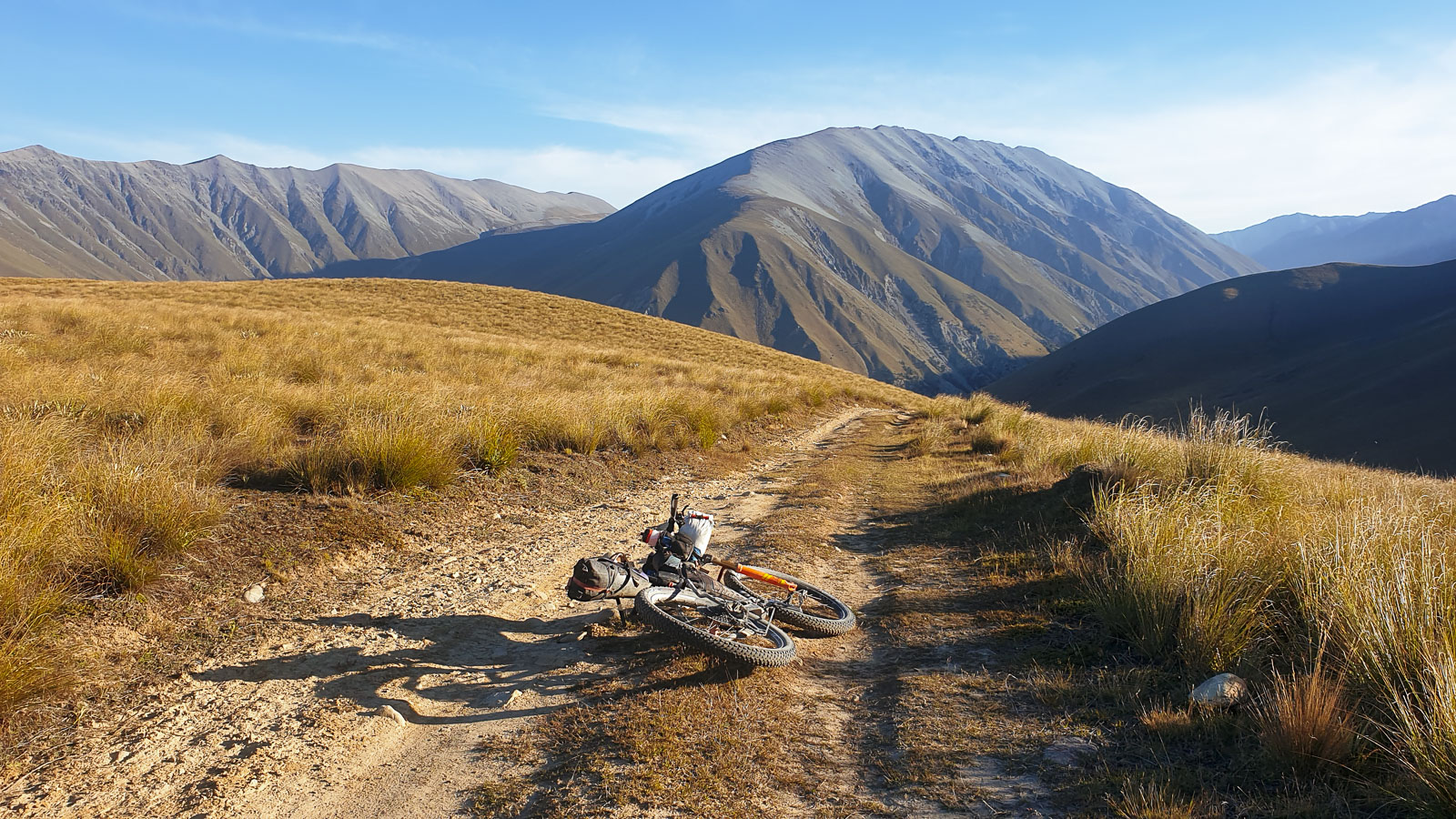
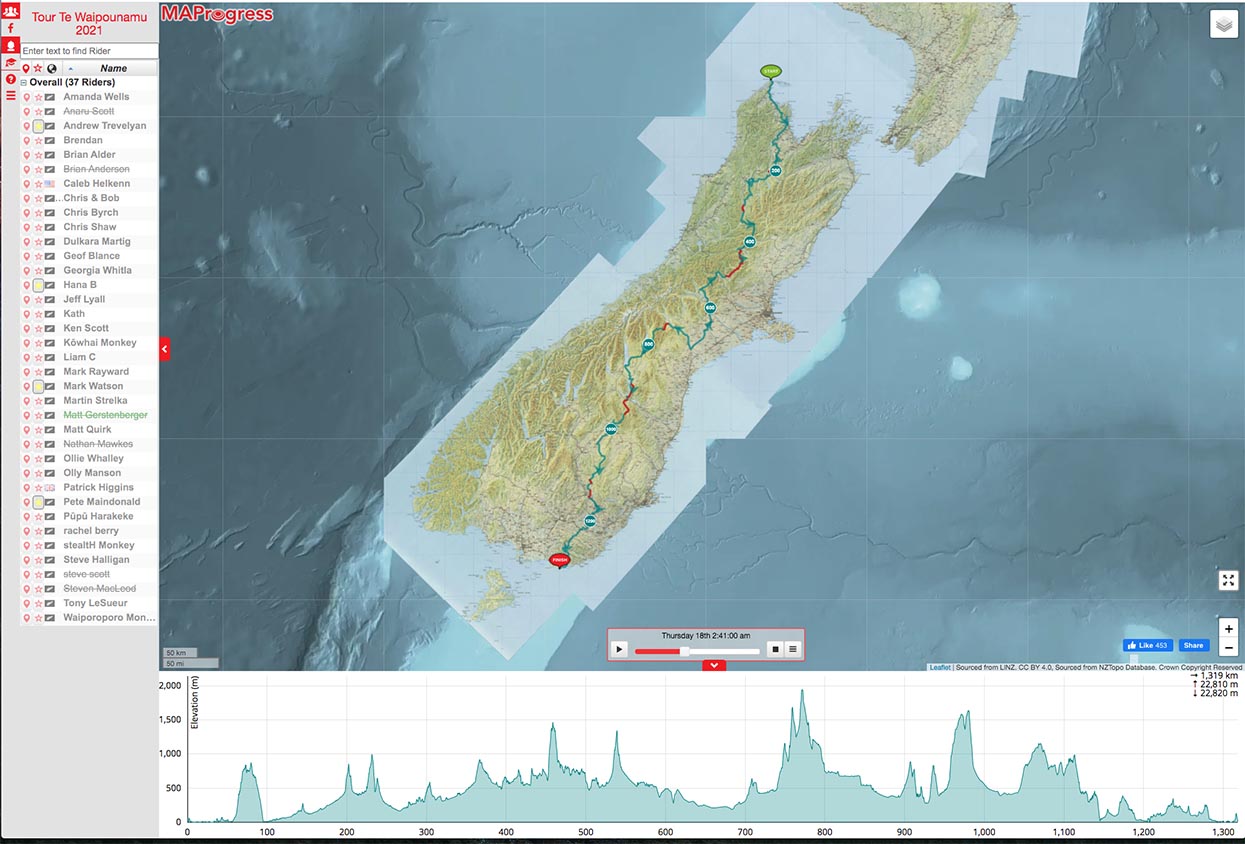
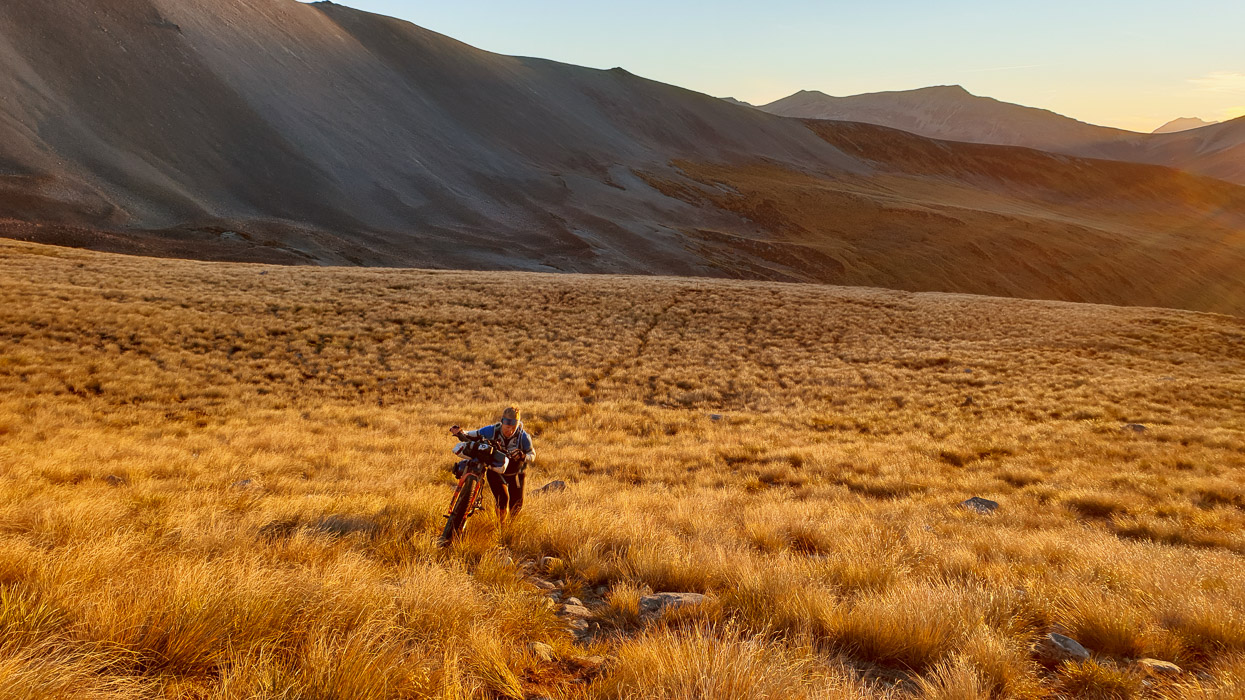
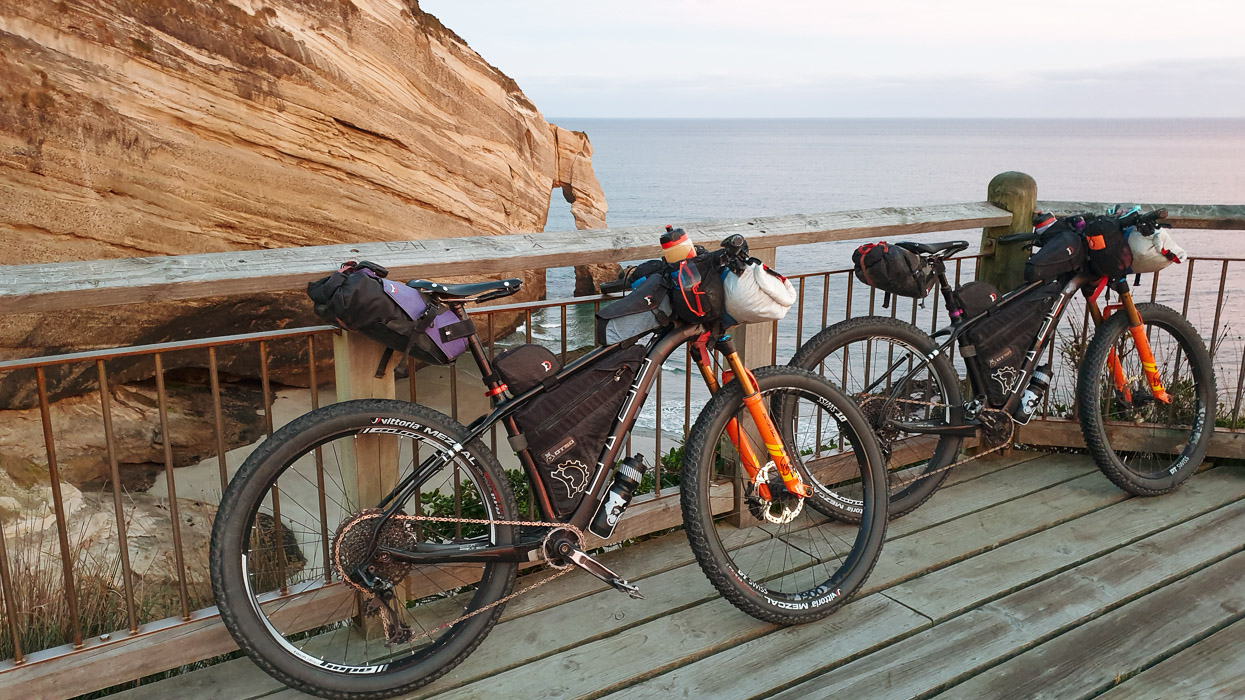
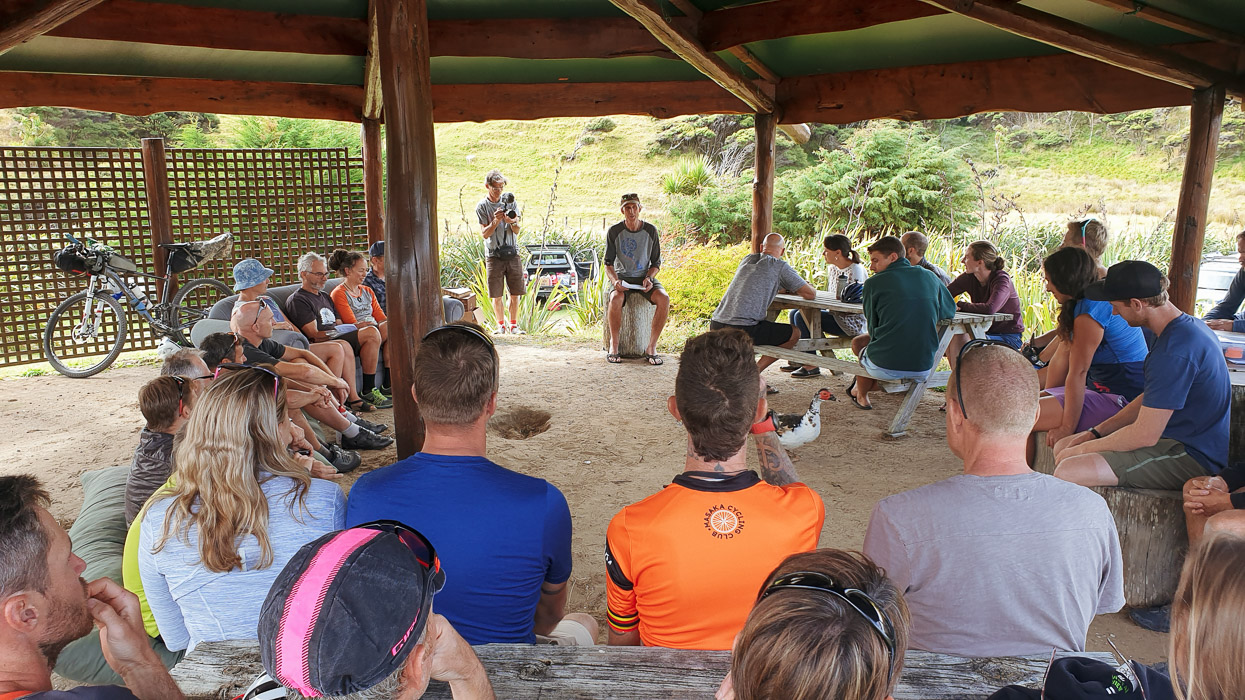
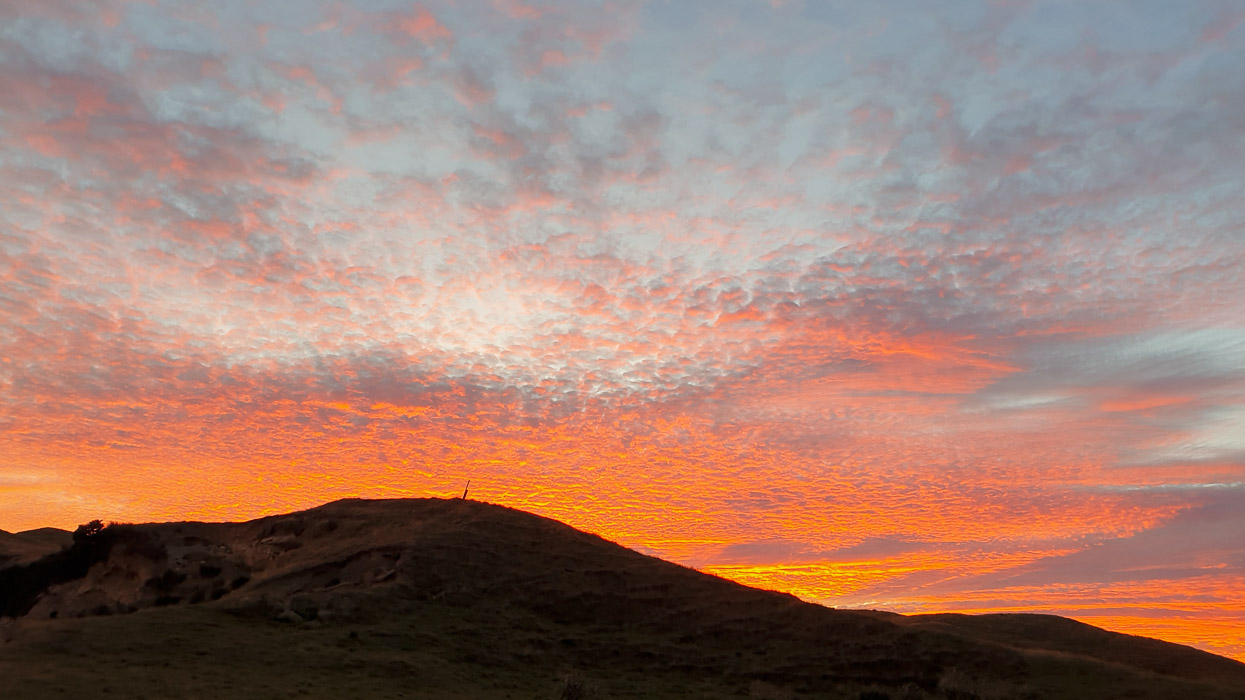
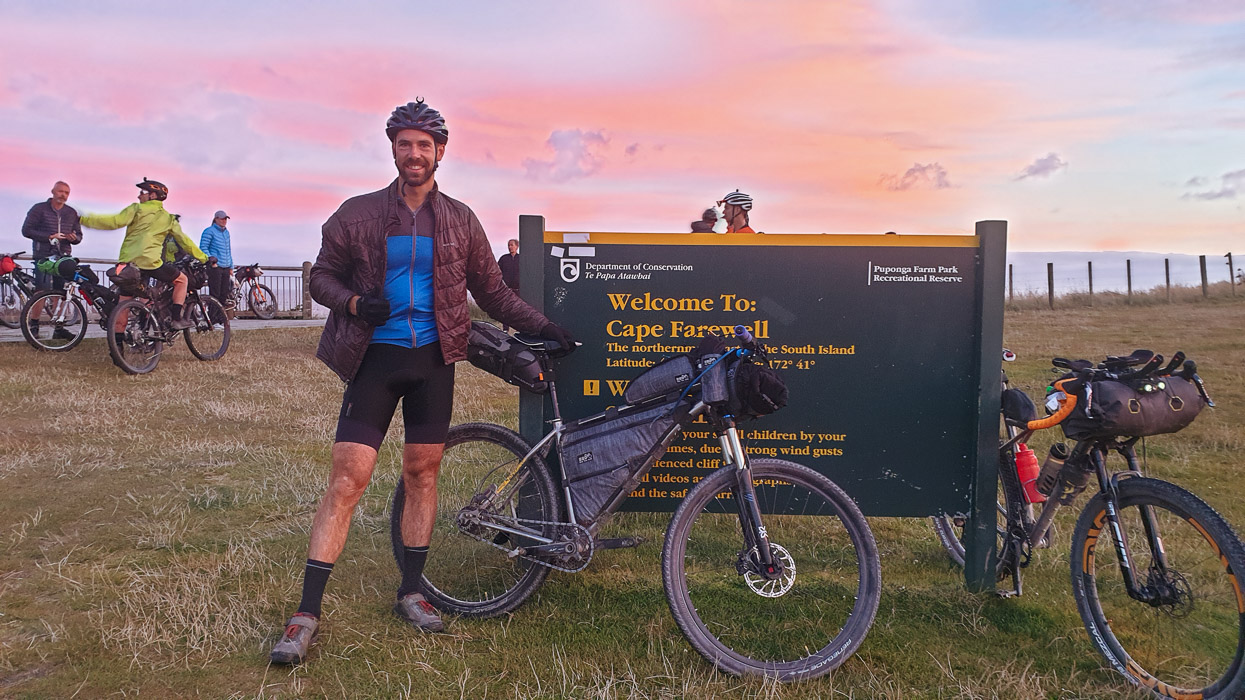
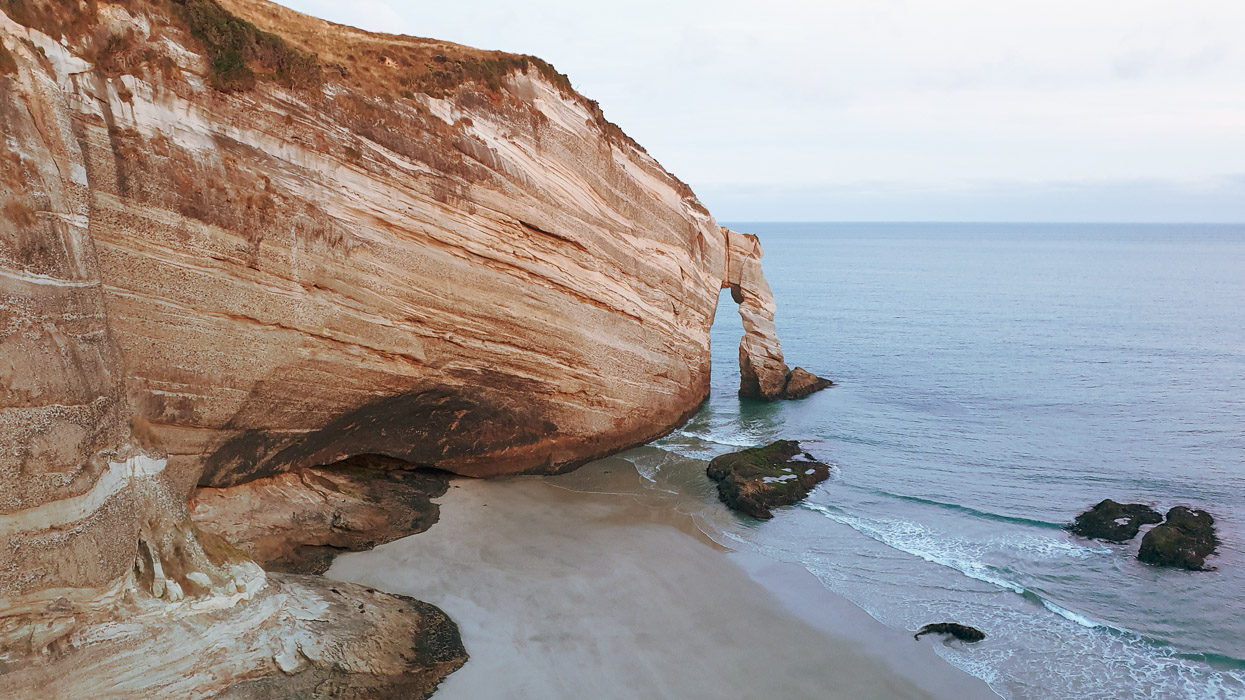
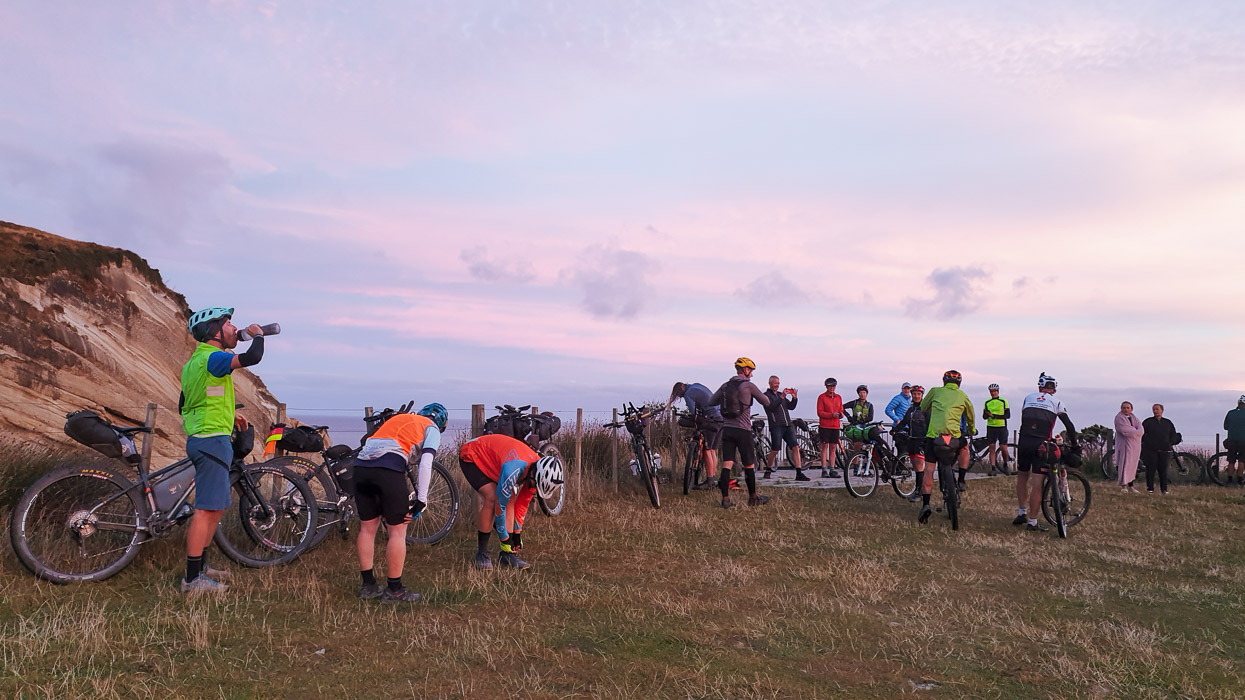
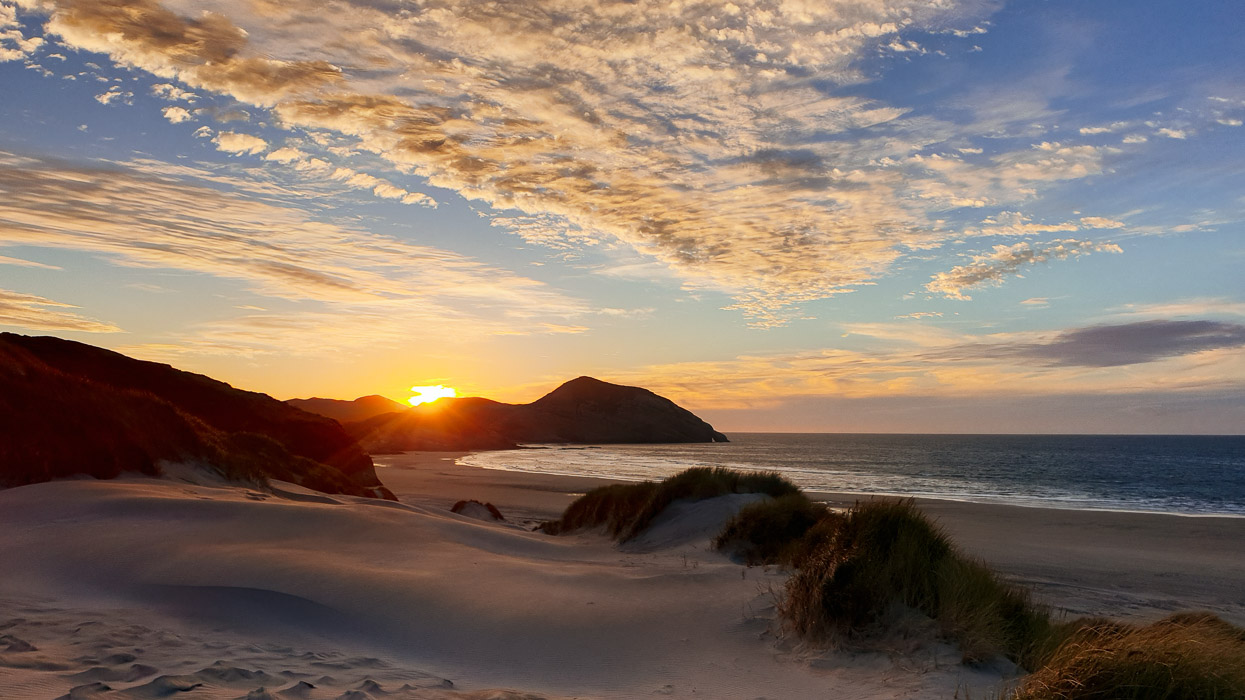
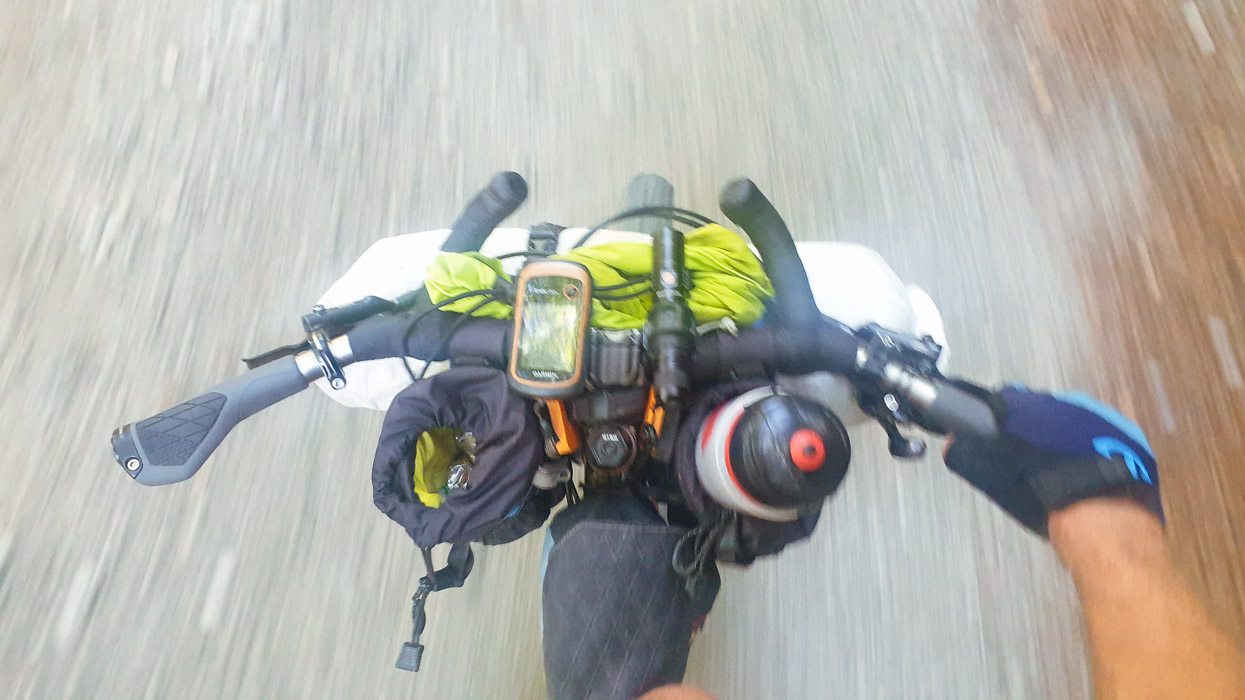
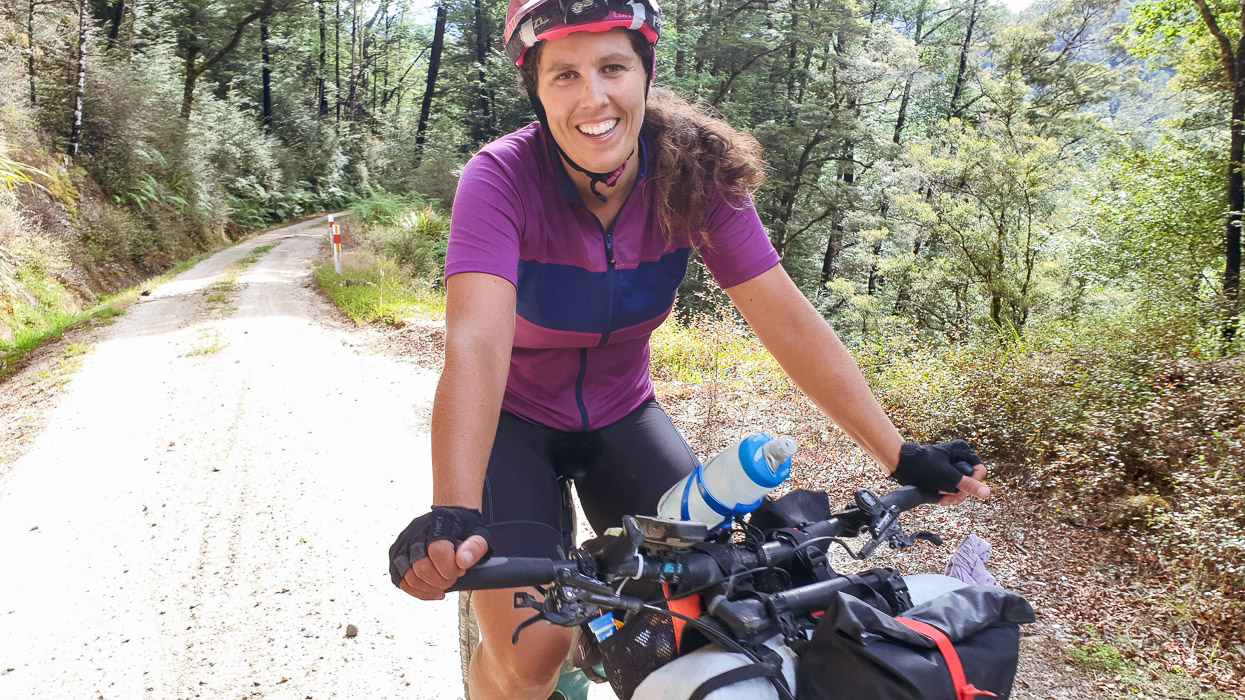
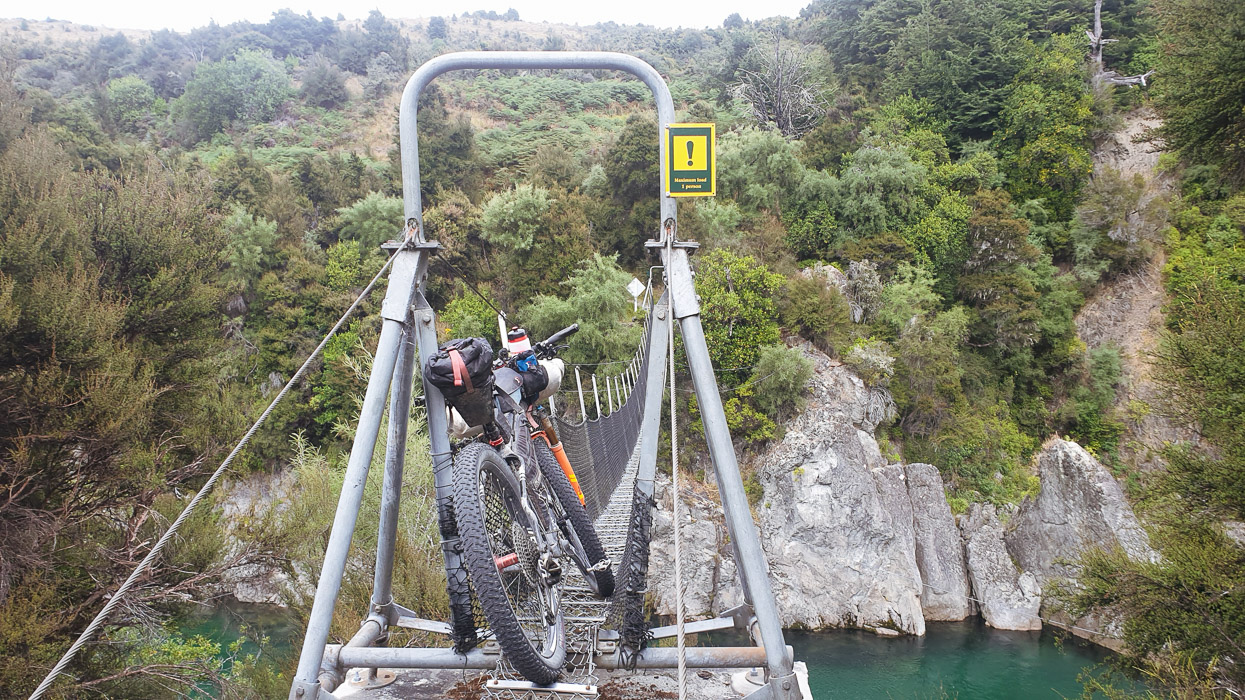
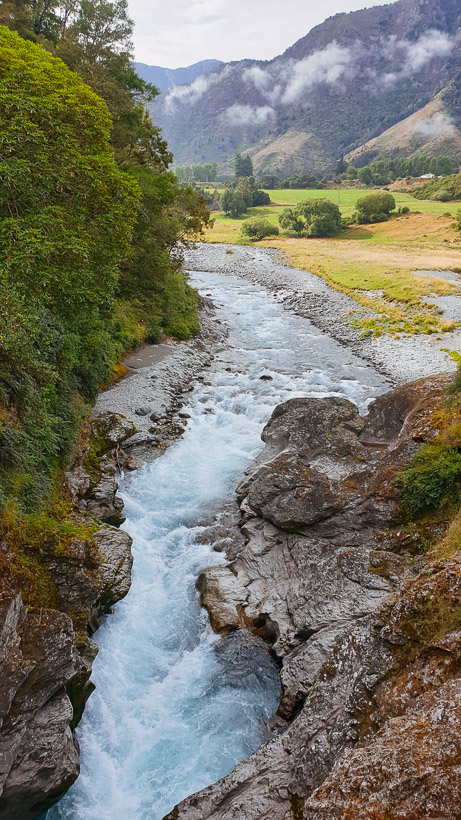
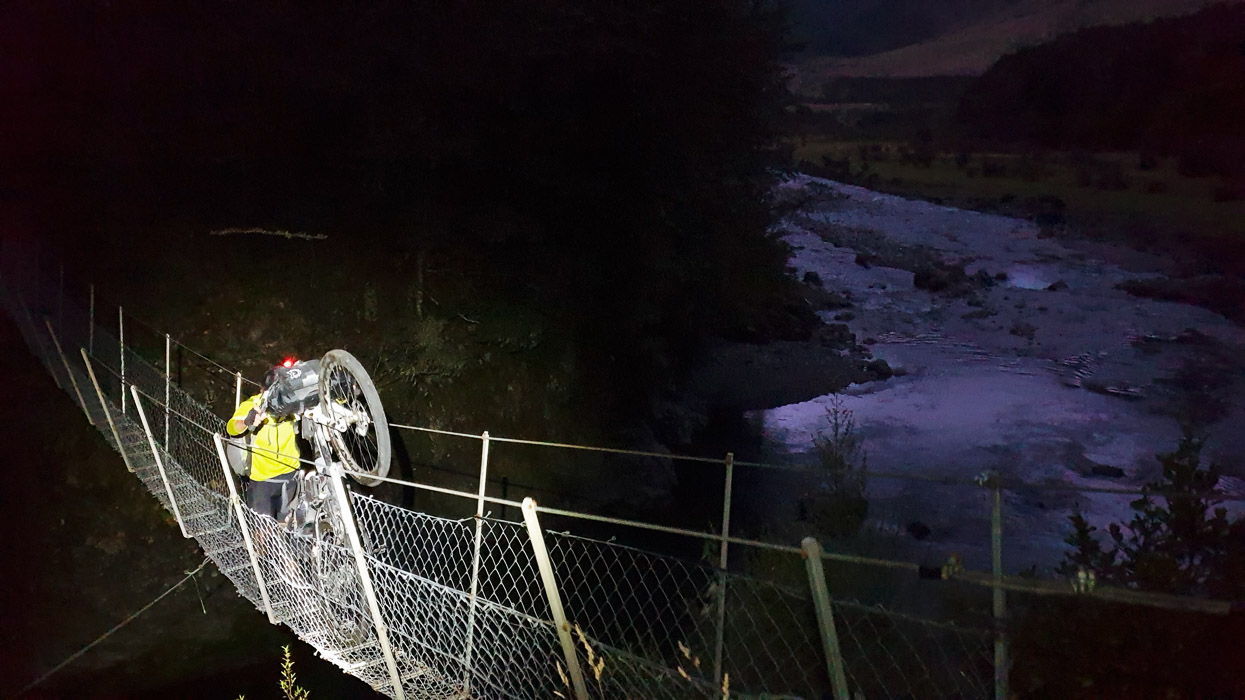
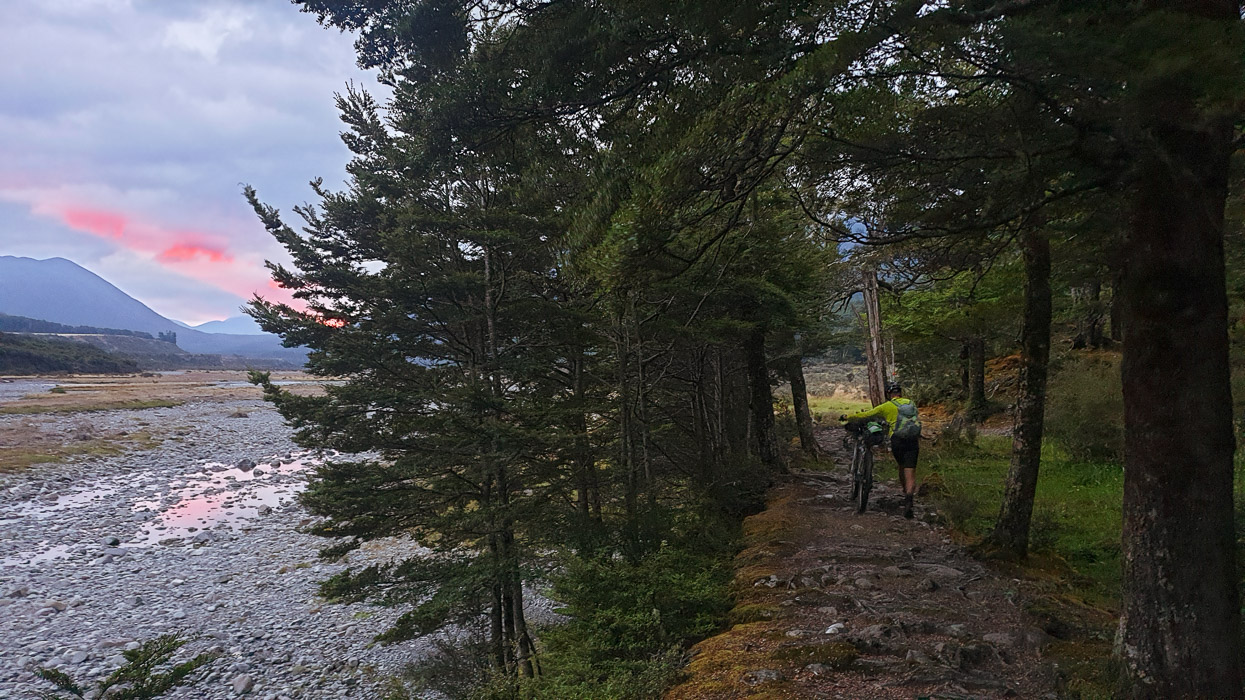
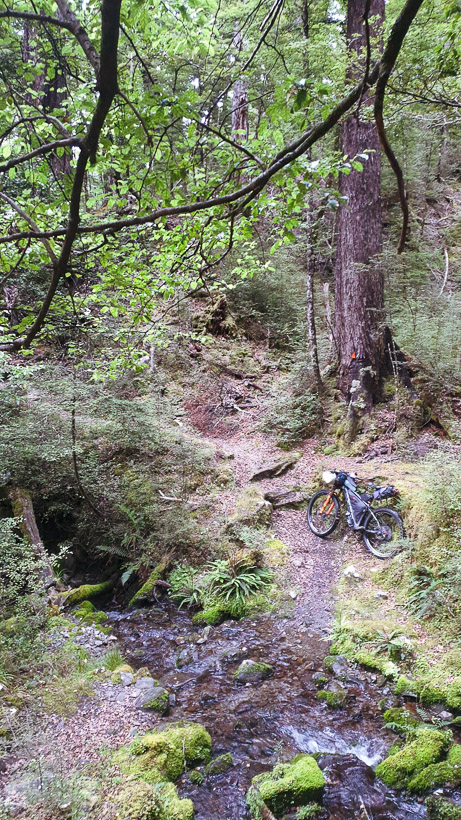
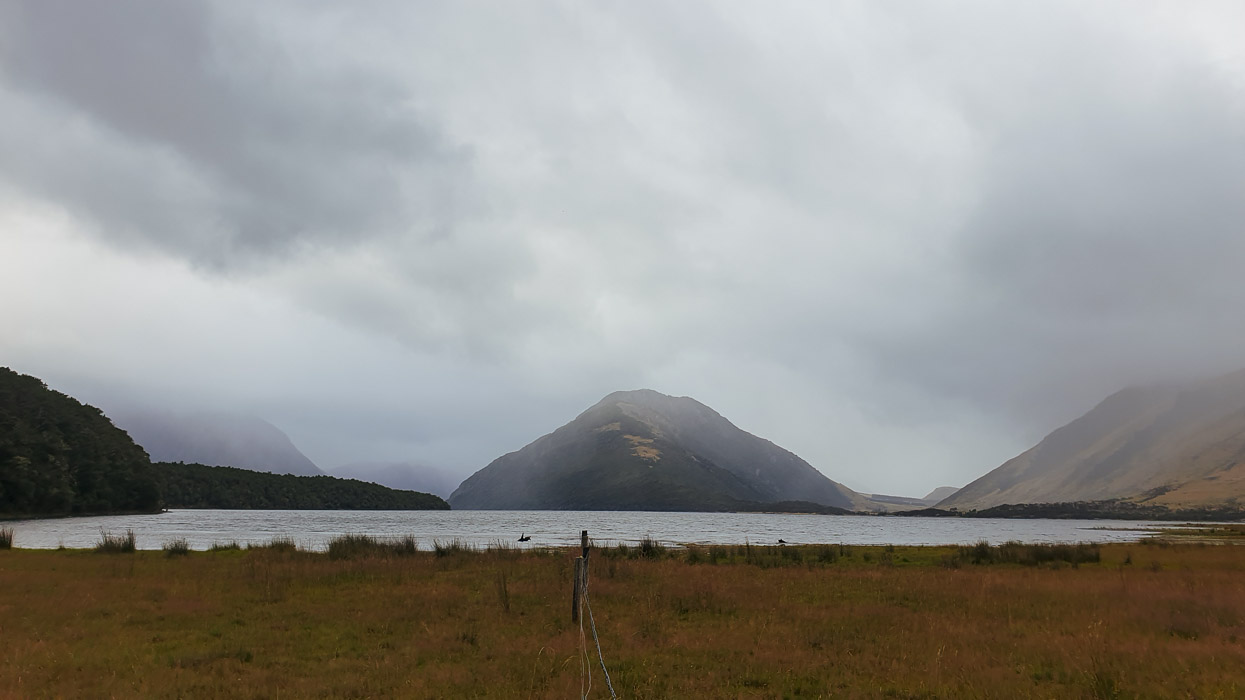
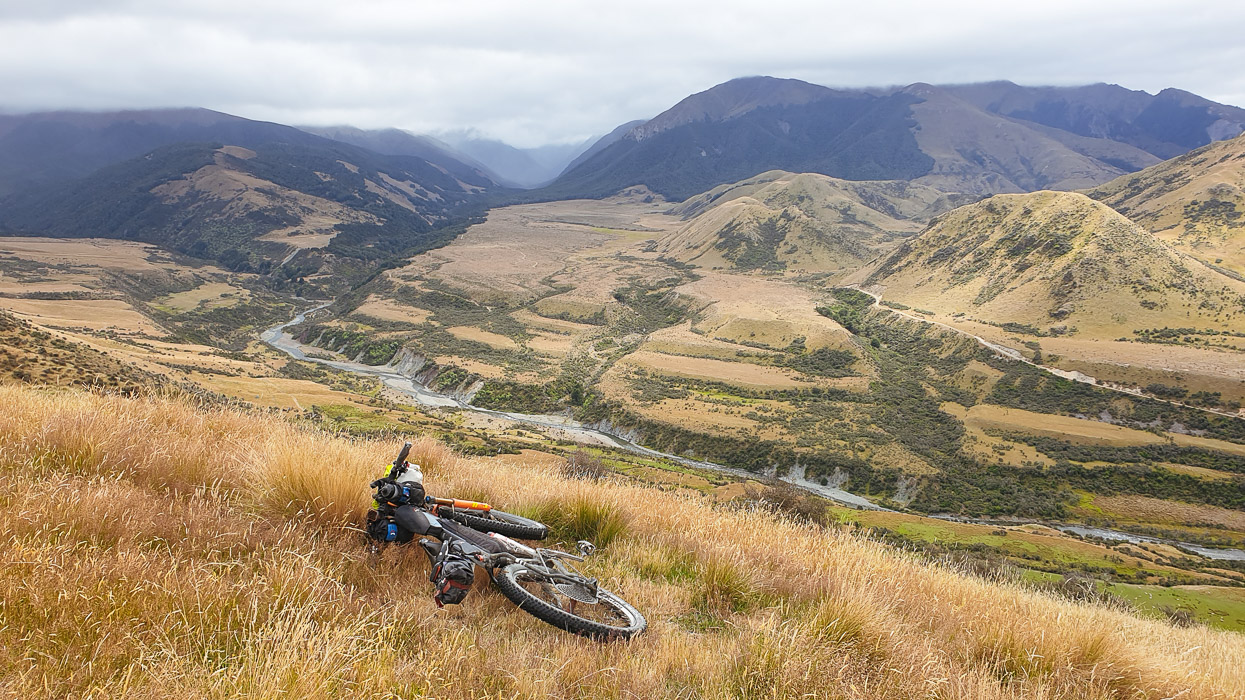
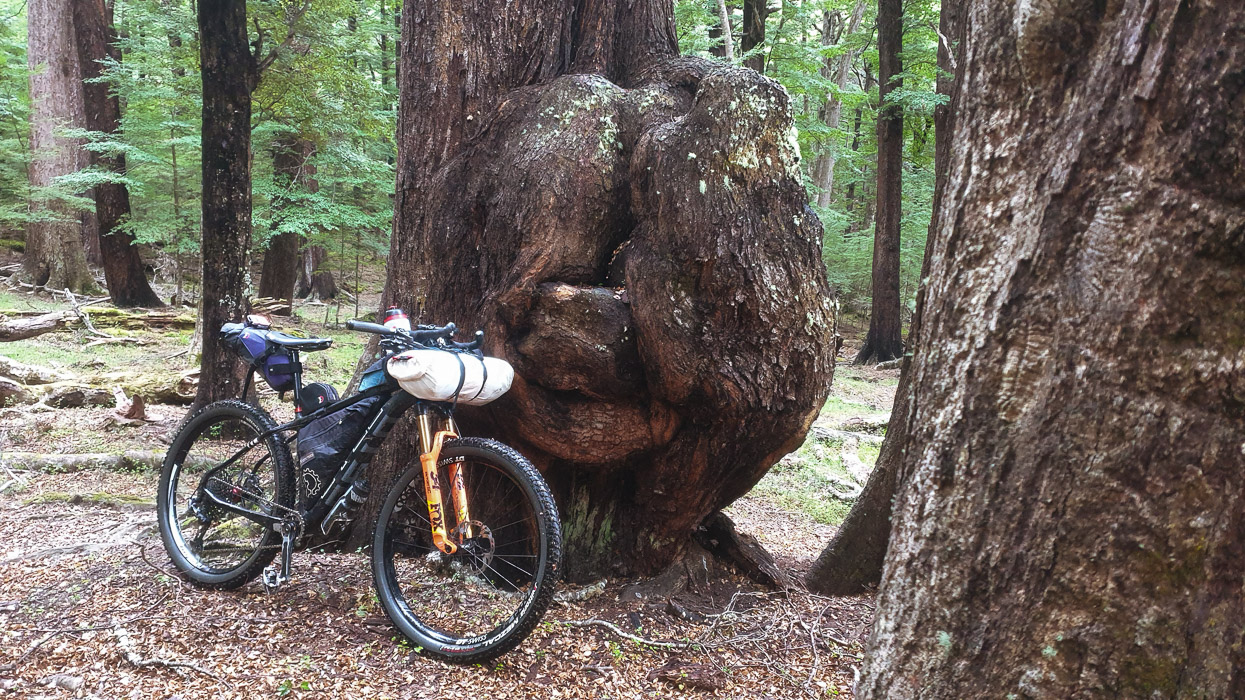
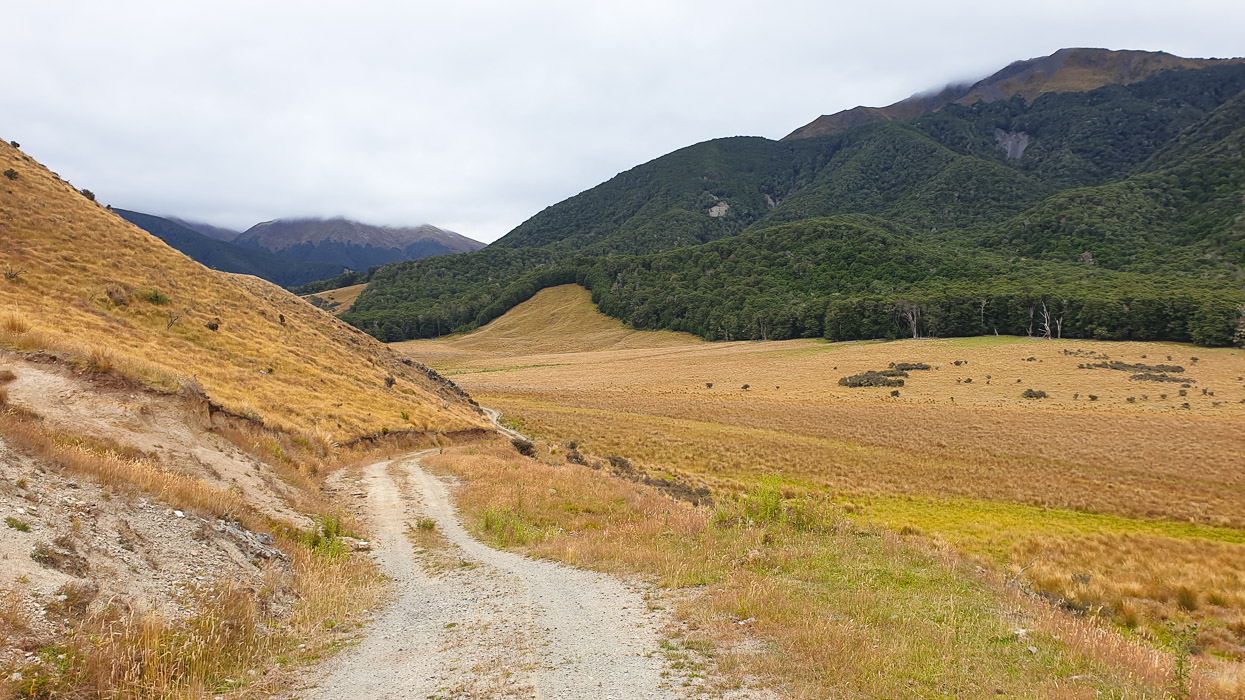
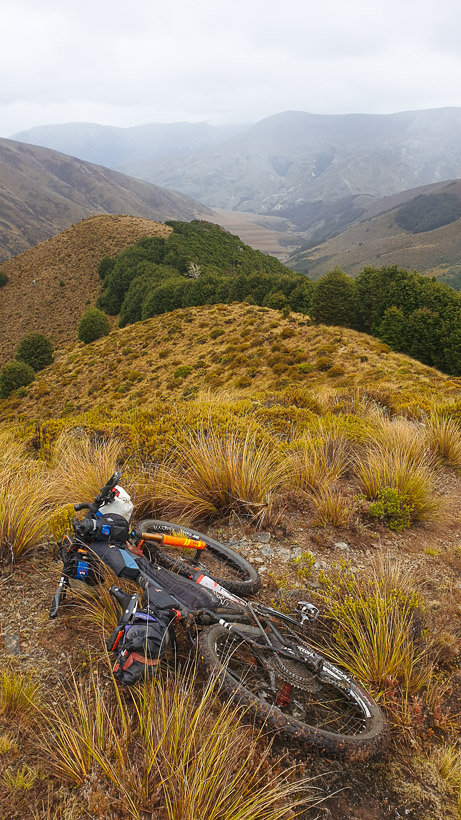
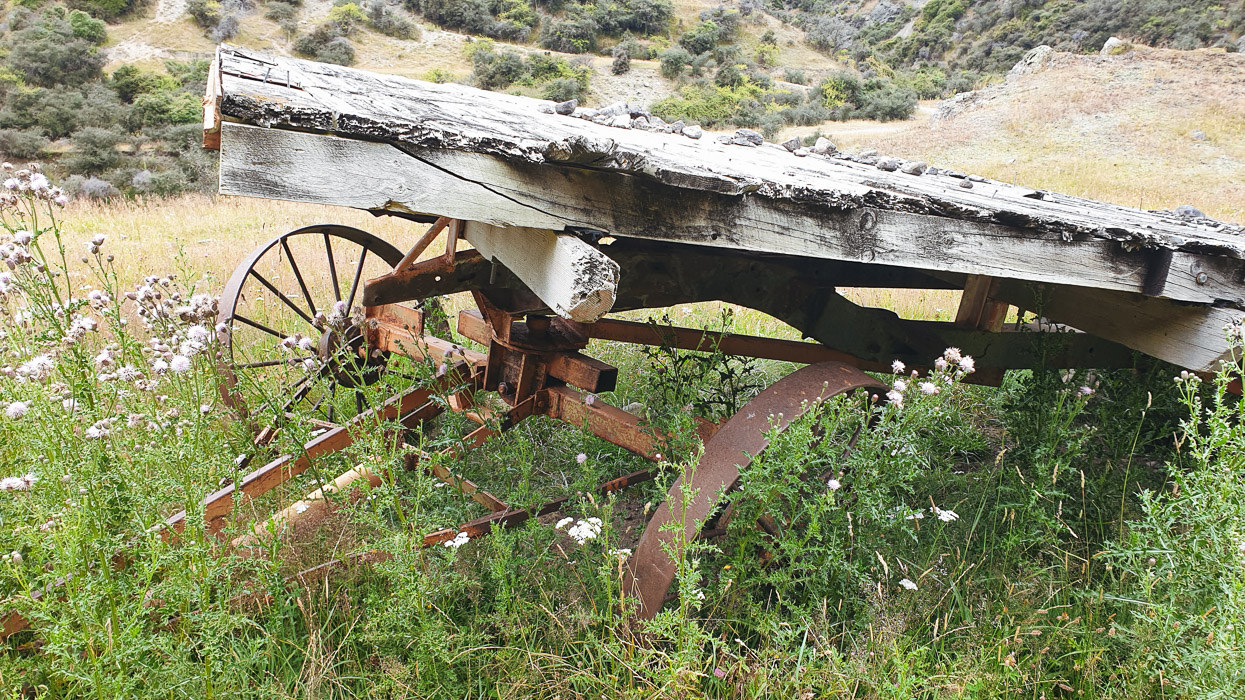
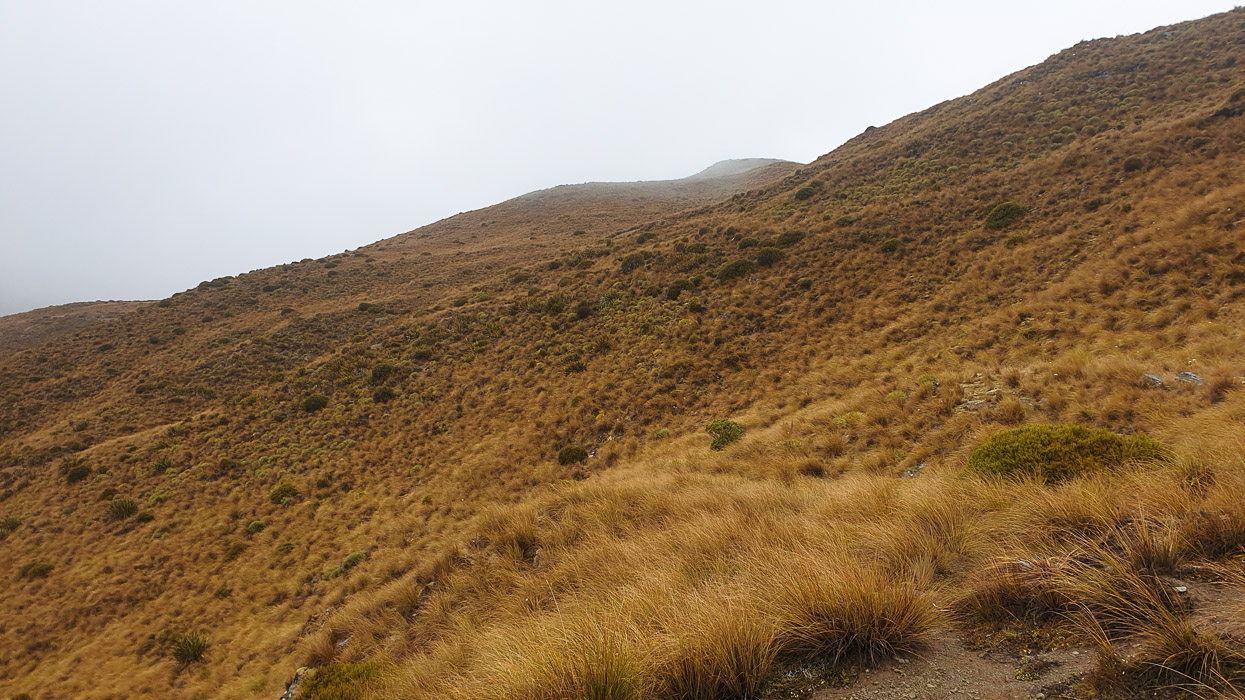
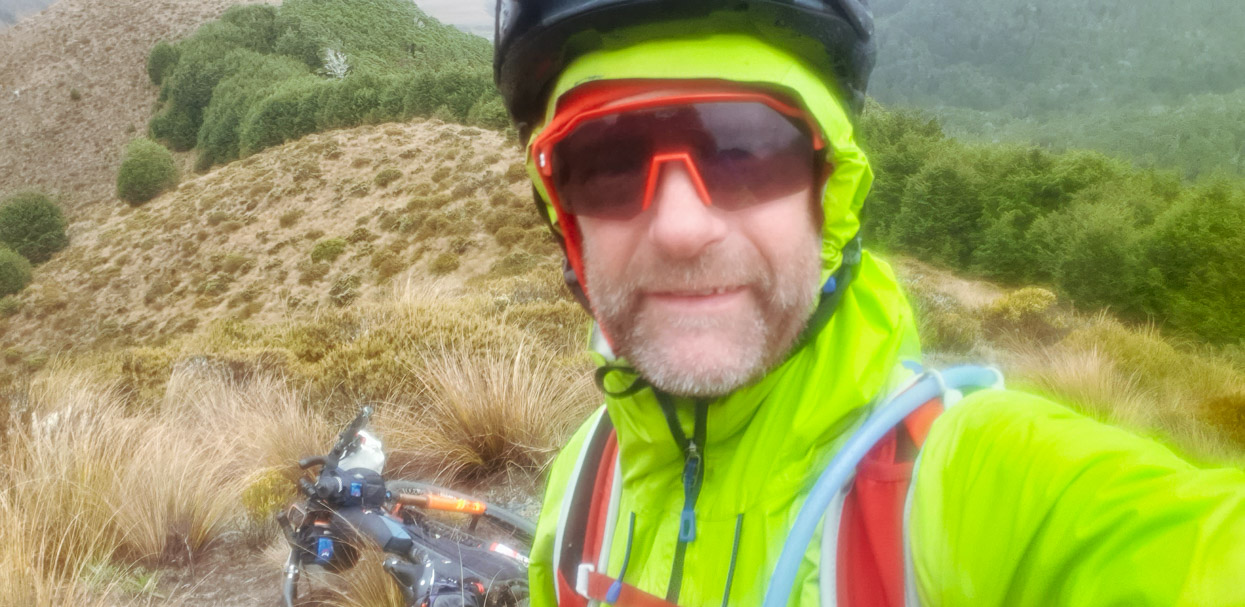
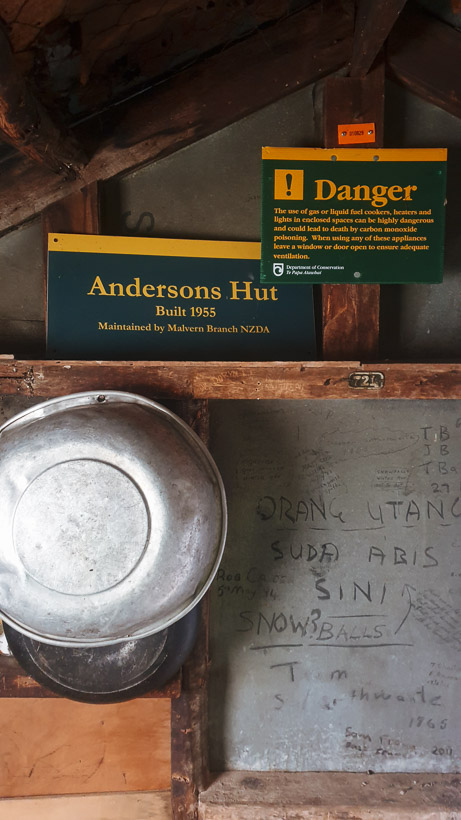
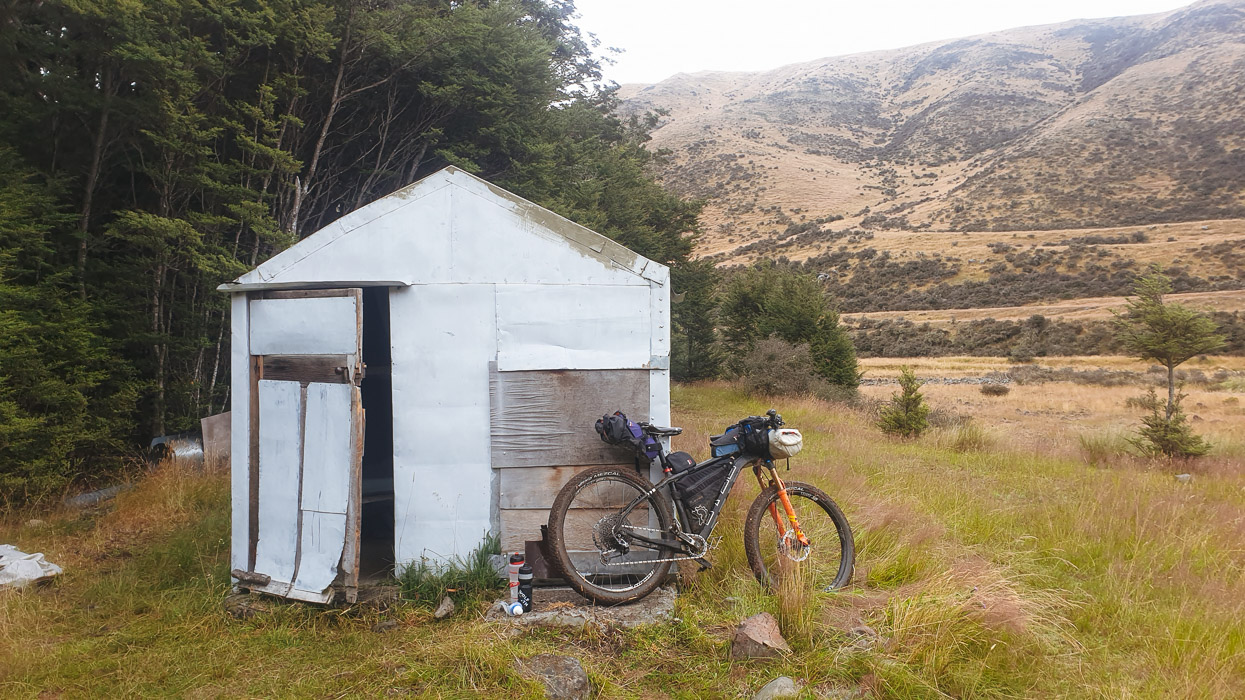
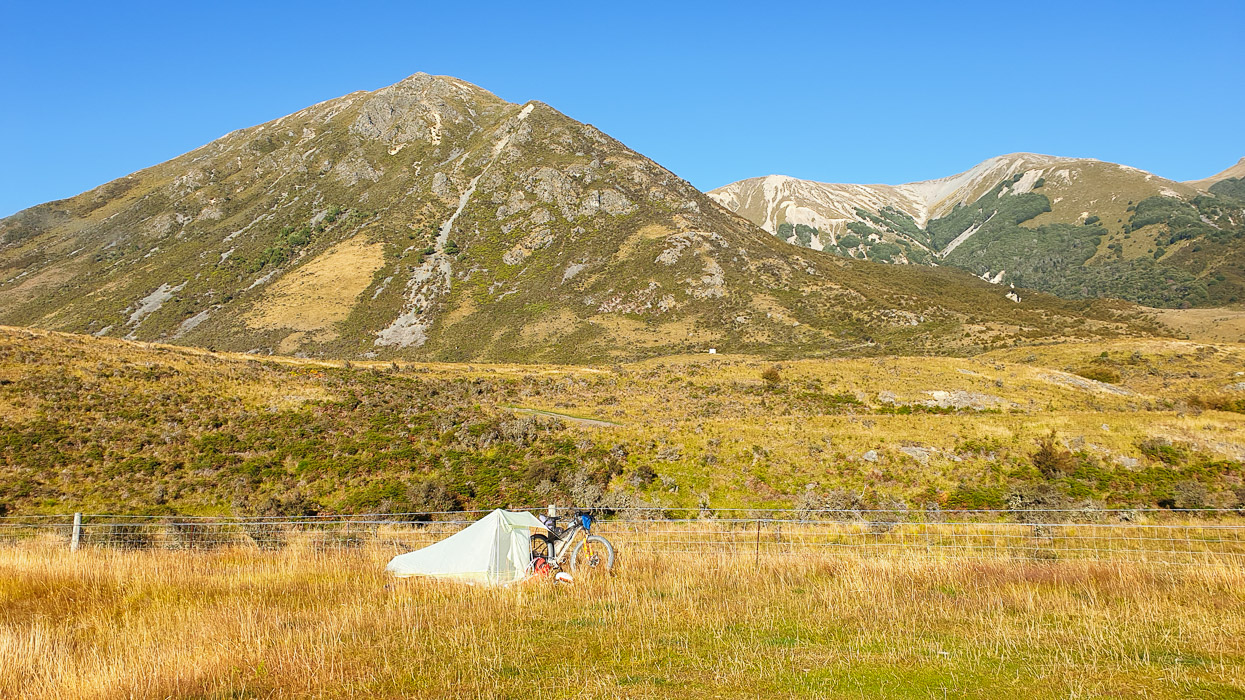
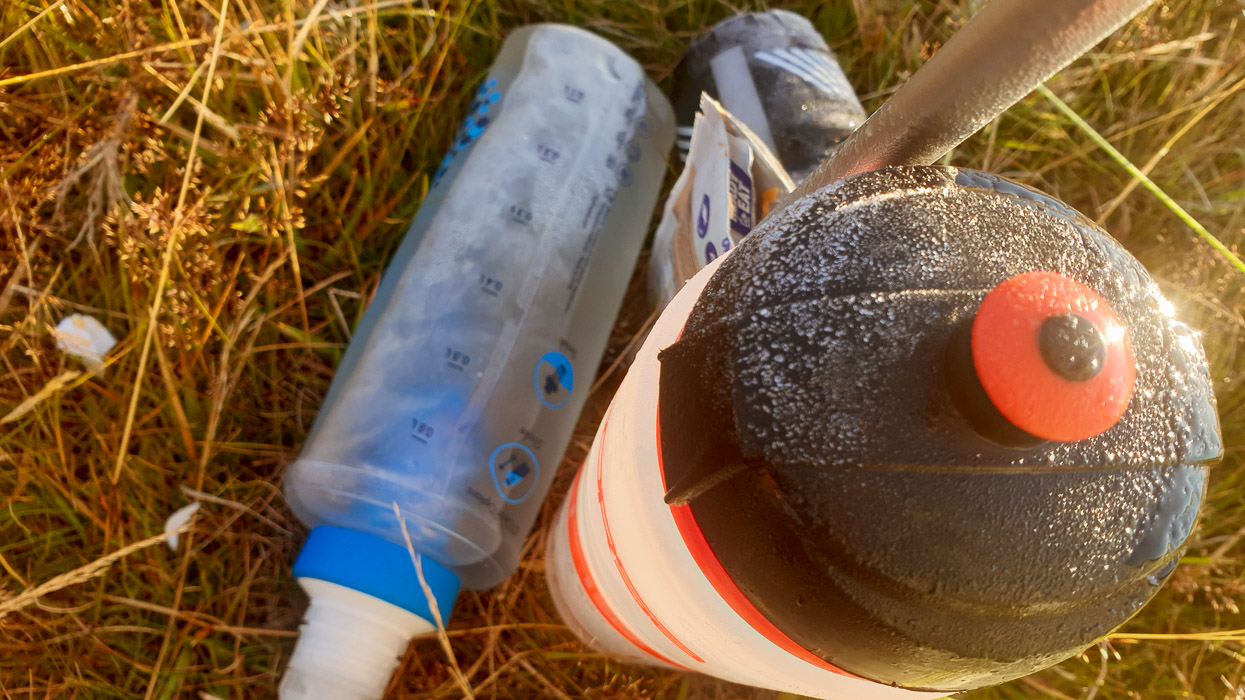
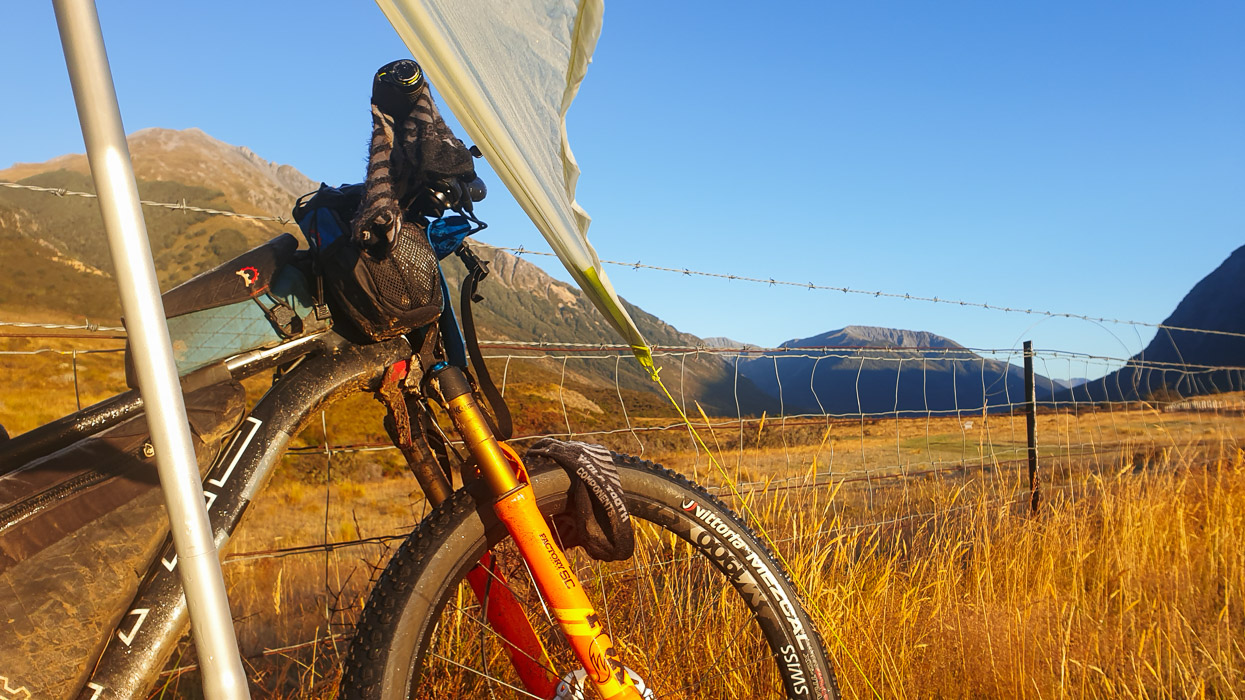
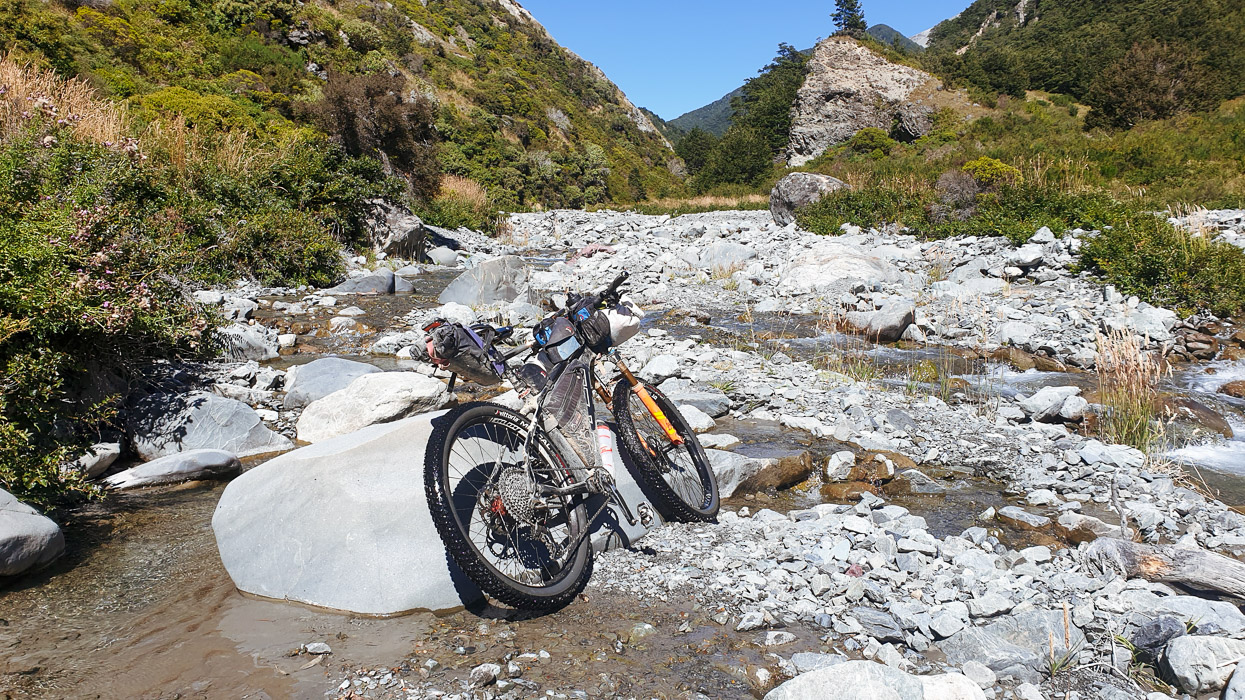
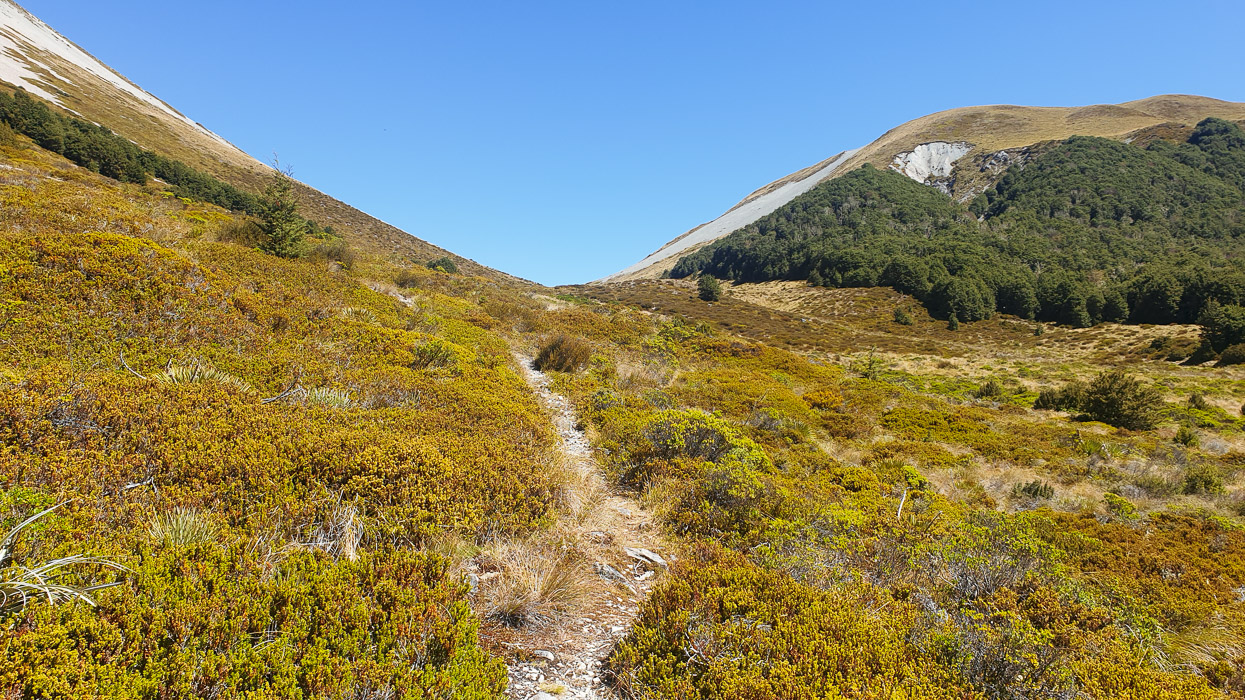
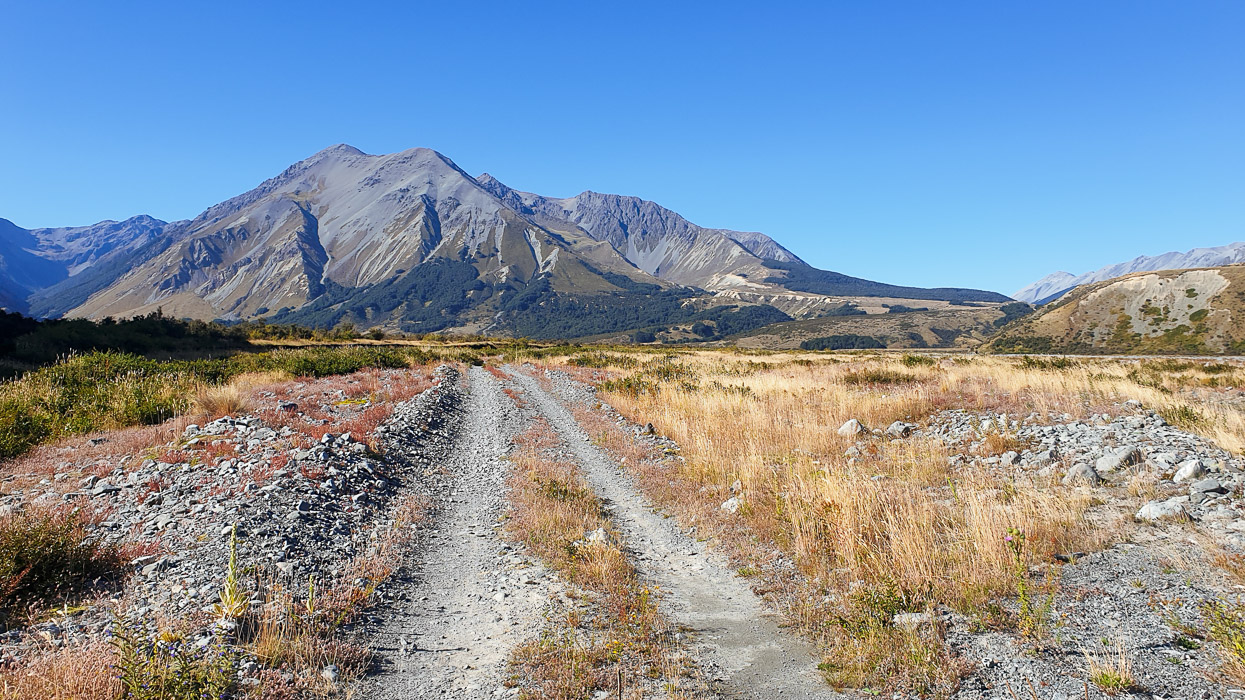
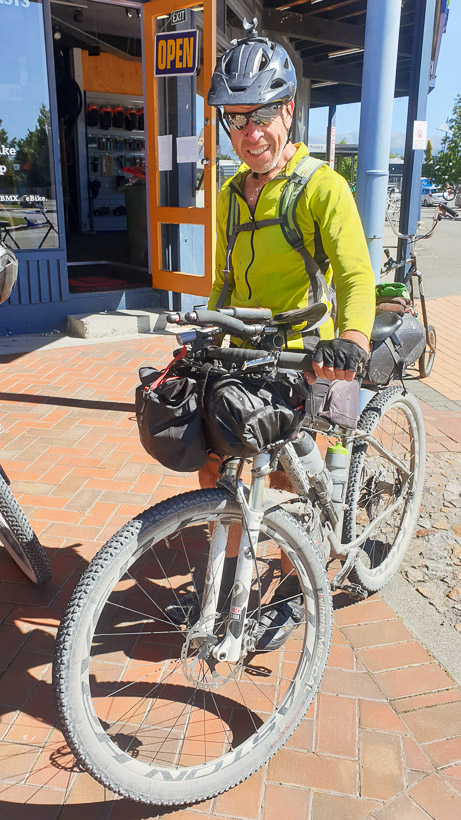
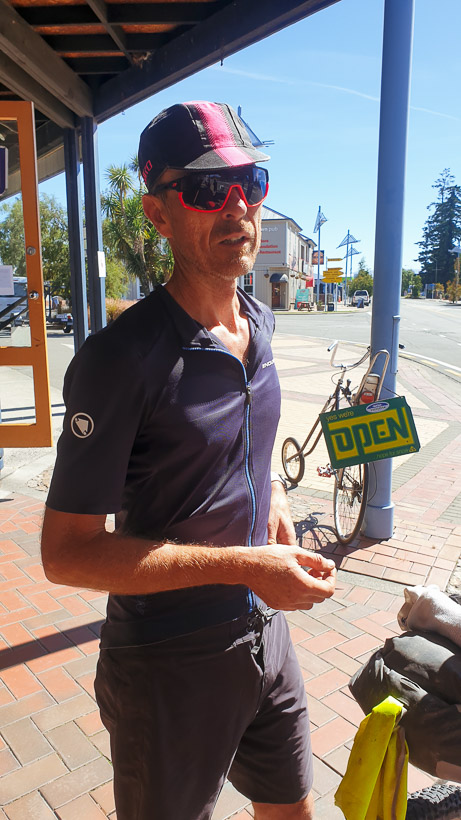
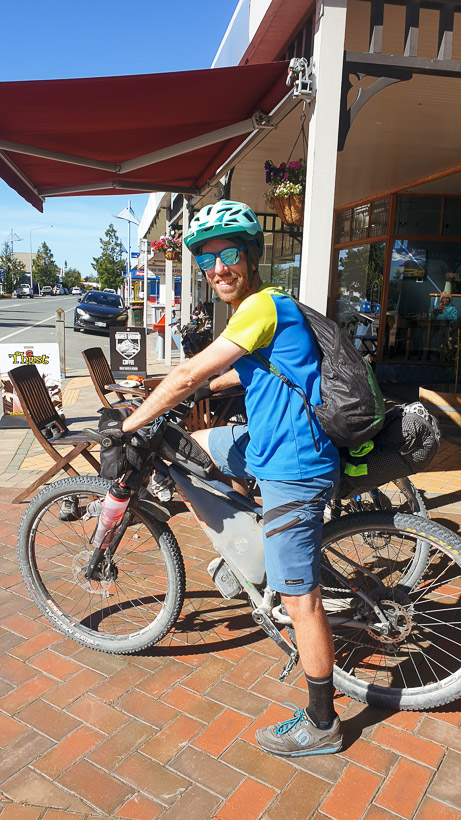
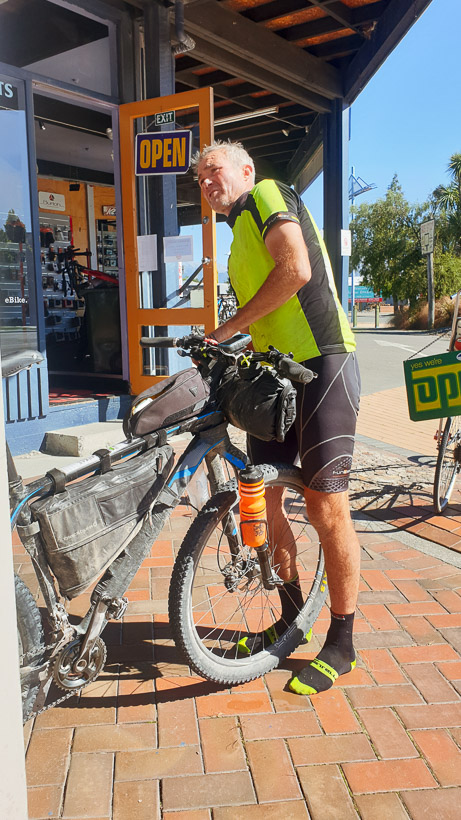
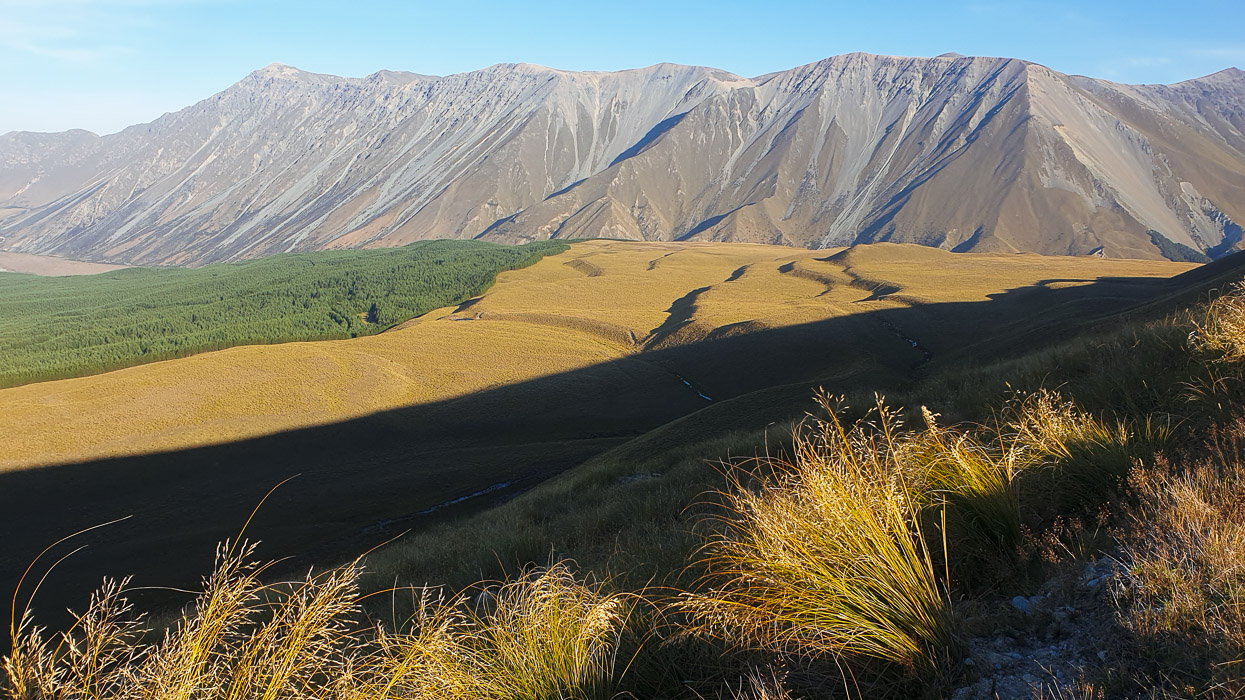
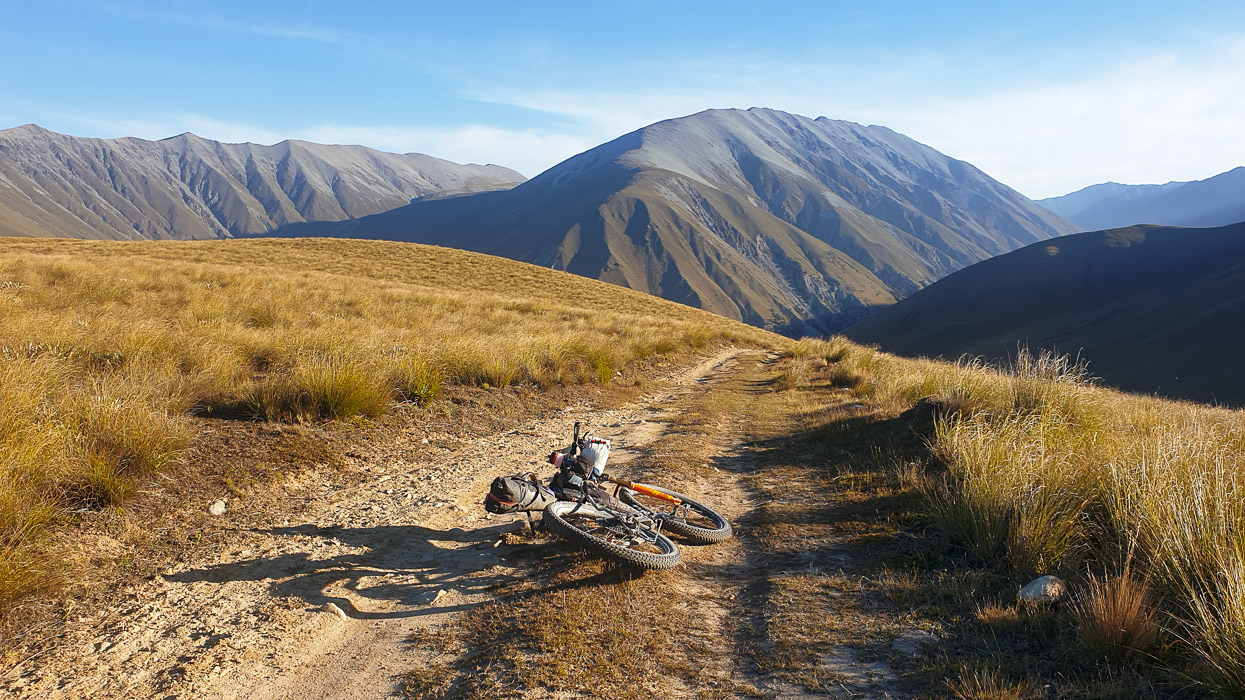
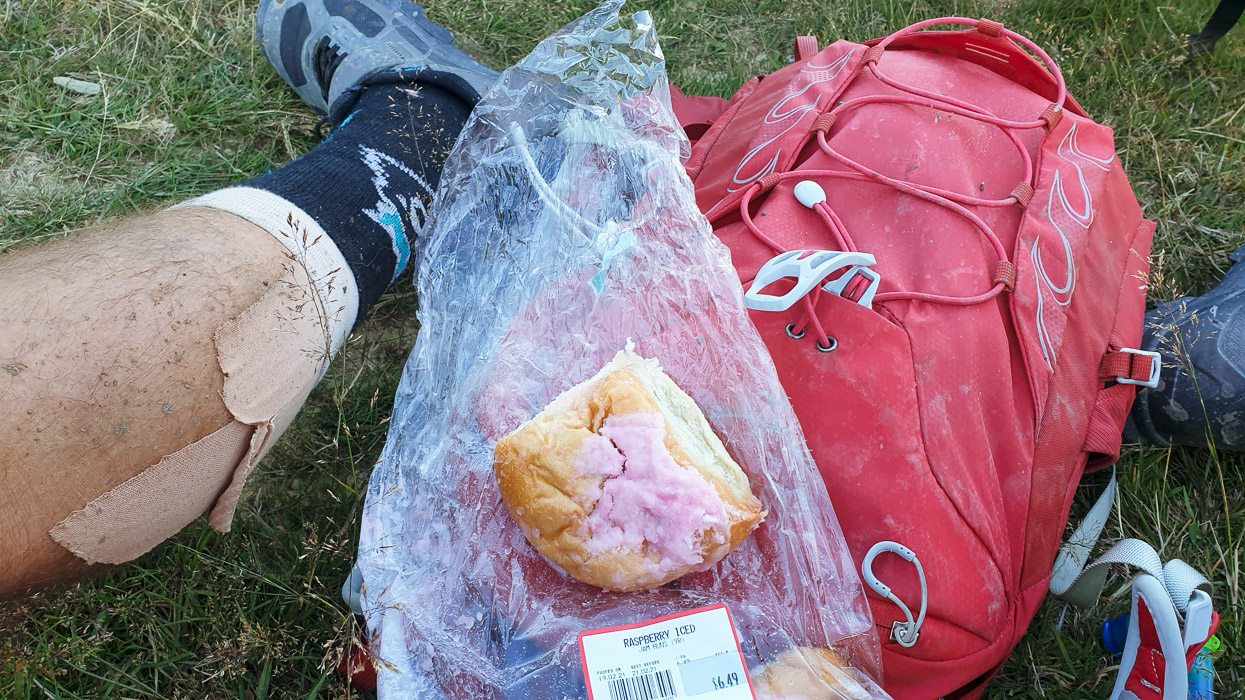
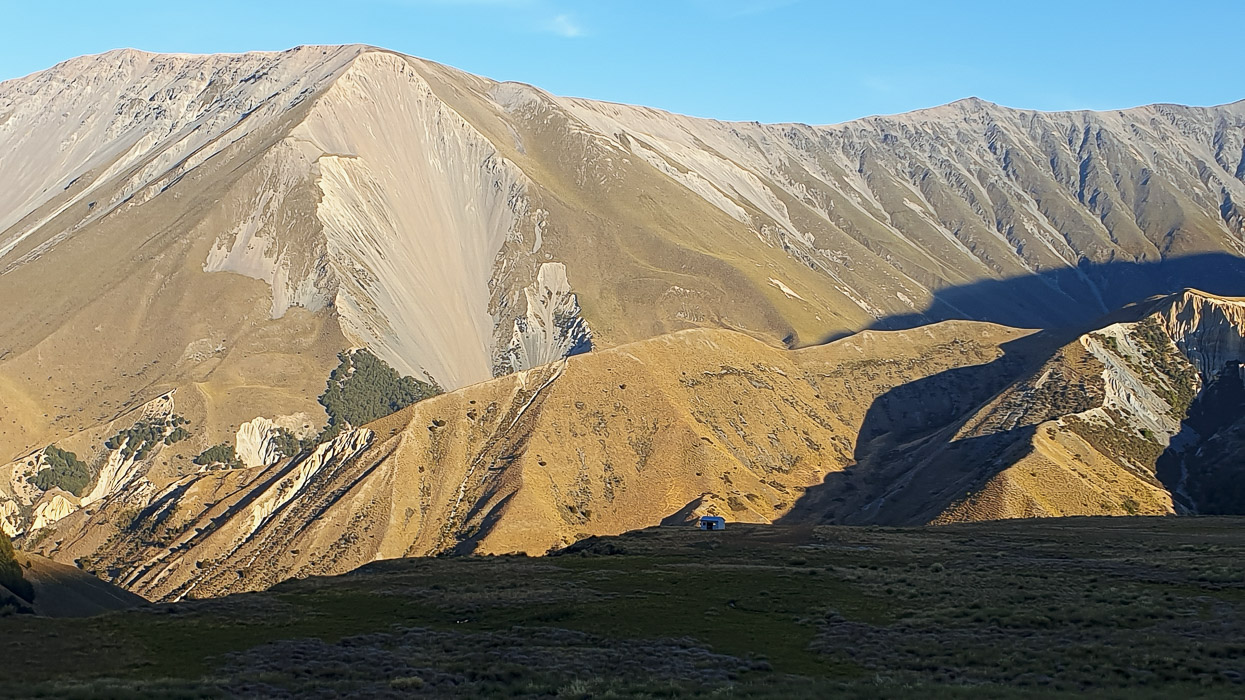
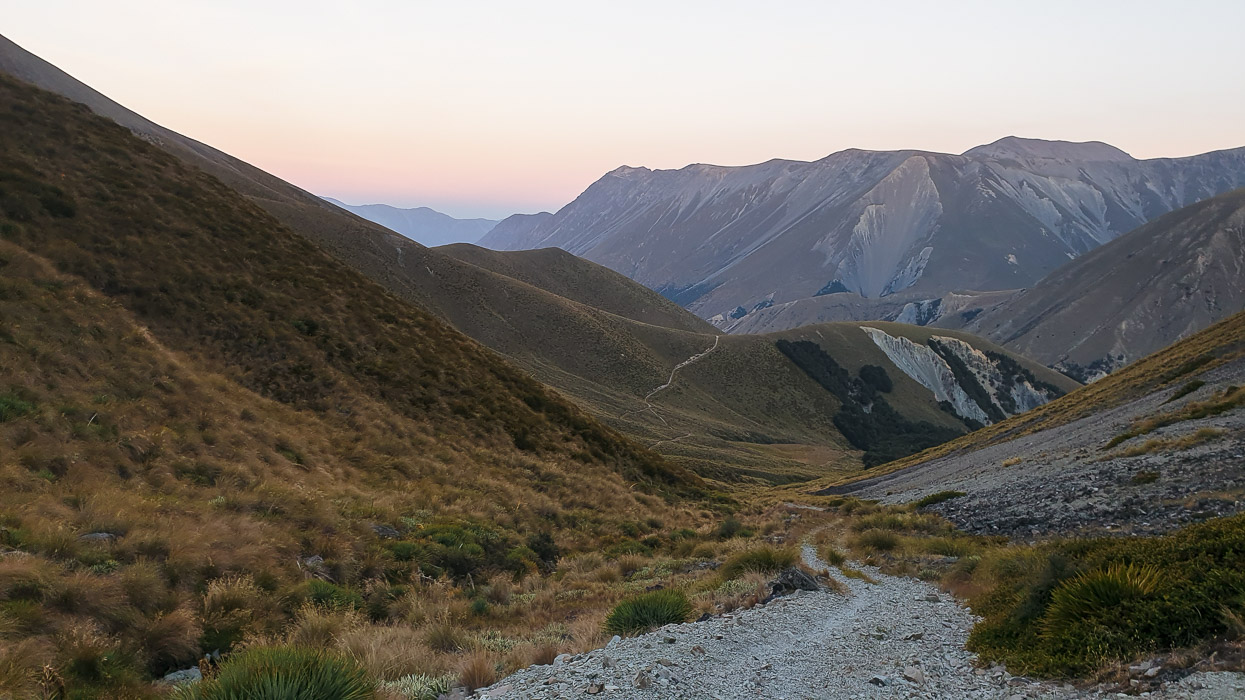
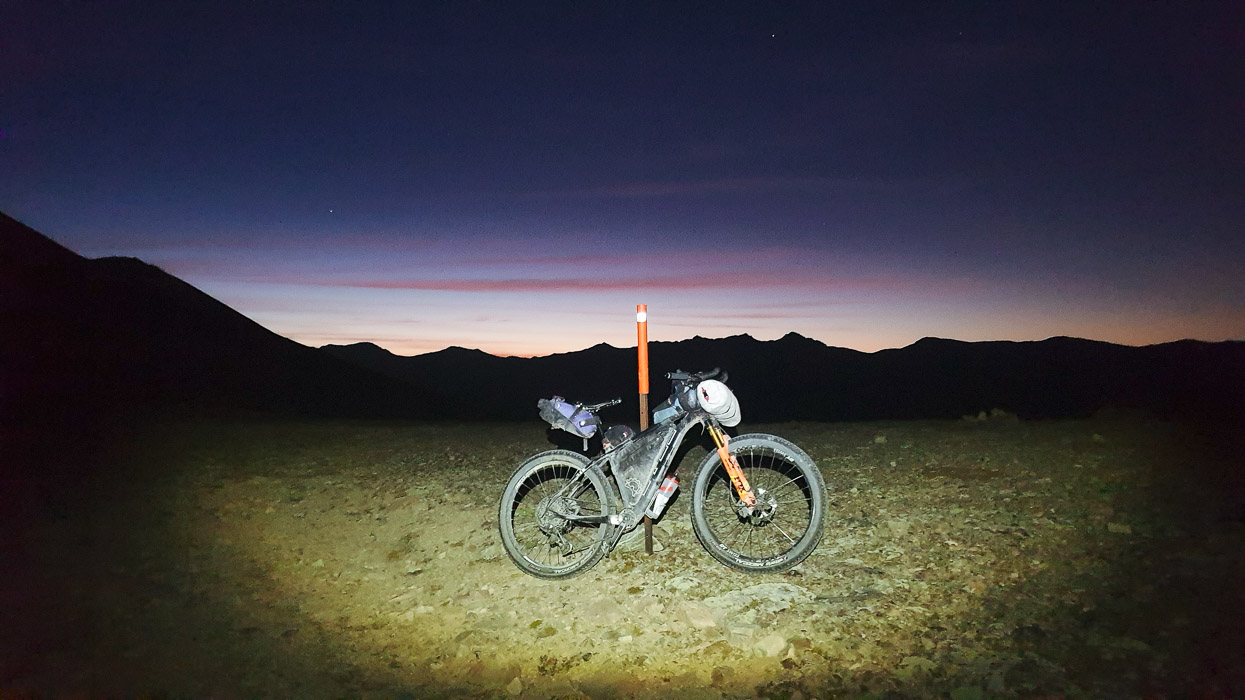
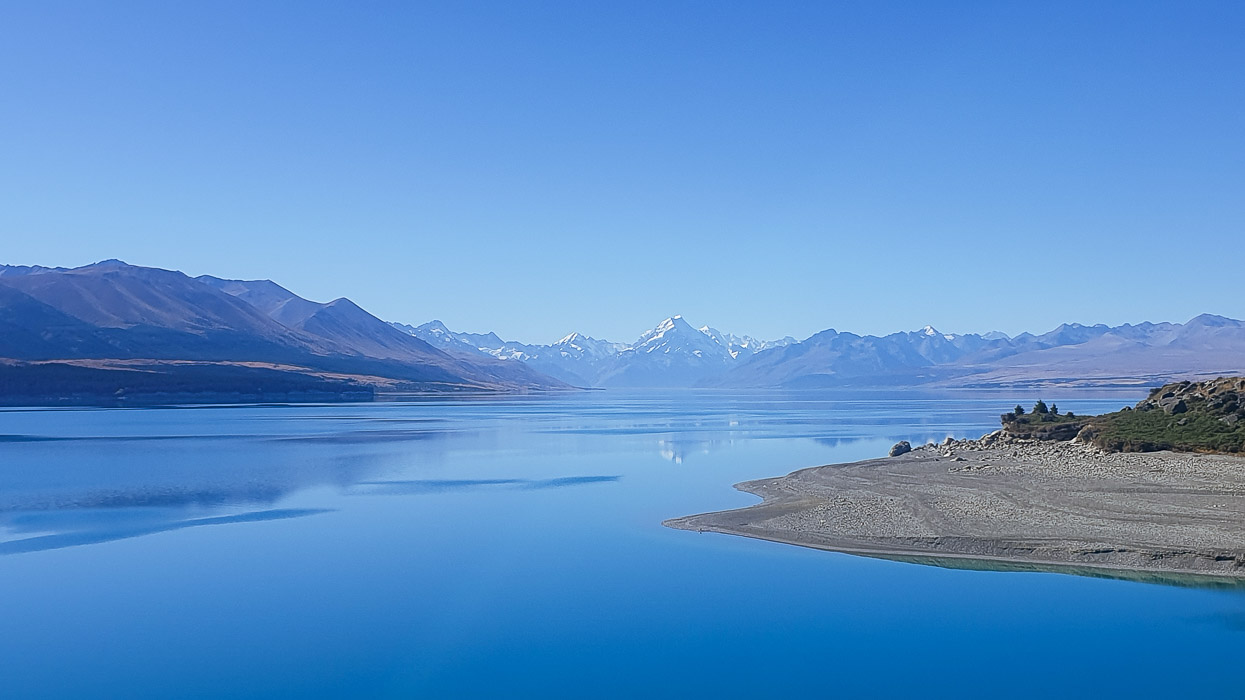
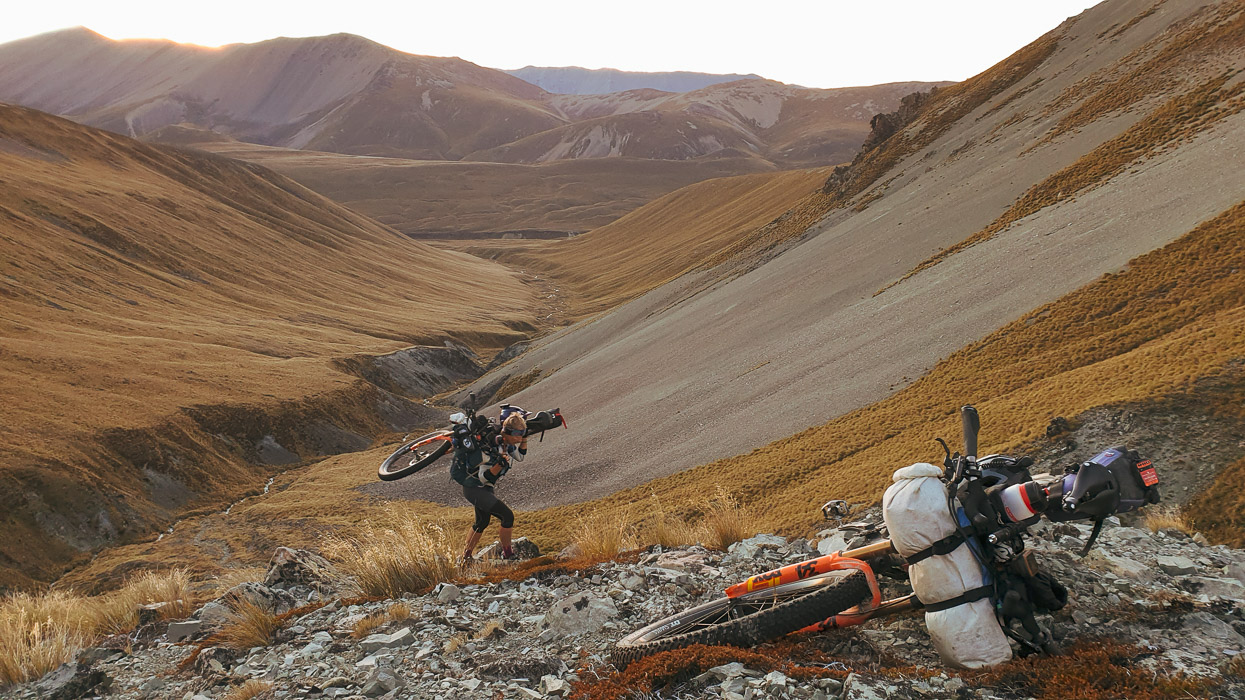
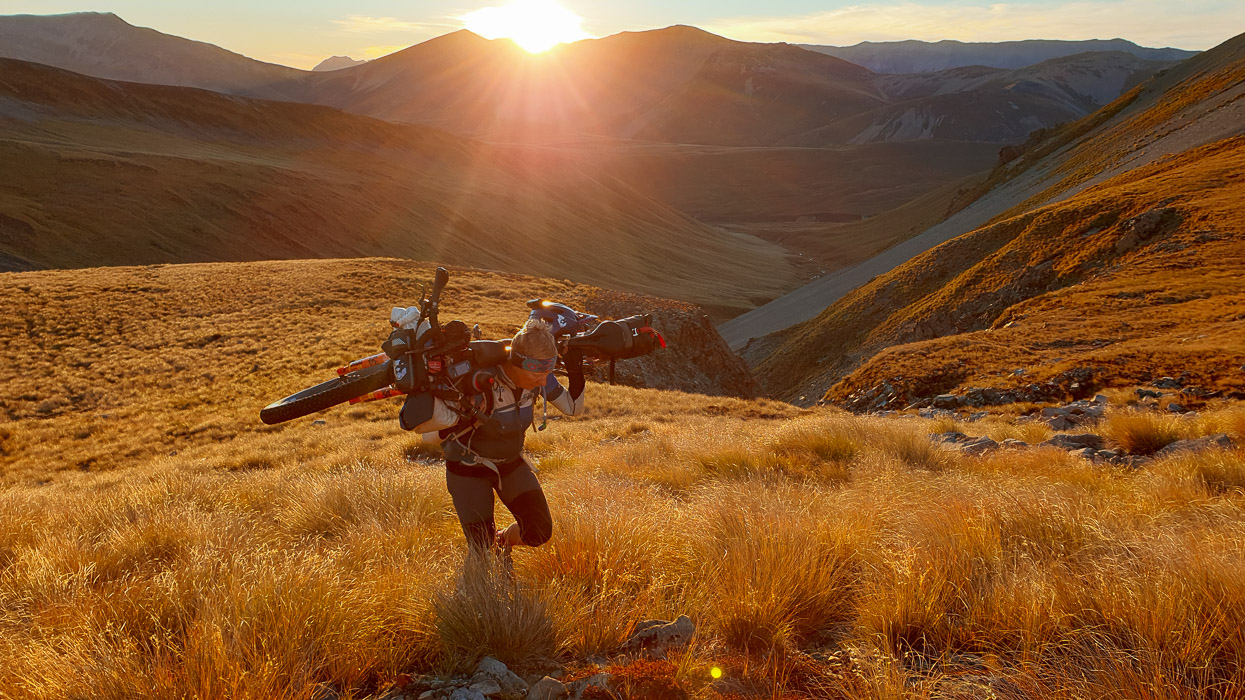
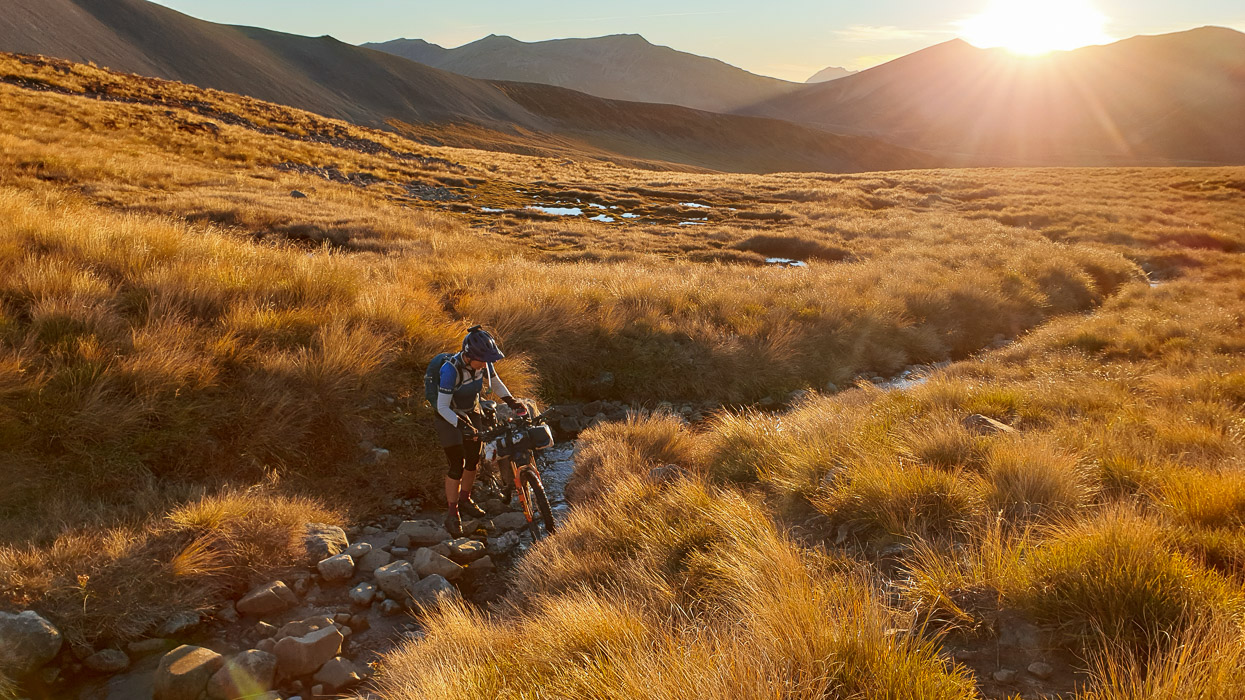
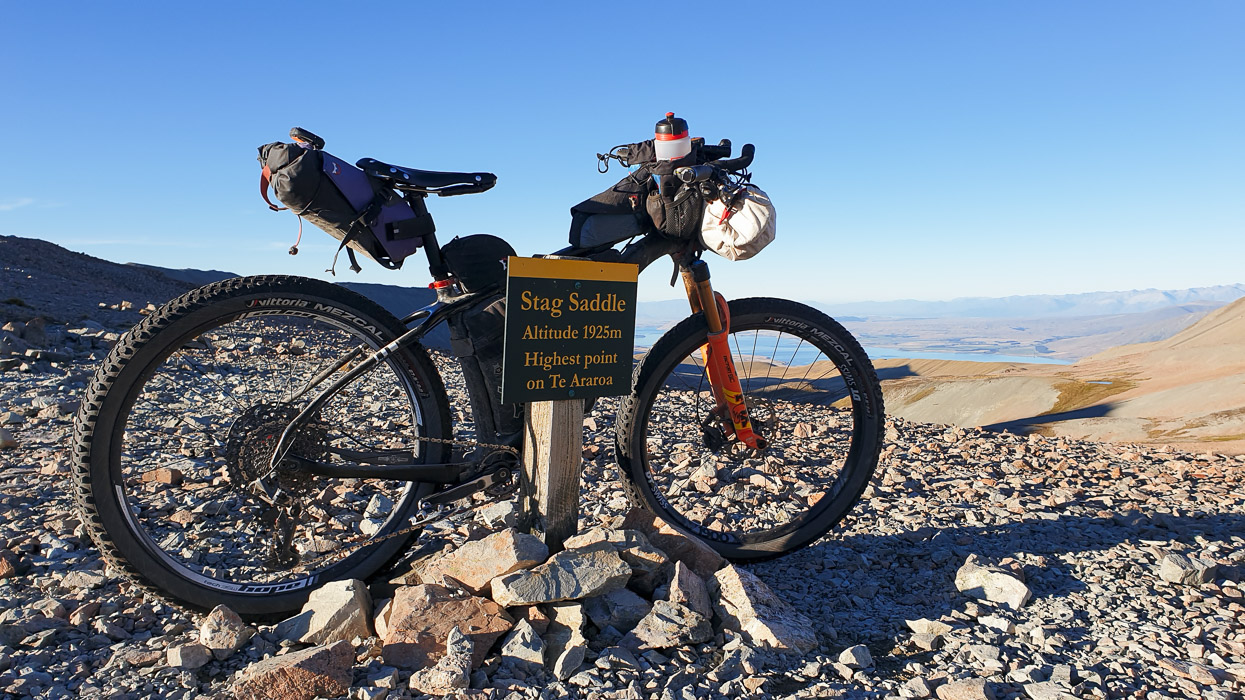
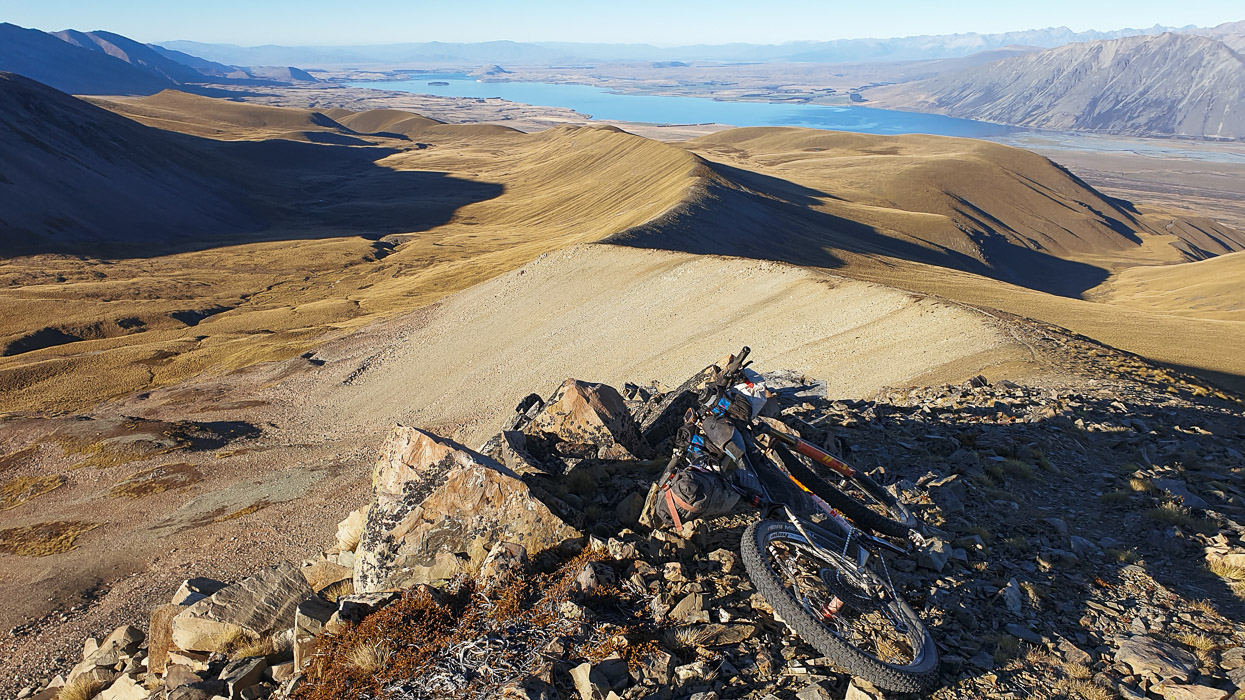
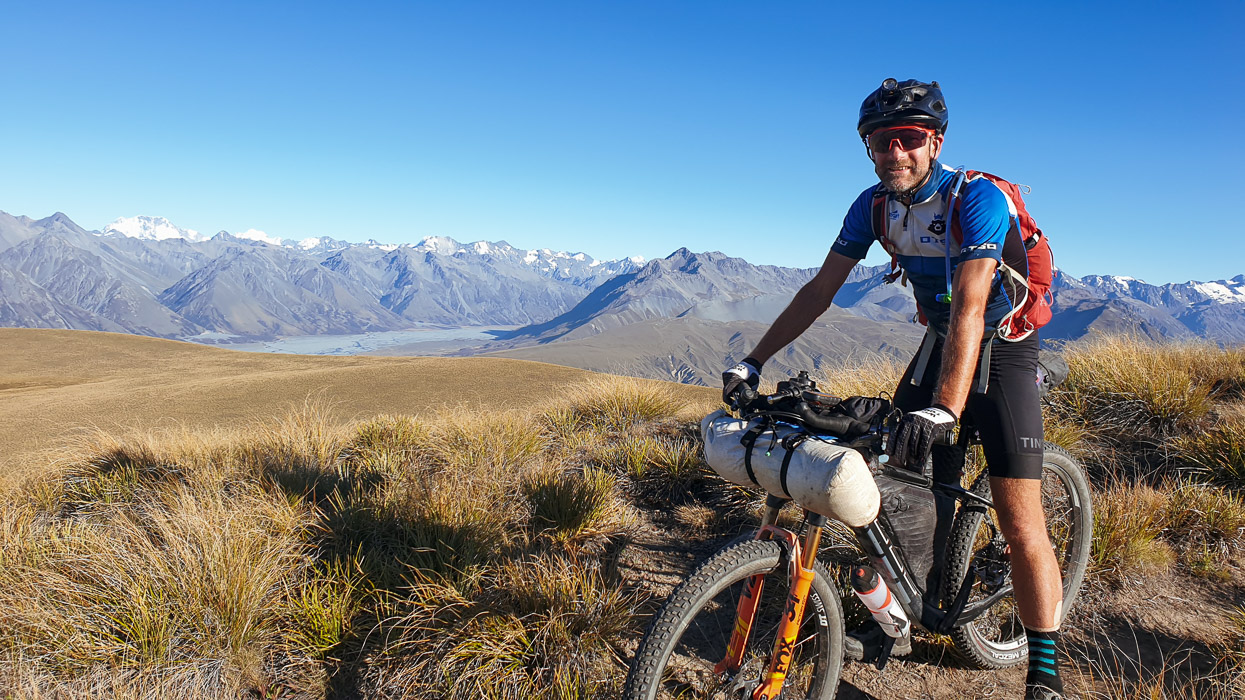
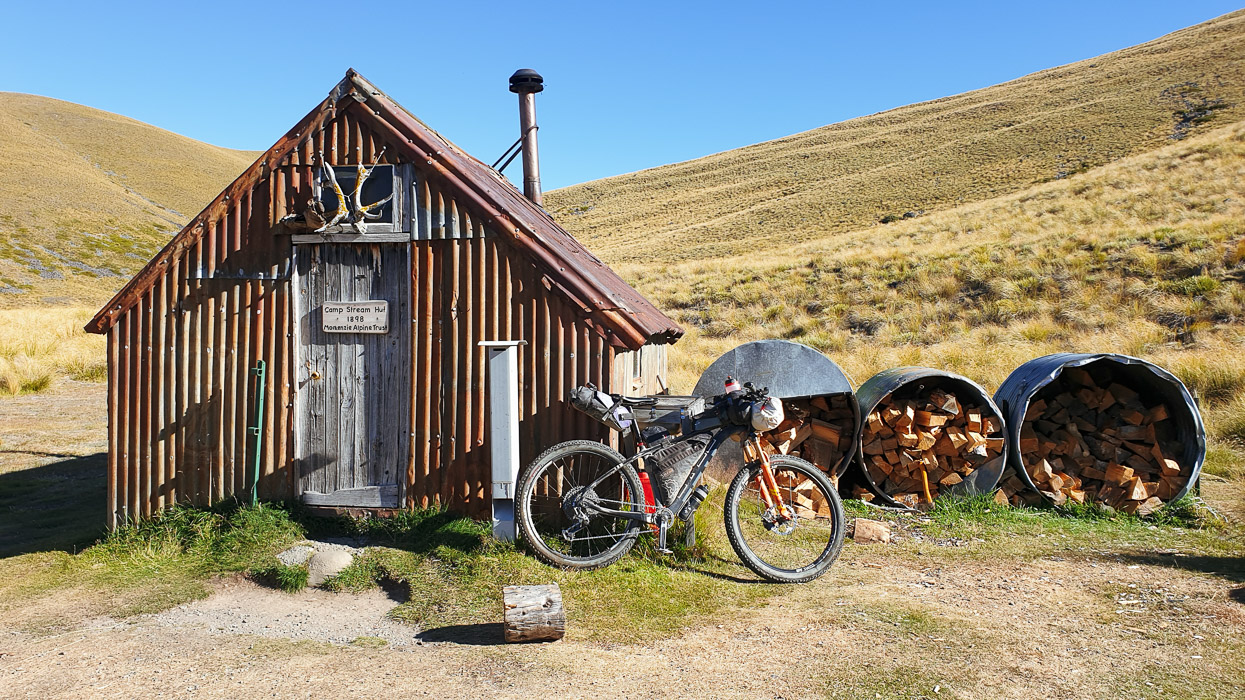
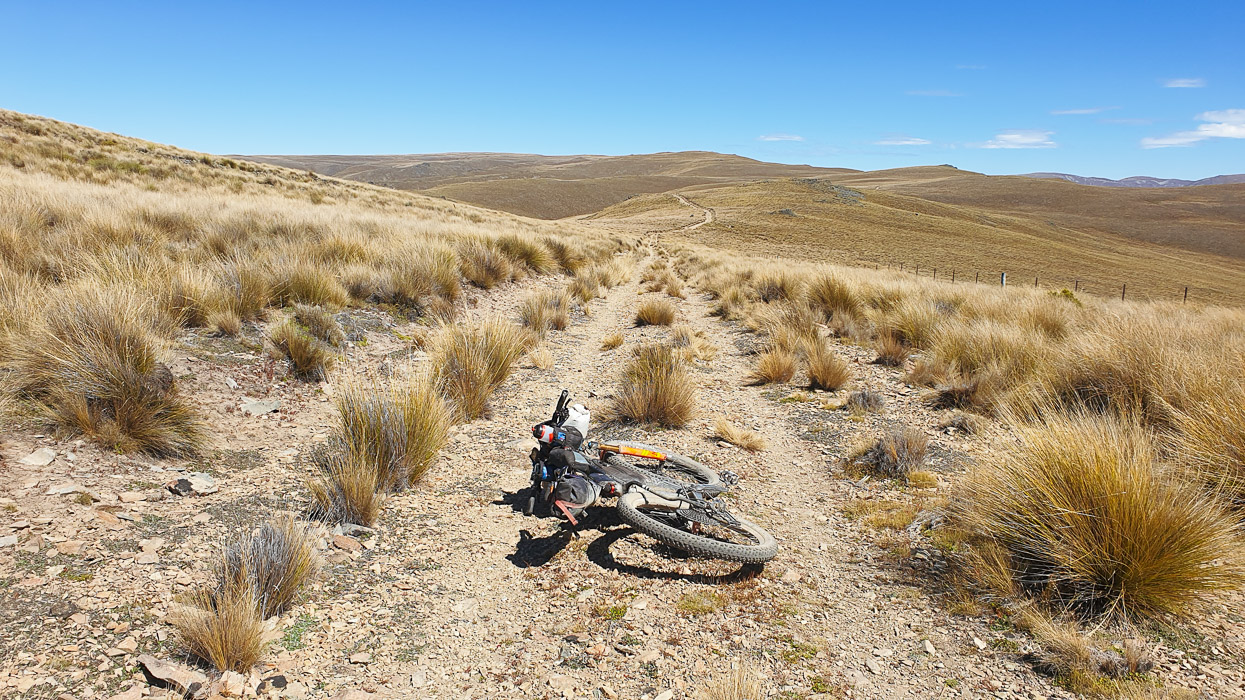
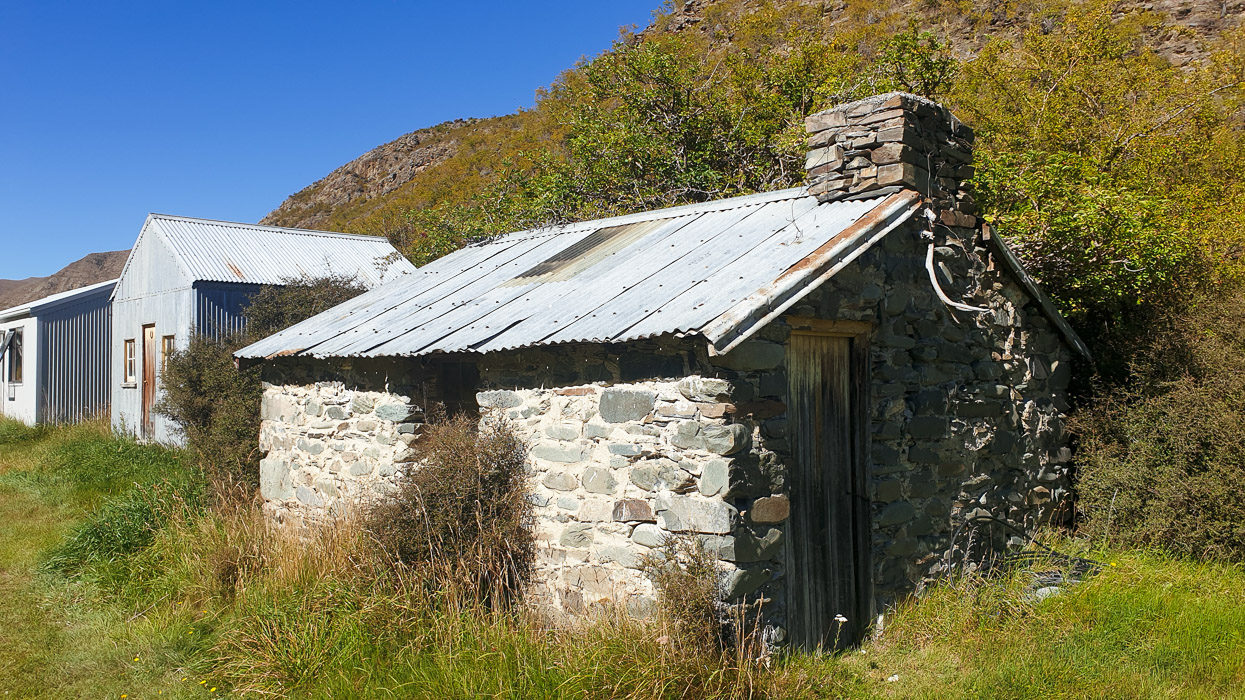
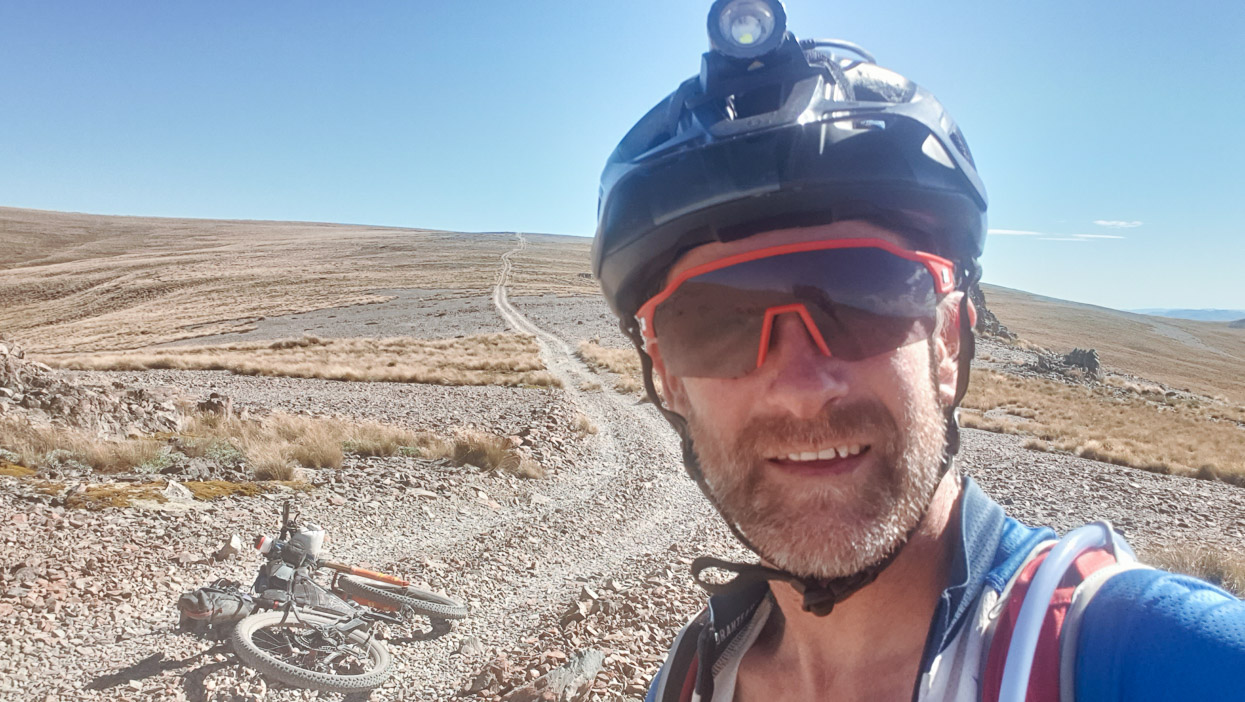
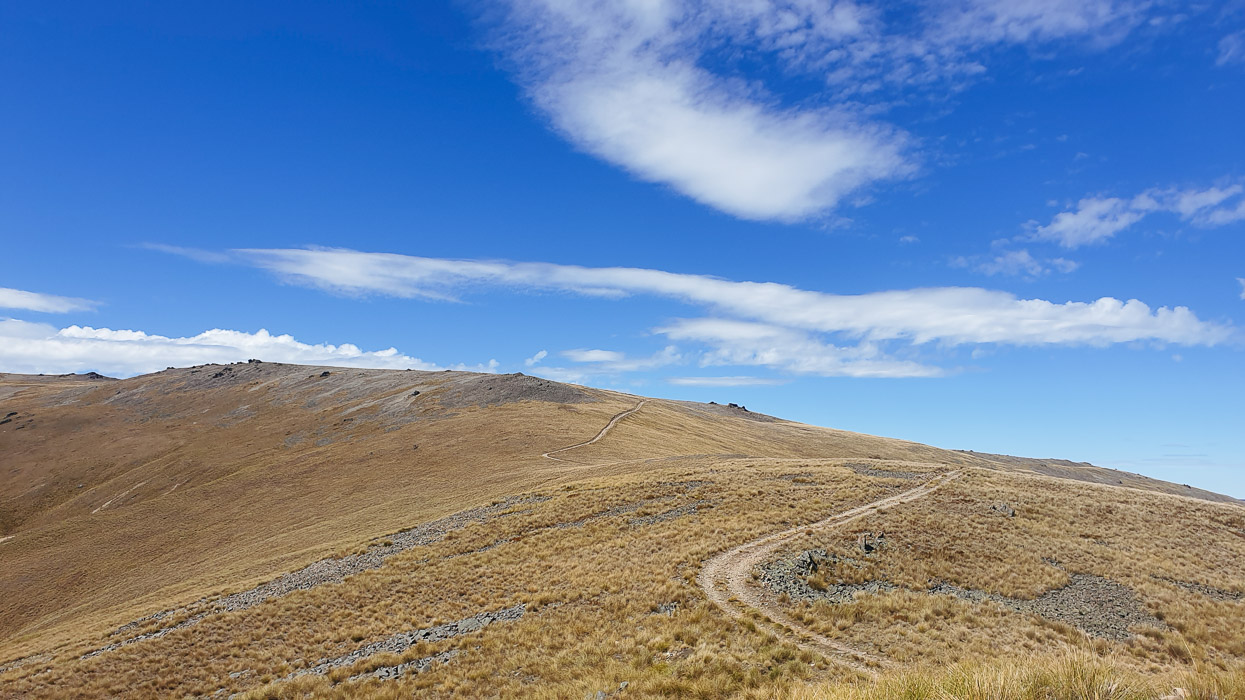
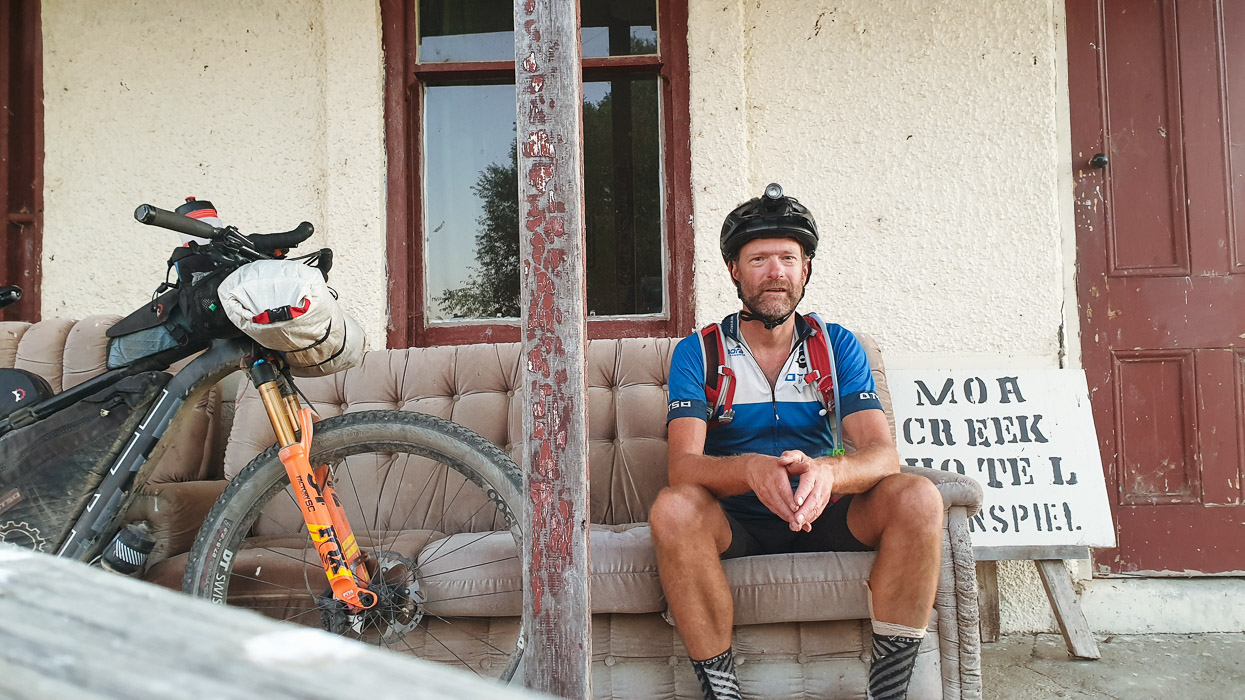
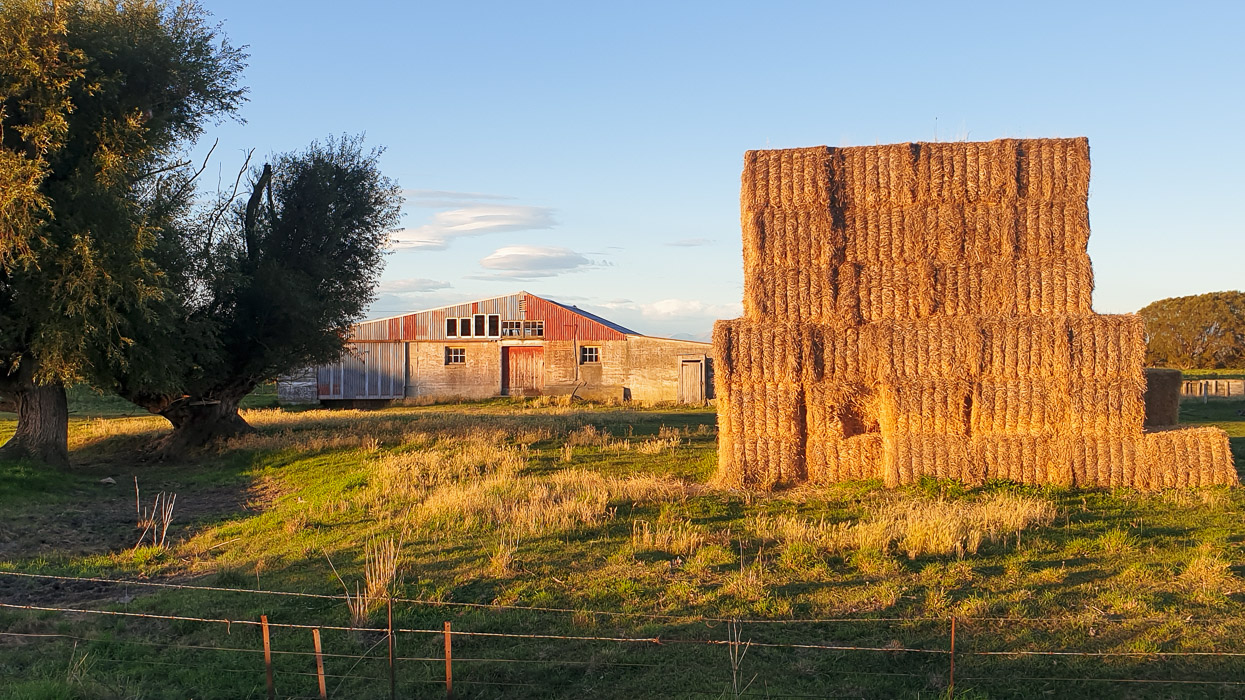
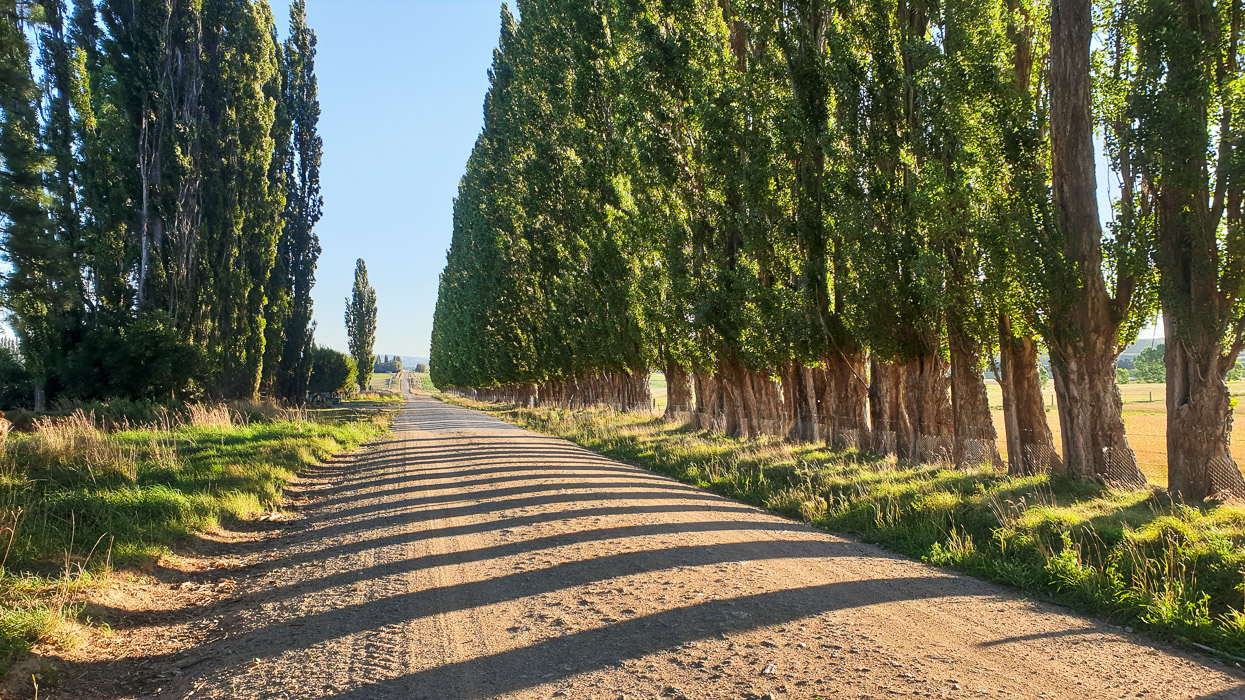
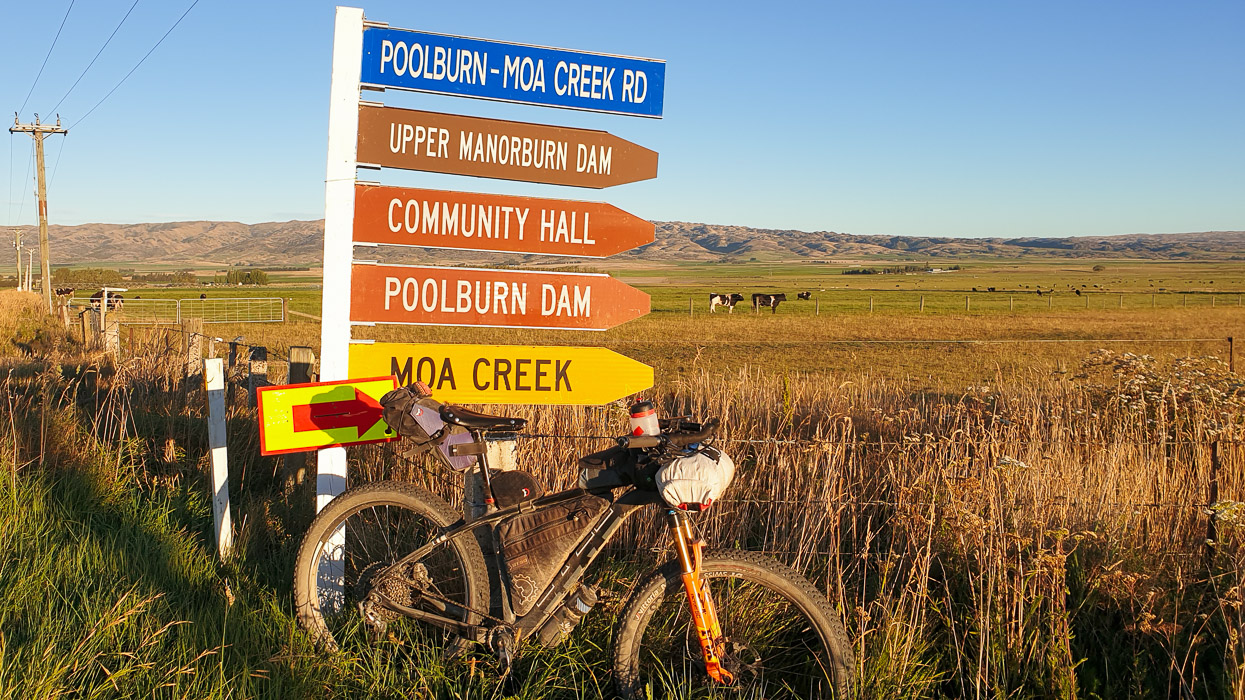
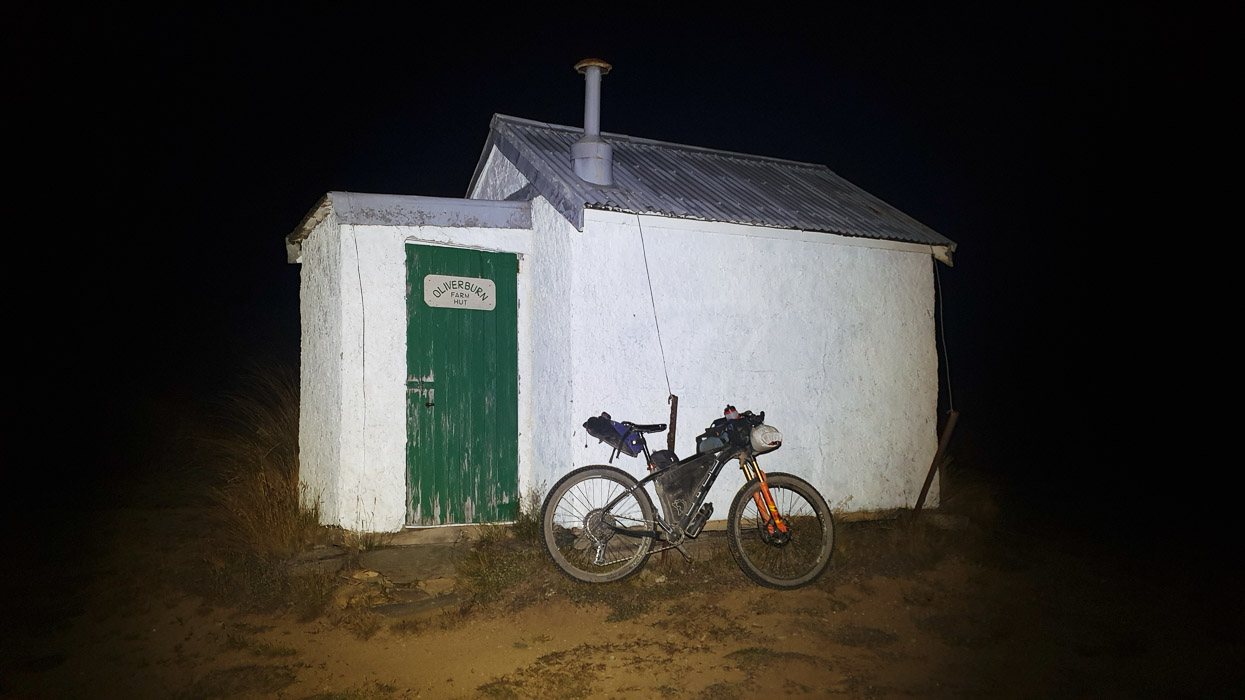
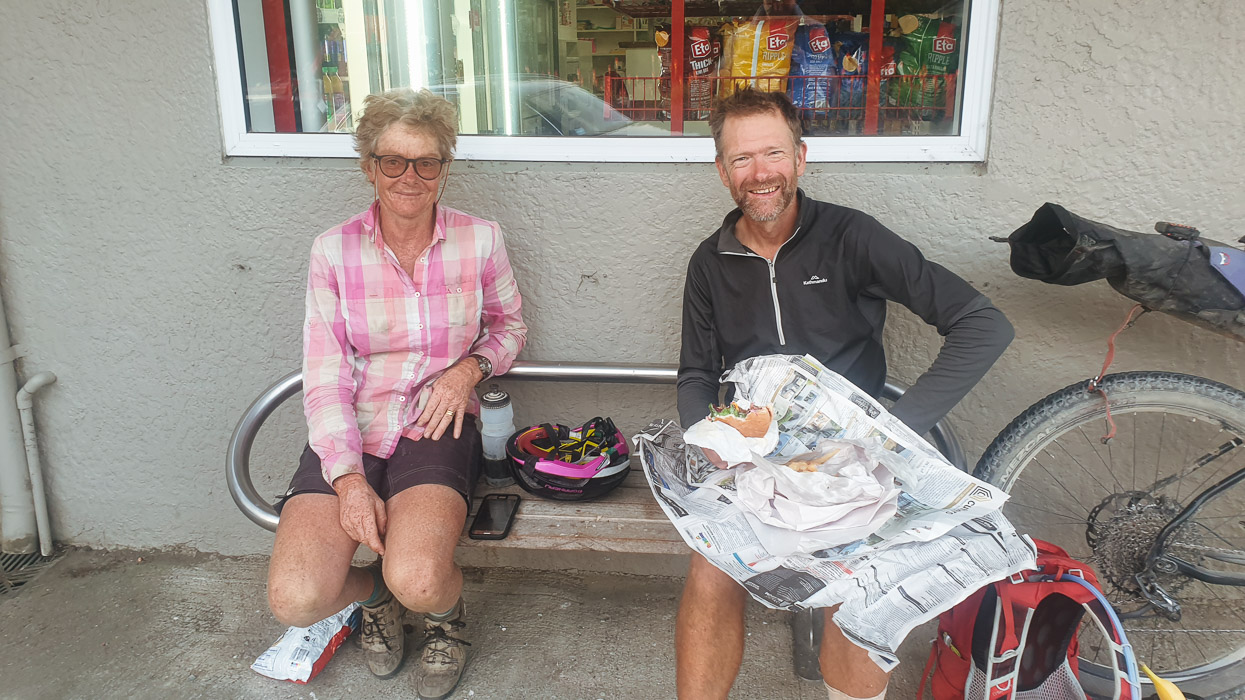
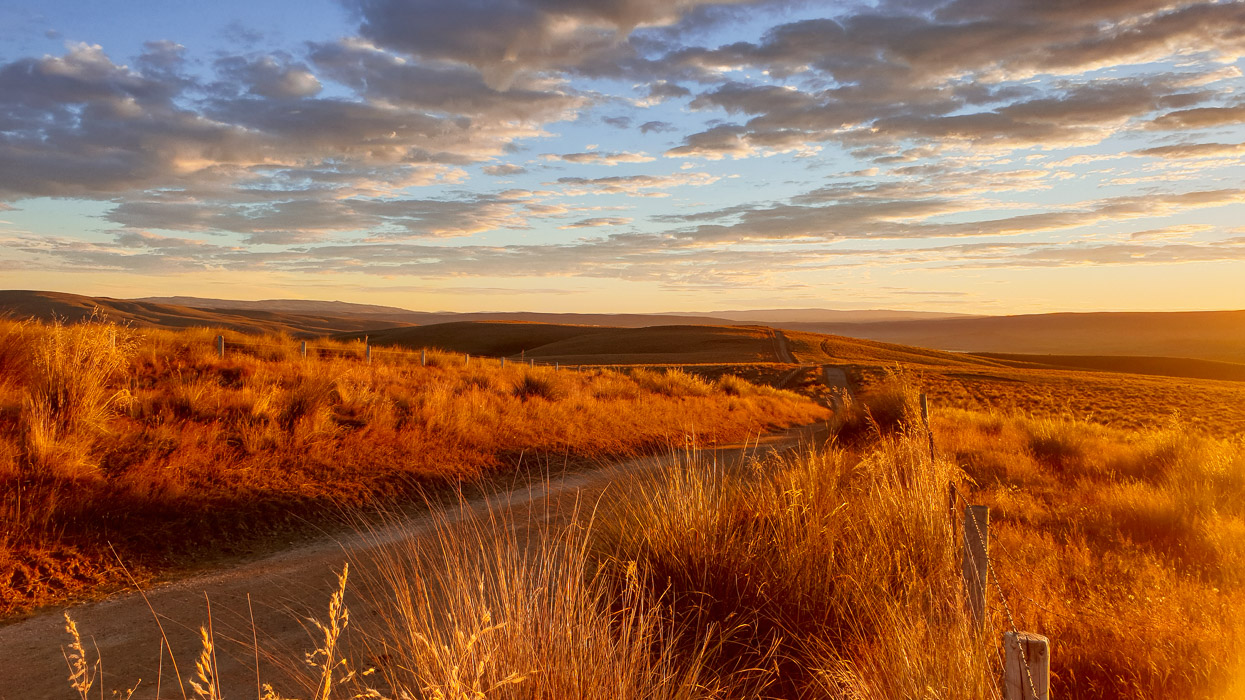
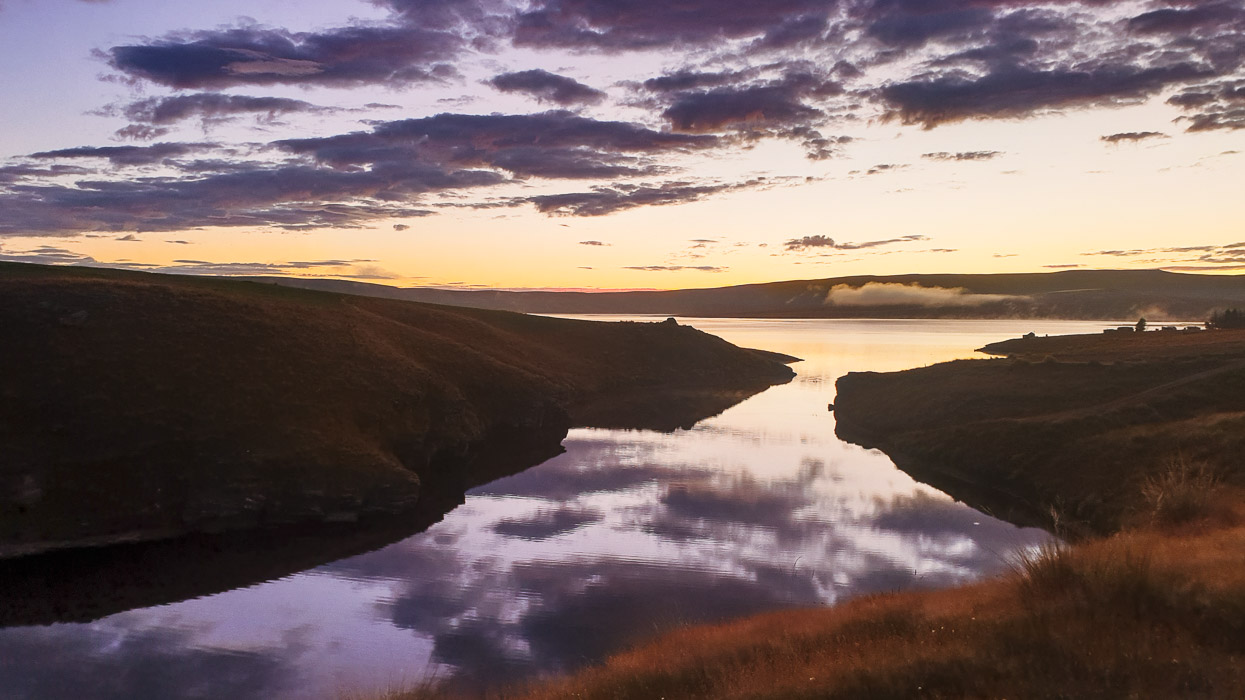
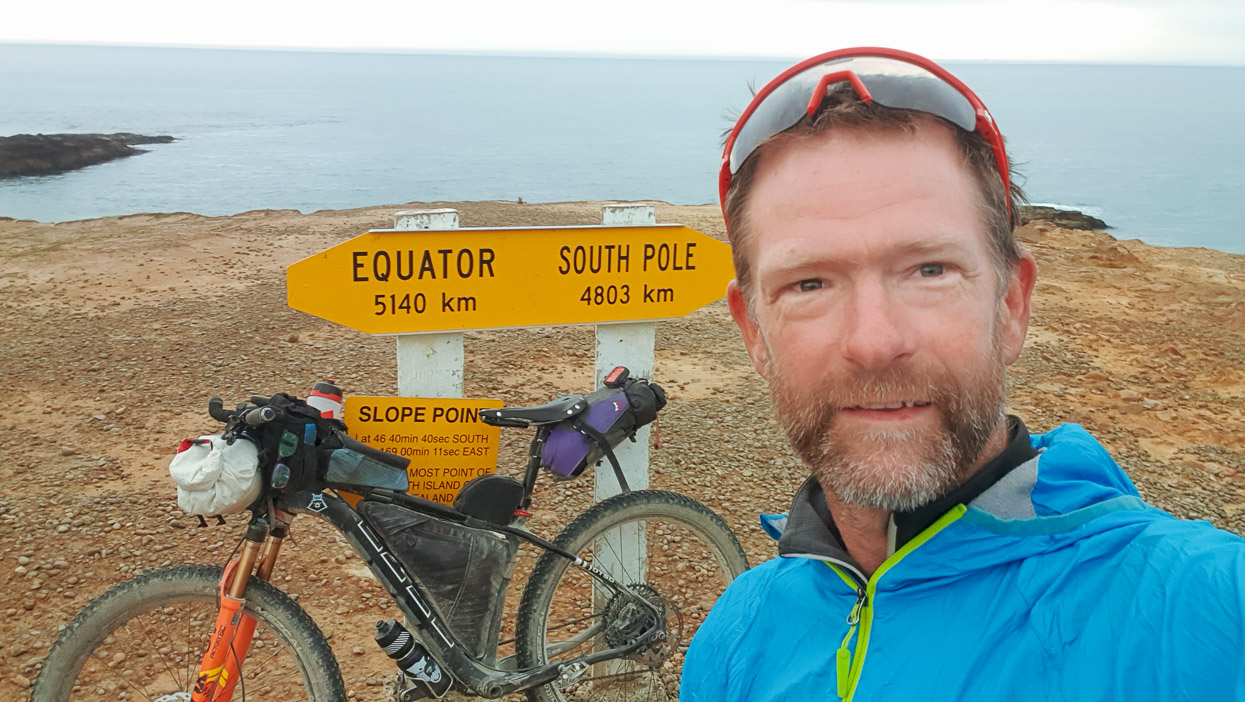
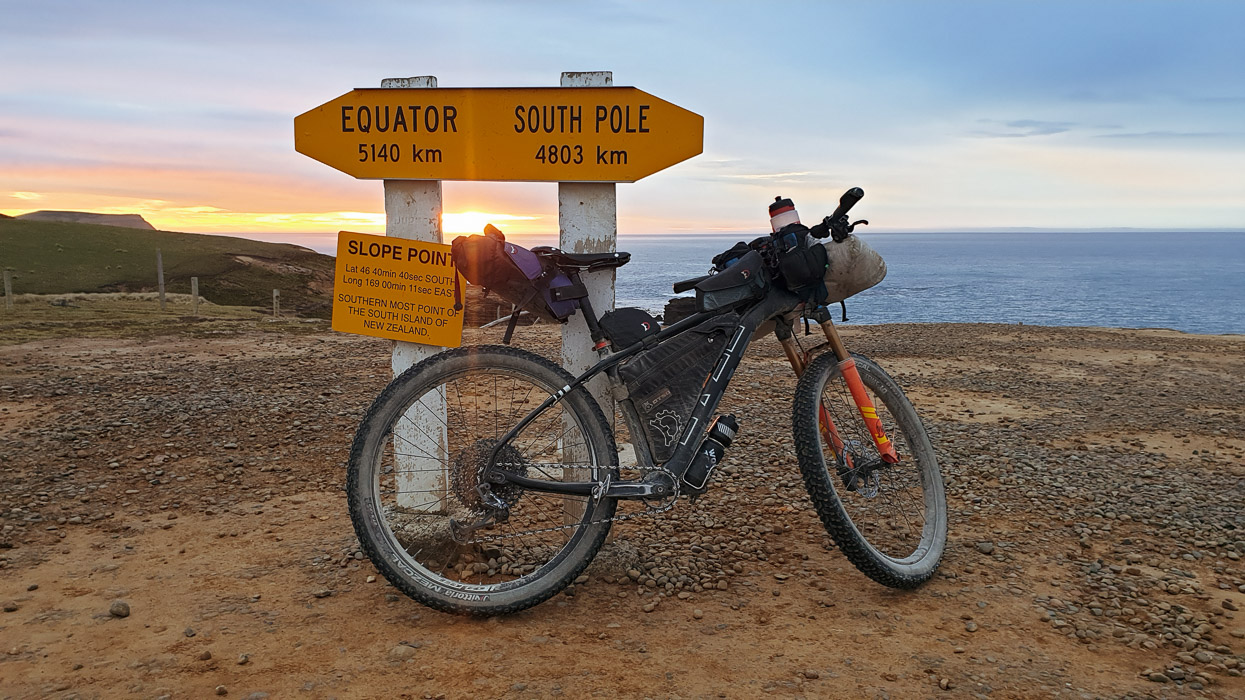
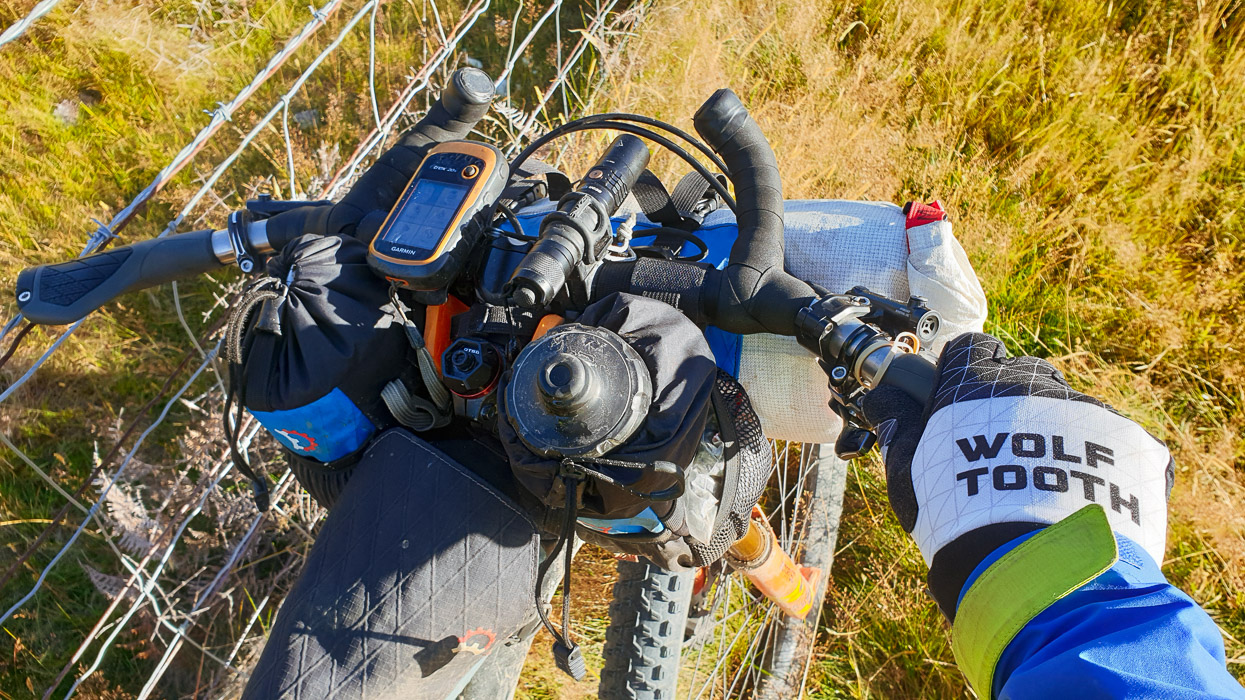
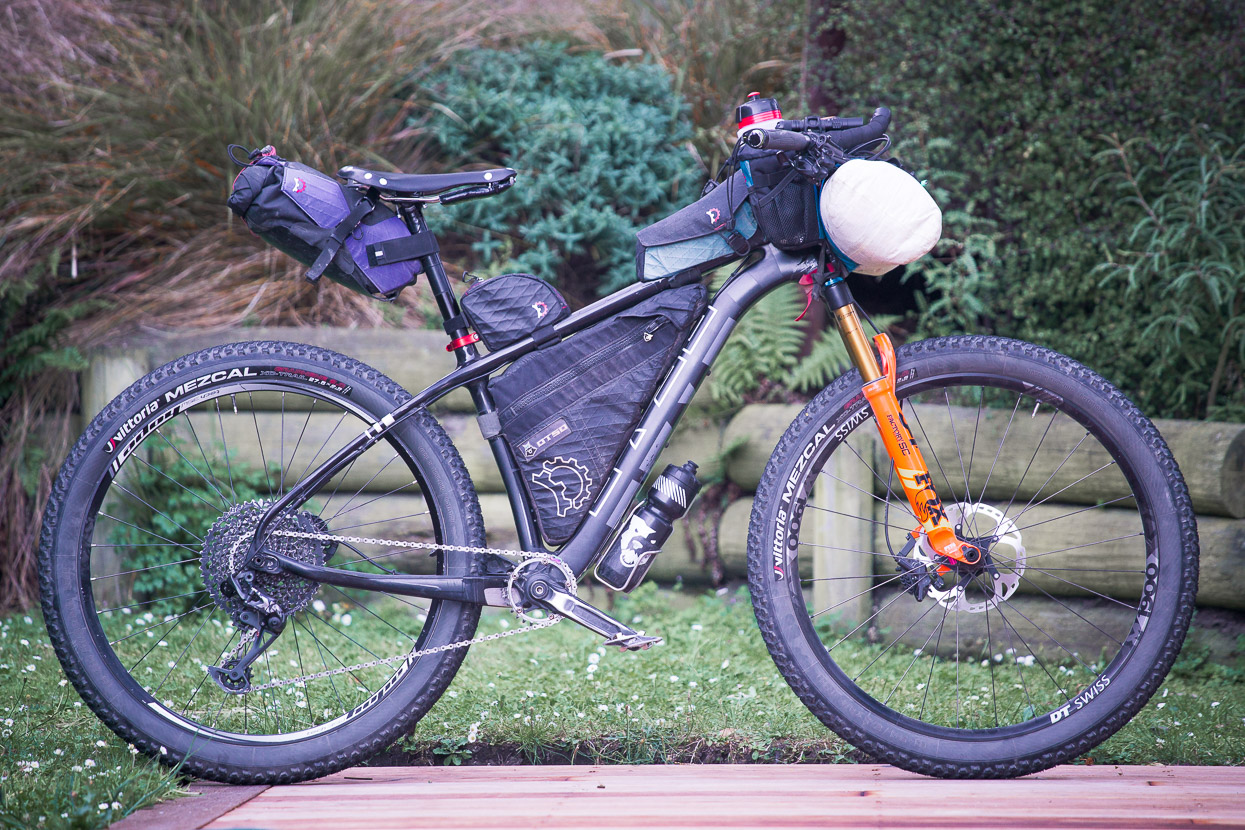
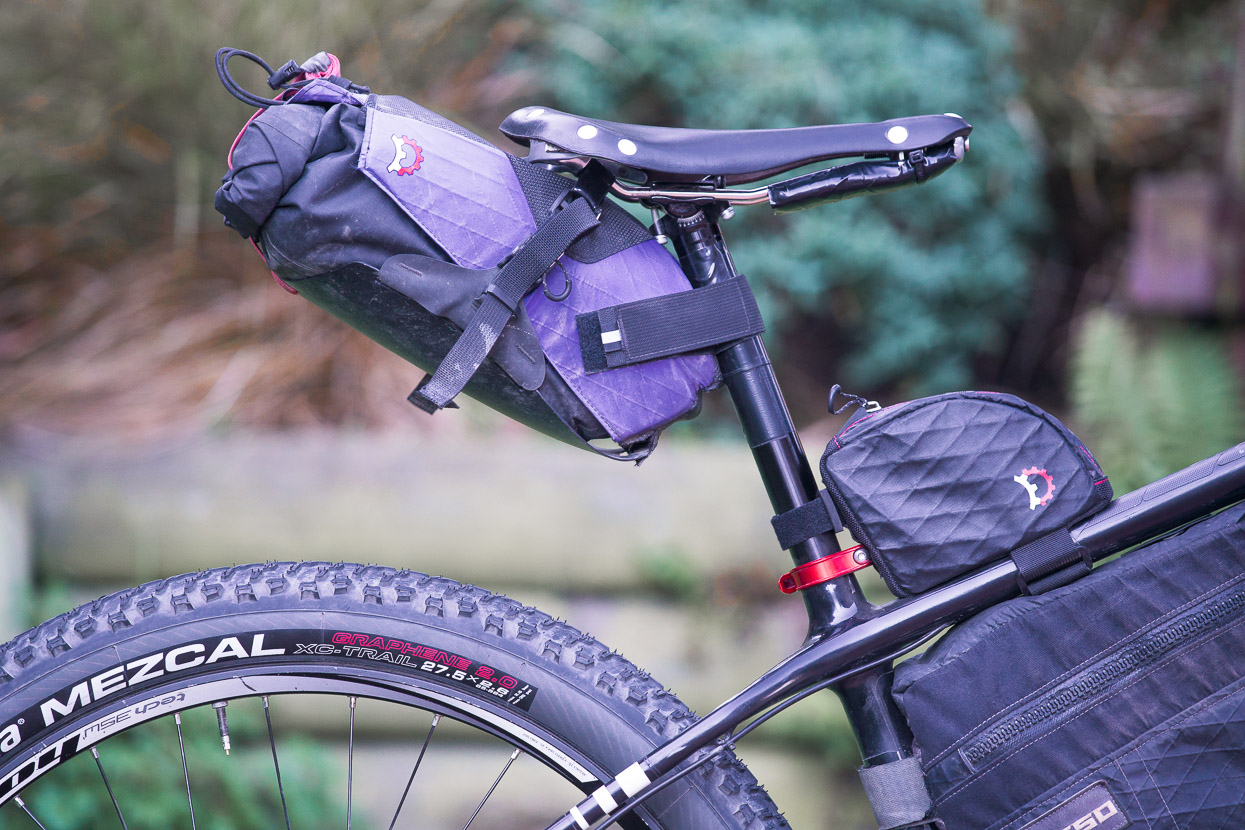
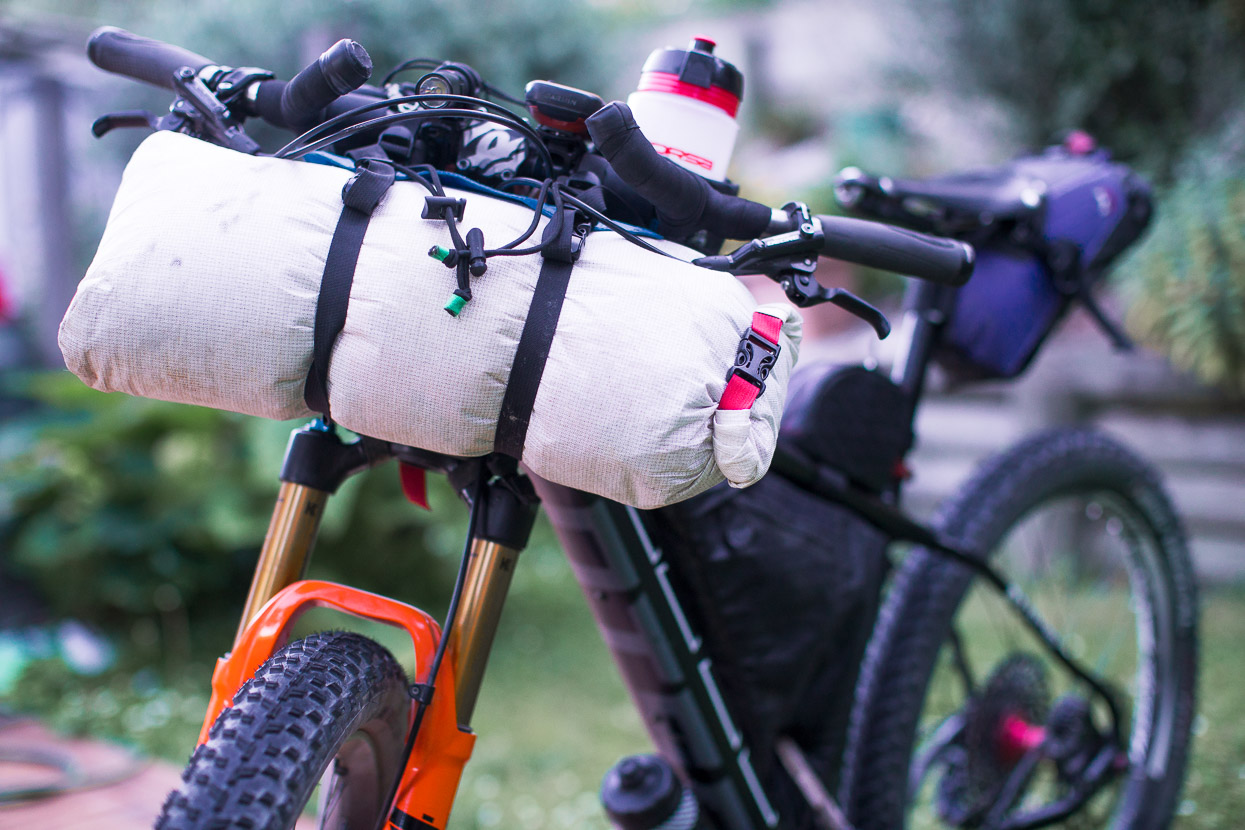
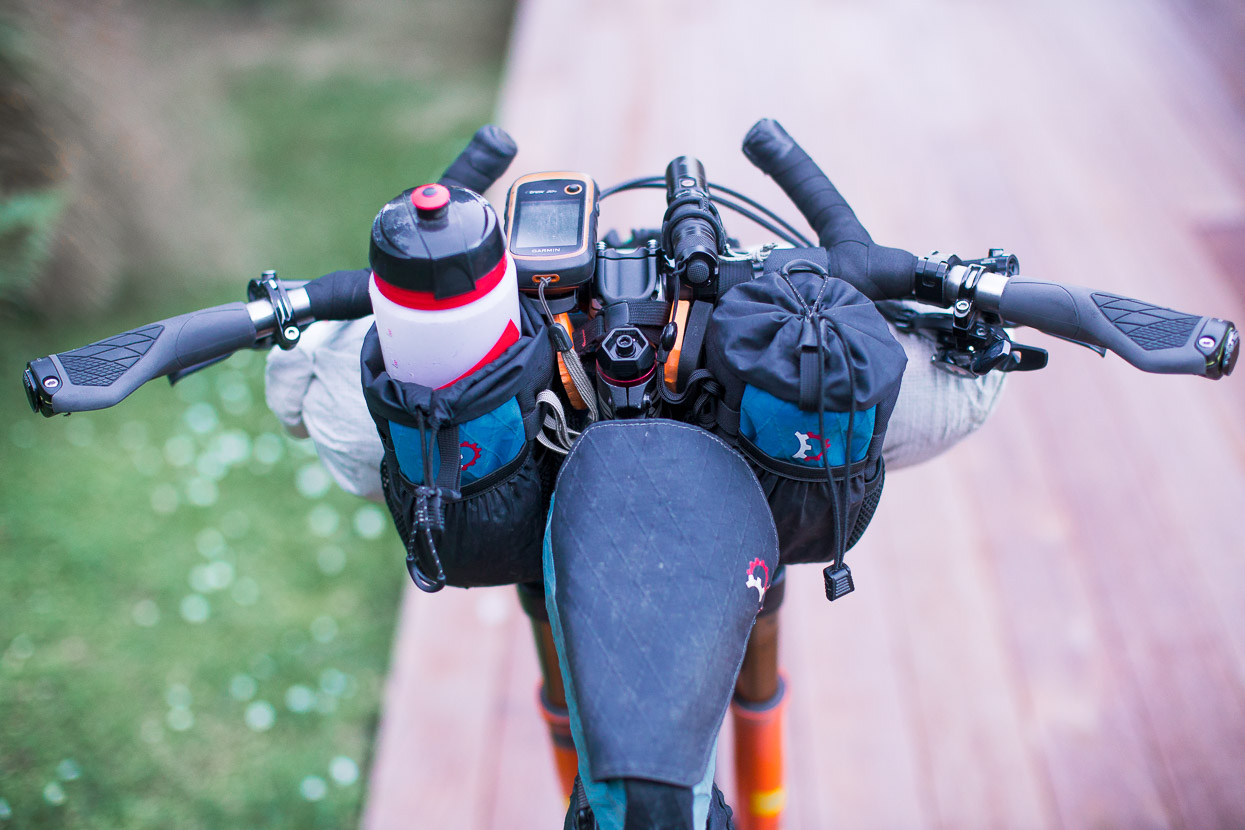
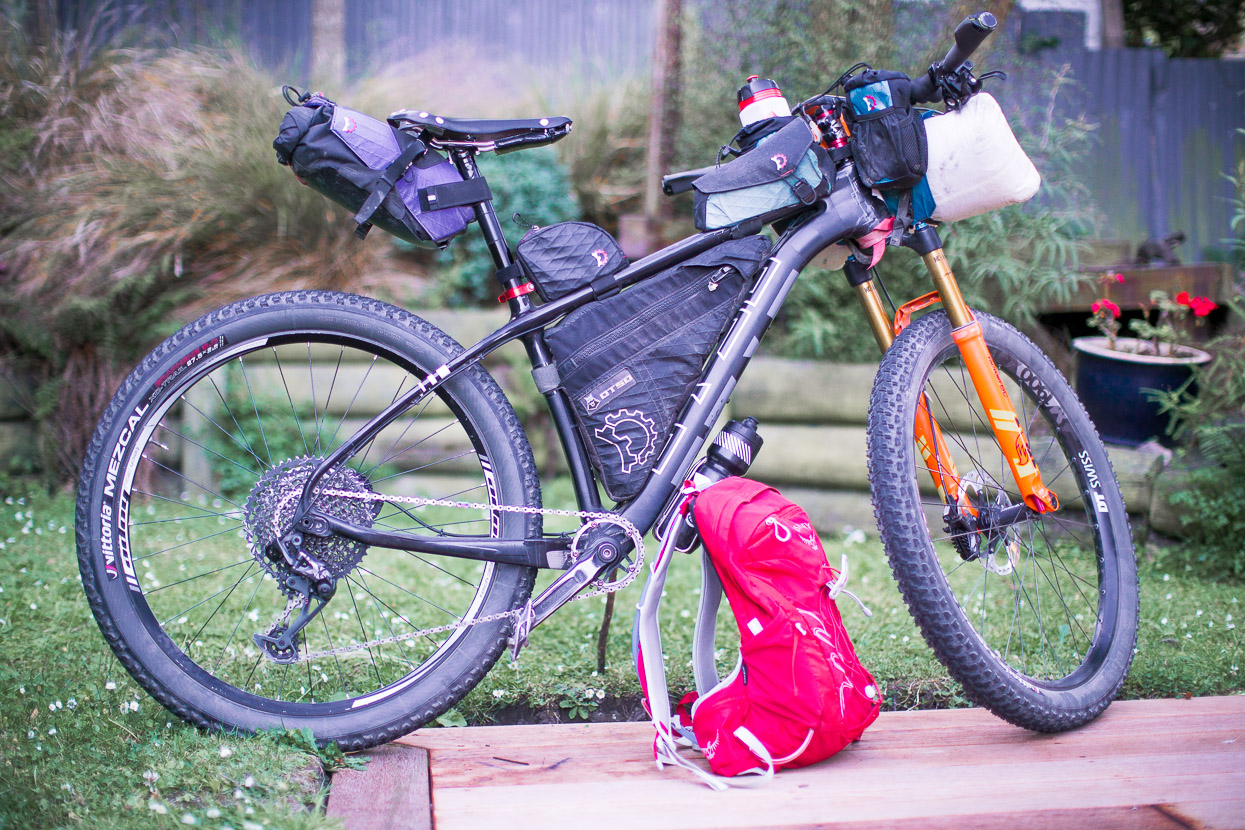
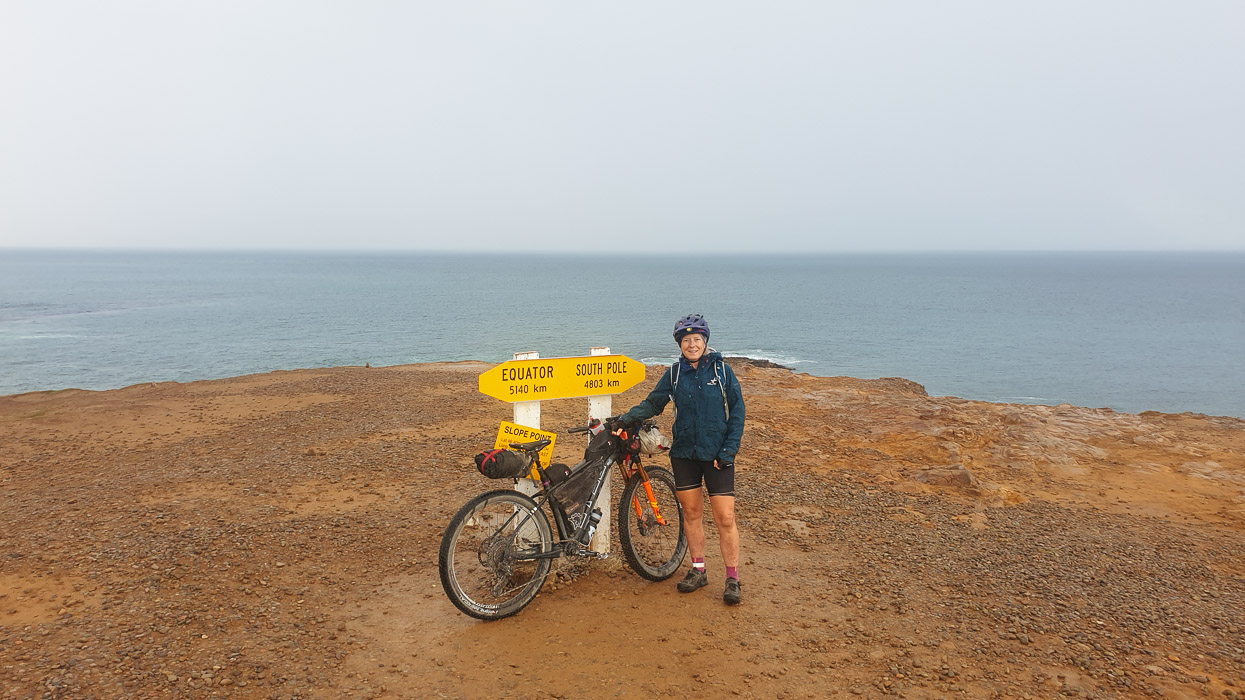
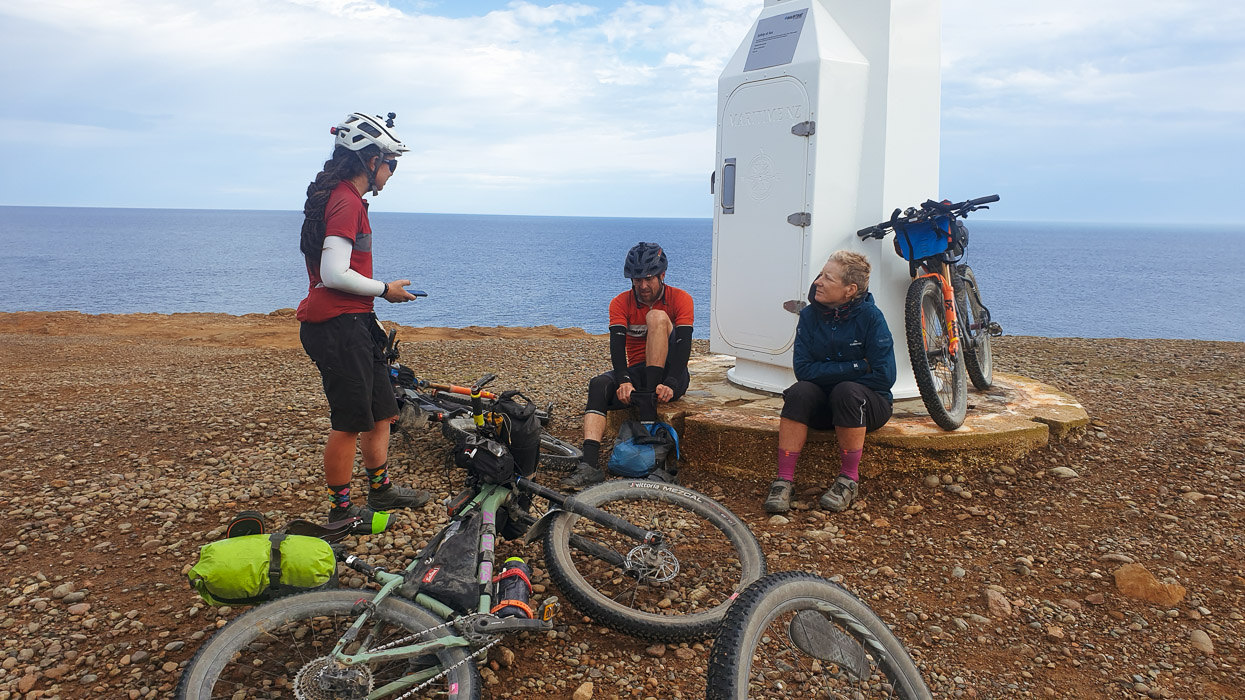
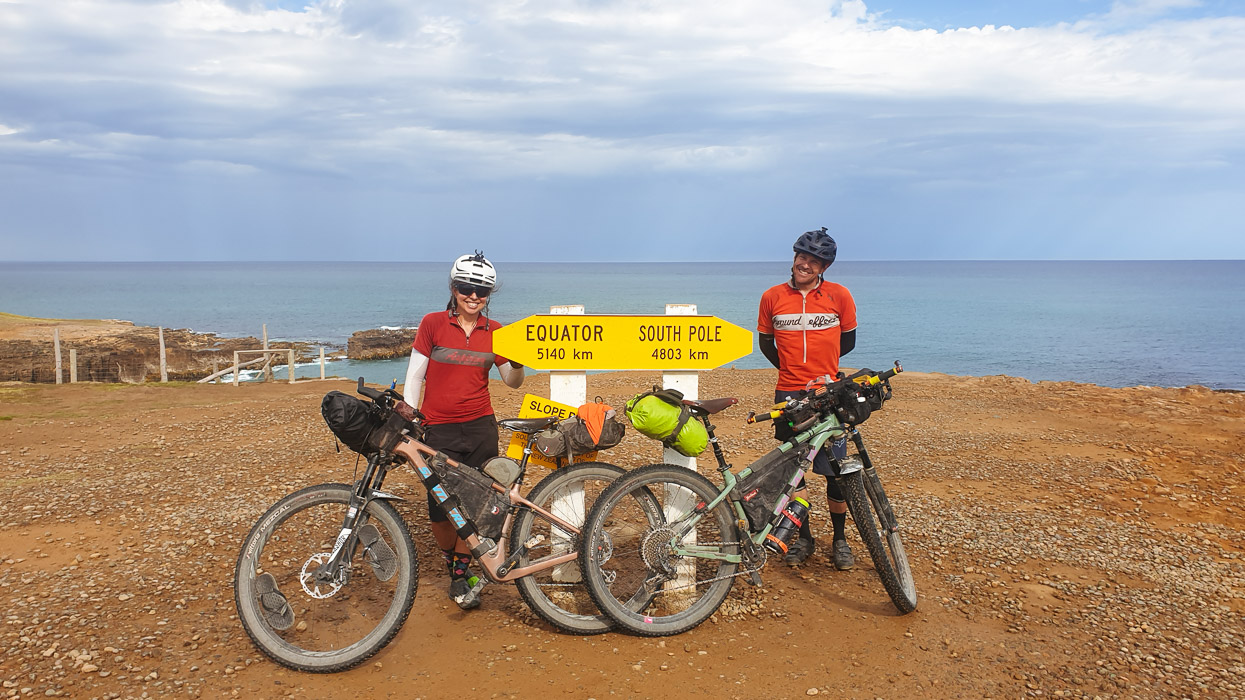
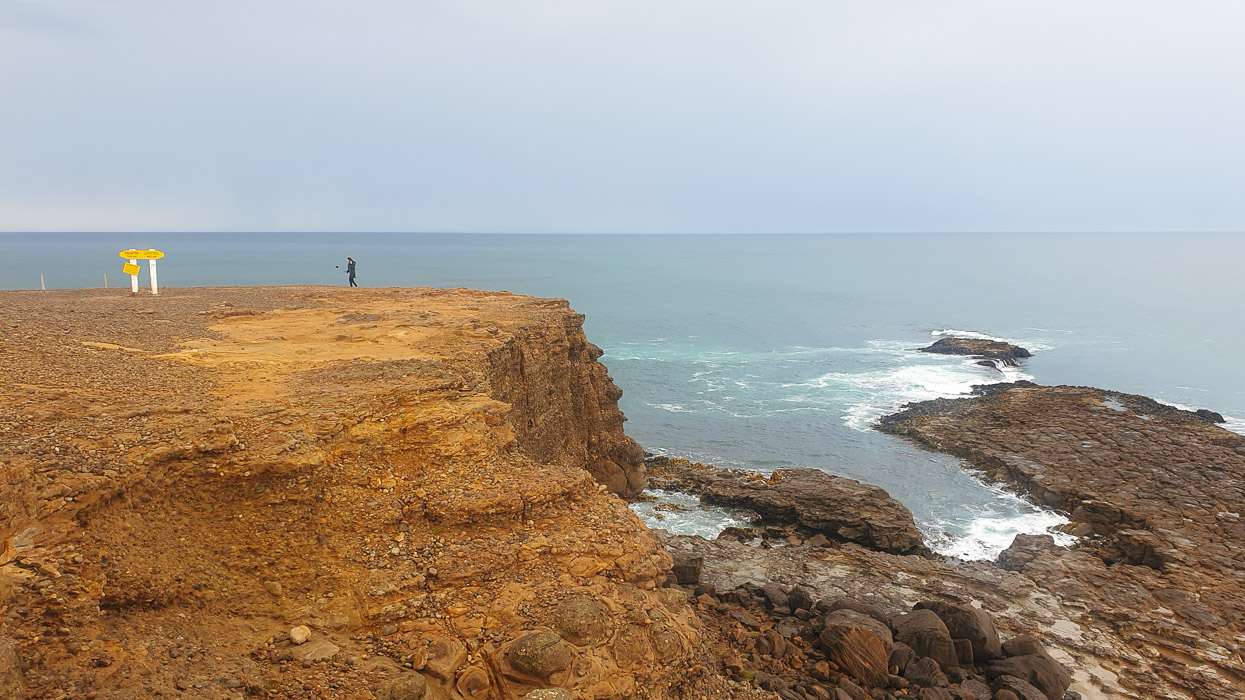





Amazing Mark. A thorough report. Admire you for pushing through and for your awareness of your body, mind and spirit. Well done.
Hi Mark,
Thanks for this wonderfully detailed race report. Well done on completing the event. Sounds quite hard but very rewarding. Thanks also for the gear list. Very helpful. My wife and I are heading away tomorrow for 3-4 weeks cycling the upper South Island. Real looking forward it.
Can you please share with us what food you typically eat in an event like this knowing you could be 3-5 days before next restock location.
How do you deal with carrying that amount of food and if it is the same for other long rides you have done?
Any tips and suggestions on food help would be great.
Cheers Mark,
Bryan (A bit fan and follower of you and Hana 🙂)
Finally got the time to sit and read your take on the TTW after being a dot watcher during the race. Well written Mark and, as usual, beautifully photographed. Felt like I was riding on your shoulder and what a ride!